
DISTRIBUTED ENERGY RESOURCES KEY to a low carbon future

WATER SEWER ELECTRICITY GAS Engineering, Construction & Maintenance www.utilitymagazine.com.au Issue #33, February 2022
Highlights from SYDNEY WATER’S INNOVATION FESTIVAL How cybersecurity regulatory changes will impact you

The world’s first and only CAT III 1500 V clamp meter
Whether it’s solar/wind farms, electric railways or battery banks – the Fluke 393 FC is designed for uninterruptable, high voltage DC environments.
• Measure safely with CAT III 1500 V rated clamp meter
• Thin jaw for access to cables in crowded combiner boxes
• Rugged construction & sturdy IP54 rated for outdoor use
• Work efficiently with DC power measurement, audio polarity & visual continuity
• Record, analyse & share results with Fluke Connect™ software

Learn more fluke.co/393FCU


FROM THE EDITOR
It’s strange to be writing this editor’s letter in 2022 – it feels like it was 2020 only yesterday. As this is the first issue of the magazine for this year, all of our contributors have naturally taken a future planning angle; looking ahead to what new innovations, projects and industry developments are in store for utilities. The big focus across water and energy is implementing digital technologies to increase efficiency, as well as the move to more sustainable and resilient systems.
All of these new technological innovations come back to data – what are we collecting, who has access to it, and how are we analysing it to actually give us valuable insights into operational decision making? Both the Centre for New Energy Technologies and Intelligent Water Networks explore this in our Big Data feature.
These questions tie in heavily with current energy transitions happening across the country. This edition takes a deep dive into these topics, looking at how we can maximise distributed energy resources (DER) using state estimation, flexible connection arrangements in solar, Horizon Power’s journey to net zero in regional WA, as well as comprehensive coverage of the major DER projects around Australia.
Over in the water sector, Sydney Water held its inaugural Innovation Festival recently which brought together water utilities and stakeholders to generate new ideas to solve key challenges. It

focused on six themes: the circular economy, liveability, water security, smart cities, customer experience and amplifying the voices of Aboriginal Peoples, and we have all of the highlights and outcomes from the event on page 56.
All of these digital technologies and new processes are a great step forward in increasing the productivity of the utility industry, but they all come back to one main purpose – customers. We are also featuring the latest processes the energy and water sectors are undertaking when it comes to elevating customer service and engagement.
One thing the Utility team and I are the most excited about this year is the prospect of in-person industry events coming back. A significant number of events that have been canceled or postponed over the last two years are set to run again in the first half of 2022, including WIOA, Energy Networks and Locate22, in addition to other planned events including Ozwater'22. I look forward to meeting some of you in person at these industry conferences.
I’m also excited to announce that Utility magazine will be running Digital Utilities again this year as a virtual event in June. Keep your eye on the Utility website and weekly newsletter for more announcements on the event soon, or reach out if you are interested in being involved.
Jessica Dickers Editor
Drop me a line at jessica.dickers@monkeymedia.net.au or feel free to call me on 03 9988 4950 to let me know what you think.
Don't forget to follow Utility magazine on social media - find us on LinkedIn, Twitter and YouTube.
UTILITY • FEBRUARY 2022 Editor Jessica Dickers Assistant Editor April Shepherd Journalists Annabelle Powell Lauren DeLorenzo Christopher Allan Design Manager Alejandro Molano Designers Danielle Harris Luke Martin Business Development Managers Rima Munafo Brett Thompson Marketing Manager Radhika Sud Publisher Chris Bland Managing Editor Laura Harvey Published by Cover image highlights our features on distributed generation, solar and customer experience. DISTRIBUTED ENERGY RESOURCES KEY to a low carbon future Highlights from SYDNEY WATER’S INNOVATION FESTIVAL How cybersecurity regulatory changes will impact you UTILITY MAGAZINE FEBRUARY 2022 WATER SEWER ELECTRICITY GAS Engineering, Construction & Maintenance www.utilitymagazine.com.au Issue #33, February 2022 Monkey Media Enterprises ABN: 36 426 734 954 C/- The Commons 36–38 Gipps St, Collingwood VIC 3066
(03)
welcome February 2022 ISSUE 33 1
P:
9988 4950 monkeymedia.com.au info@monkeymedia.com.au utilitymagazine.com.au info@utilitymagazine.com.au ISSN: 2203-2797

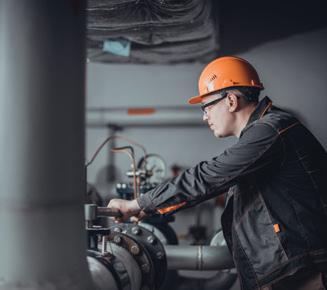



What pipe is most appropriate for different microtunnelling projects?
Pipe selection can make or break a project so to speak; the wrong pipe can make a project more difficult to complete, increase time and costs, or at worst, fail, while the right pipe will help reduce risk, enhance accuracy, reduce cost and improve the overall success of installation. But with a number of pipe materials available, how do you know which one is right for your application? This will come down to a number of factors – some of which have a greater impact than others – including ground conditions along the route of the pipeline, method of installation, budget, application type, deadline and specifications such as diameter.
2 CONTENTS Big data supporting the new energy paradigm 32 Combating network leaks with digital technology 34 Data innovations for the water industry 36 Charting a path for utility digital transformation 38 Identifying critical differences between Smart Water Metering and Smart Water ......................... 40 How amendments to the Security of Critical Infrastructure Act will impact your utility 42 Every year, organisations are spending more and more money on their security defences. But every year, we see the frequency and severity of cyber attacks against Australia continue to increase. SOLAR Flexible energy resources key to a low carbon energy future........ 44 The world’s only CAT III 1500 V current clamp 48 Transitioning to a water resilient Harbour City 50 Creating the future of water for councils and communities 54 Highlights from Sydney Water’s Innovation Festival 56 Fully automated iron measurements for cost-effective water analysis ............................. 58 The role of desalination in Australia’s changing climate ..... 60 Managing pressure in water networks using polymer valves 62
EnergyConnect: meeting the challenges of a remote environment ................................ 88 50 years of substation civil and cable works 90 Using ACB retrofit solutions to ensure stable power supply 92 CUSTOMER EXPERIENCE Yarra Valley Water elevating customer service with new technology .......................... 94 Customers at the centre of the energy sector 96 DRONES Eye in the sky helping Powercor manage network inspections 100 94 88 50 42 32 102 UTILITY • FEBRUARY 2022 WWW.UTILITYMAGAZINE.COM.AU SYDNEY WATER BIG DATA CYBER SECURITY
SWITCHGEAR

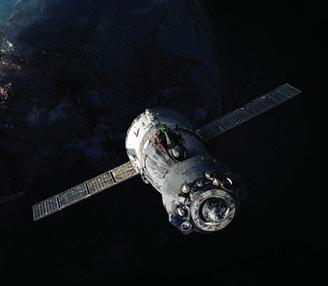

February 2022 ISSUE 33 3 80 In each issue Welcome from the Editor ������������������������������������������������������������������������������������������������������������� 1 A word from Energy Networks Australia ���������������������������������������������������������������������������������� 4 A word from WSAA ����������������������������������������������������������������������������������������������������������������������� 6 News briefs ������������������������������������������������������������������������������������������������������������������������������������ 8 Advertisers’ index �������������������������������������������������������������������������������������������������������������������� 104 Editorial schedule �������������������������������������������������������������������������������������������������������������������� 104 Implementing Victoria’s embedded networks ban 64 DISTRIBUTED GENERATION Maximising Distributed Energy Resources using State Estimation 66 Journey to net zero well underway in regional WA 68 Mapping the future of distributed energy resources ......................... 70 Satellites providing unparalleled accuracy in dam surveillance 74 Dams play a critical role in securing our water supply, so it’s vital that issues such as seepage – which threaten their integrity – are detected as early as possible. Here, Utility explores how Hunter Water has employed innovative satellite technology to increase the accuracy of its dam monitoring. Cadastre modernisation energises GIS ............................... 76 Managing utilities with aerial imagery .............................. 78 The importance of sewer rehabilitation 80 Sewer rehabilitation – the repair or renewal of an existing sewerage asset –has both short and long-term advantages for sound management of Australia’s wastewater networks. As asset operators continue to leverage the many benefits of sewer rehabilitation, here we consider some of the different projects occurring around the country, revealing how each project draws on a unique technical approach. Temporary solution for a wastewater plant 84 Weld-free repair offerings making waves in the industry 86 64 74 UTILITY • FEBRUARY 2022 WWW.UTILITYMAGAZINE.COM.AU EMBEDDED NETWORKS MAPPING, GIS AND SURVEYING SEWER REHABILITATION
STACKING UP – HOW DO WE COMPARE?
by Chris Gilbert, Senior Economic Advisor, Energy Networks Australia
Electricity networks in the National Electricity Market (NEM) are continuing to deliver more for less as demonstrated in the recently released Australian Energy Regulator (AER) 2021 Benchmarking reports.
But is benchmarking working to deliver the best transparency and outcomes for customers, and what can be done to improve the reliability and applicability of its results?
The reports detail each network business’ productivity using several inputs and outputs, including the amount of assets, operating expenditure (opex), reliability, number of customers, maximum demand, total energy delivered and how far electricity is transported. They include information up to 2020 for Victorian distribution networks, and 2019-20 for non-Victorian distribution and transmission networks, referred to collectively as 2020.
An increase in productivity from a customer perspective means either lower bills, improved services, or both. Productivity is an important metric for regulators that is used during revenue determinations to ensure that network businesses’ revenues reflect the efficient cost of service provision.
DELIVERING MORE FOR LESS
Overall, distribution and transmission network productivity increased by 1.2 per cent and 1.7 per cent in 2020 respectively, continuing the trend of steady improvements made since 2015 and 2016. Notably for both distribution and transmission networks, overall inputs reduced, and overall outputs increased in 2020 compared with 2019.
Interestingly, this is contrasted with a trending decline in productivity across the wider utility sector since 2017, where productivity has fallen by eight per cent. Economywide productivity also fell marginally over 2019 and 2020, presumably due to the pandemic. Electricity network companies seem to have navigated the period well in relative terms and have managed to avoid similar reductions.
PRODUCTIVITY OF NETWORKS, ECONOMY AND UTILITIES, INDEXED
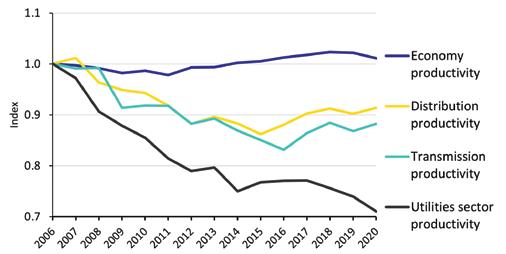
The long-term productivity trend for all distribution networks appears to be converging, meaning the gap between higher and lower performers is narrowing. The shorter-term trend across distribution and transmission networks is that networks with lower productivity are improving, pushing closer towards ‘middle of the road’ performers.
OPEX SAVINGS AND RELIABILITY IMPROVEMENTS LEADING OUTCOMES
Most distribution productivity increases in 2020 resulted from reductions in opex, contributing positively to productivity by 1.8 per cent. Opex savings have been the predominant driver of distribution productivity improvements since 2015, with 3.1 per cent contributions to productivity a year. Opex productivity has been increasing by 3.1 per cent each year, which all else being equal will lead to lower revenue allowances in the future.
DISTRIBUTION PARTIAL PRODUCTIVITY MEASURES, 2020 VS 2019

Transmission productivity improvements were led by higher reliability, recognised formally as lower unsupplied energy to customers. Smaller positive contributions to productivity were made by lower opex, fewer overhead lines and more customers.
4 A WORD FROM ENERGY NETWORKS AUSTRALIA
TRANSMISSION PARTIAL PRODUCTIVITY MEASURES, 2020 VS 2019

GETTING BENCHMARKING RIGHT FOR CUSTOMERS
Benchmarking can be one of multiple tools for regulators and customers to understand how network businesses have been performing, but like most measures, the results are only as useful as the appropriateness of the inputs and analysis.
There are also some differences in how networks treat their opex and capital expenditure, which has led the AER to release a separate consultation paper on the issue.
There are also issues with some econometric models that compare the relative efficiency of network businesses. These models assume that an increase in output can only be achieved with an increase in inputs, but when network businesses deliver more by using less, some of the models break.
The AER has an ongoing benchmarking development program looking at incremental improvements in data and methods, as well as focusing on specific issues such as those outlined above that could improve the reliability and applicability of benchmarking results. Improvements to the benchmarking program are highly sought after by industry.
MORE TO BE DONE
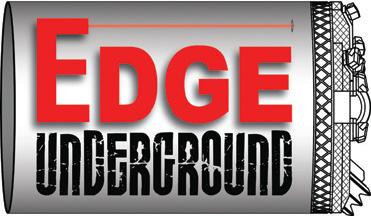
ABOUT US
Edge Underground is a precision microtunnelling contractor that operates in Australia and the USA. With a focus on innovative technology and expertise, Edge Underground designs and enhances the performance of trenchless equipment.

Productivity improvements delivered by network businesses are good news for customers, leading to improved service delivery or lower revenue allowances. Ensuring that benchmarking appropriately recognises the types of services customers value is in customers’ interest as benchmarking results are considered during revenue determinations. Addressing some of the underlying inconsistencies between benchmarking methodology and delivering network services in practice will be key during the AER’s benchmarking development program.
•

OUR SERVICES
Microtunnelling
Pipe Jacking
Thrust Boring
Laser Tunnel Boring
•
•
•
•
Box Culvert Jacking
Canopy Tubes GUIDED BORING SPECIALISTS * quotes@edgeunderground.co 8 www.edgeunderground.co ( JACKED 1300 522533
•
A WORD FROM WSAA
WATER UTILITIES UNITE IN RACE TO ZERO
The IPCC Assessment Report 6 describes the current outlook on climate change as a ‘code red for humanity’. Over the last few years, Australia and New Zealand have seen record breaking droughts and floods. Urban water utilities and the communities they serve are no strangers to the huge impact climate change is already exerting on water supplies.
Together with Water UK, 13 Australian and one New Zealand water utilities have joined the UN-led Race To Zero campaign, adding their voice to the global message that industry is tackling climate change, alongside major UK water utilities.
Australian and New Zealand utilities have joined their counterparts from the UK who have also pledged to reach net zero emissions by 2050 or earlier, with interim targets within the next decade. Combined, these utilities serve over 72 million people in Australia, New Zealand and the UK.
The 14 participating utilities are:
• Barwon Water
• Coliban Water
• Gippsland Water
• Goulburn Valley Water
• Icon Water
• Melbourne Water
• SA Water
• South East Water
• Southern Rural Water
• Sydney Water
• Unitywater
• Urban Utilities
• Watercare (New Zealand)
• Yarra Valley Water
Globally, water use, storage and distribution are responsible for around 10 per cent of global greenhouse gas (GHG) emissions. Water services also produce around 5-8 per cent of global methane emissions. The water industry has a central role to play in reducing emissions, but is also in a unique position to produce renewable energy.
In joining the Race To Zero pledge, the industry is showing its leadership and commitment to mitigating the impacts climate change. Many utilities are already early adopters of wind, solar and waste to energy technology to power their infrastructure.
CURRENT INNOVATIONS
In addition to these 14 utilities from Australia and New Zealand, there are many other water utilities who are well on their way to contributing to a net zero future, and may join the Race To Zero campaign in the coming months.
The urban water industry is at the cutting edge of many innovations to reduce its carbon footprint, such as producing renewable energy from food waste, harvesting the valuable resources that can be recovered through wastewater treatment,

producing green hydrogen and ammonia which can be used as green fuels, using significant land corridors and reservoirs for solar panels, and transitioning to electric vehicles.
Some facts about the collective impact of the 14 Australian and New Zealand water utilities who have joined the Race To Zero include:
• They serve over 18 million customers
• Total of 160,000km of water and wastewater pipelines
• Total of 354 treatment plants
• Have pledged to reach net zero by 2025 to 2050
• Total net emissions: 847,637tCO2e*
• Total electricity use: 1,199,192 MWh*
• 175MW of existing solar assets
• 220MW of planned solar assets
The Race To Zero is a United Nationsbacked global campaign rallying non-state actors – including companies, cities, regions, financial and educational institutions – to take rigorous and immediate action to halve global emissions by 2030 and deliver a healthier, fairer zero carbon world.
*Some 2019/20 and some 2020/21 data

6 UTILITY • FEBRUARY 2022 WWW.UTILITYMAGAZINE.COM.AU
Untap the sustainability potential of digitising your network. ™

Gain real-time visbility of your water and wastewater networks with the NEW Captis Version 1.2. Your complete IoT monitoring and measurement solution - device, cloud, connectivity.
1800 646 828 | miot.com.au

The Marinus Link Interconnector, a proposed project set to run between Victoria and Tasmania, has passed a major milestone – the $3.5 billion project submitting Federal and Victorian environmental referrals.
Project Marinus involves approximately 255km of undersea High Voltage Direct Current (HVDC) cable and approximately 90km of underground HVDC cable.
The project has made submissions for project assessment under:
$3.5B MARINUS LINK
INTERCONNECTOR REACHES MAJOR MILESTONE
Commonwealth Environment Protection and Biodiversity Conservation Act (EPBC Act) Victorian Environmental Effects Act (EE Act)
The current target date for commissioning and commercial operation of the first 750MW stage is 2027-28, with the commissioning and commercial operation of the second 750MW stage currently scheduled for 2029-30.
Marinus Link will cut at least 70 million tonnes of CO2 by 2040, the equivalent of taking approximately half a million cars off the road.
Upon review of the applications, both the Federal Minister for the Environment and the Victorian Minister for Planning will decide if further environmental assessments are required.
Marinus Link General Manager, Bess Clark, said, “Marinus Link is committed to sustainable development, and is following robust environmental, land use planning and cultural heritage assessment standards to minimise impacts that the project may create.
“We understand the importance of preserving the natural environment and protecting other values that communities have. We are invested in working closely with local residents, landowners, Traditional Owners and businesses to manage concerns and to listen to and learn from the local community.”
The Australian Energy Market Operator (AEMO) and the Federal Government have declared Marinus Link a national priority project.
The process for assessing Tasmanian environmental and planning matters will be determined in due course.

Innovative Water Solutions
WATER TECHNOLOGIES
Through its innovative solutions, Veolia Water Technologies enables industry, local authorities and citizens to optimize their use of resources for more efficient, environmentally-friendly and socially responsible outcomes.
We understand the importance of increasing the value of water and we do so by supplying high quality water, treating and reusing wastewater, producing and/or recovering energy, extracting raw materials and capitalizing on valuable byproducts.
www.veoliawatertechnologies.com.au
UTILITY • FEBRUARY 2022 WWW.UTILITYMAGAZINE.COM.AU 8
© Veolia Photo Library
NEWS
WWW.ACCESS DETECTION .COM .AU SOLUTIONS TO YOUR UTILITY PROBLEMS
• TELSTRA, NBN & DBYD COMPLIANT
• IMPROVED PERFORMANCE THROUGH NEW HARDWARE UPDATES
• TELSTRA, NBN & DBYD COMPLIANT IMPROVED PERFORMANCE THROUGH NEW HARDWARE UPDATES
• STANDARD LITHIUM ION BATTERIES IN RX & TX
• STANDARD LITHIUM ION BATTERIES IN RX & TX
• STANDARD PATHLINK RECEIVER TO TRANSMITTER COMS
• STANDARD PATHLINK RECEIVER TO TRANSMITTER COMS
• STANDARD PASSIVE MODES INCLUDING PASSIVE HARMONICS
• STANDARD PASSIVE MODES INCLUDING PASSIVE HARMONICS HIGH POWERED 12WATT

• HIGH POWERED 12 WATT TRANSMITTER
ANTENNA ARRAY
• PROFESSIONAL CLASS LOCATOR WITHOUT THE HIGH PRICE
PROFESSIONAL CLASS LOCATOR WITHOUT THE HIGH PRICE

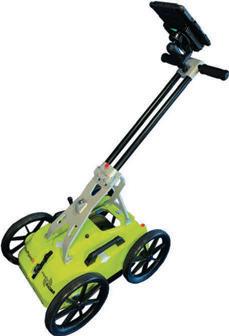
NEXT GENERATION DUAL FREQUENCY SYSTEM SEE MORE CLEARLY
• COMPACT AND LIGHTWEIGHT BUT TOUGH DESIGN
• LARGE WHEELS FOR ROUGH TERRAIN ABILITIES
• VIEWPOINT ACQUISITION, SOFTWARE MADE EASY
• NO GIMMICKS JUST GOOD OLD FASHION PERFORMANCE
• SUPERIOR UTILITY DETECTION GPR SYSTEM FOR PROFESSIONALS
Raptor 3D GPRAmly
Raptor antennas offer a flexible way to configure multi-channel 3D GPR arrays from as few as 4-channels up to 30-channels as standard, or larger bespoke solutions upon request. Raptor antennas use modern real-time sampling technology to support high-speed and high-quality 3D data acquisition at speeds up to 130 km/h at 5 cm point intervals. Backed by Condor, our new 3D GPR processing and visualisation software, Raptor is a highly productive end-to -end 3D subsurface mapping solution.




Locate & Map Utilities Fast
• REDUCE RISK AND COSTS
• BOOST PERFORMANCE AND IMPROVE WORKFLOWS
• MINIMISE FIELD TIME AND OPTIM ISE DATA PROCESSING
• SIMPLIFY GPR DATA INTERPRETATION FOR MORE
• EFFECTIVE DECISION MAKING
• FLEXIBLE AND MODULAR ANTENNA CONFIGURATIONS
• ALLOW SWITCHING BETWEEN VEHICLE-MOUNT OR
• PUSH-CART CARRIERS
NEWRycom Pathfinder PR0+V3
I I ' •• �..,..~:·__.:._,'-
ACCESSDETECT(-N
PinPointR from Impulse RadarGPR
-impulse:.,� lmpulseRadar defines GPR
DIGITAL UTILITIES
RETURNS IN 2022
Utility magazine’s Digital Utilities conference will be held in June and once again bring together water and energy utility CEOs, CIOs and digital teams to exchange vital industry information. This year’s conference will run virtually, in addition to a live awards ceremony to present the winners of the Digital Utilities awards.
Digital Utilities 2022 will dive deep into some of the critical challenges and focus areas for the sector, and provide delegates with genuine learning opportunities from some of the best and brightest minds across Australia.
This will be the fourth iteration of the conference and will help delegates keep up-to-date with the latest trends and developments in digitisation.
Attendees will be able to enjoy the entire event from the comfort of their homes or offices, but for those who want to get extra value from meeting up with peers in the real world, there will also be the live networking awards event to make new connections and catch up with like-minded colleagues.
Dates and programs to be announced shortly. Keep an eye on the Utility magazine website and newsletter for updates, or visit www.digitalutilities.com.au for information on previous Digital Utilities events.


SMARTER INSIGHTS BETTER OUTCOMES
Make years of project knowledge work for you by leveraging key insights. You’ll improve outcomes with better scope, cost and schedule certainty.

UTILITY • FEBRUARY 2022 WWW.UTILITYMAGAZINE.COM.AU 10 NEWS PROVEN PROJECT CERTAINTY
INEIGHT.COM 20211201_ADV_H221_Collage_Male2_SmarterInsights_185x125_v1.indd 1 12/1/21 9:08 AM
2022
EXCELLENCE – MADE TO LAST
WE DELIVER SOLUTIONS
Mobile, stationary or submerged – Börger configures and builds each rotary lobe pump in line with the requirements of the specific application.
The application options of Börger pumps have expanded with the new B BLUEline Nova rotary lobe pump. The BLUEline Nova pump ensures the best efficiency even with high pressures. Börger pumps are available in 25 pump sizes with flow rates between 1 – 1,440 m³/h.
THE MOST EFFICENT WAY OF PUMPING
Further to this, Börger also offers three different macerators - providing efficient chopping operations and capabilities, ensuring downstream machines and pumps to perform smoothly.




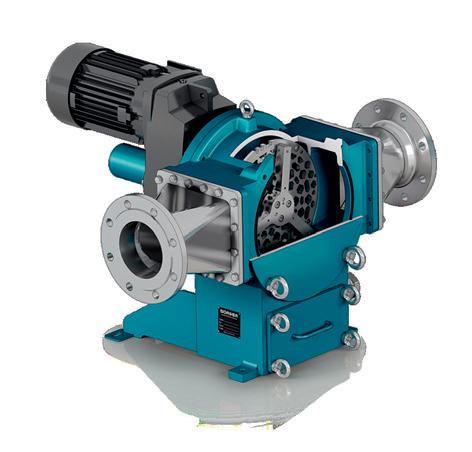

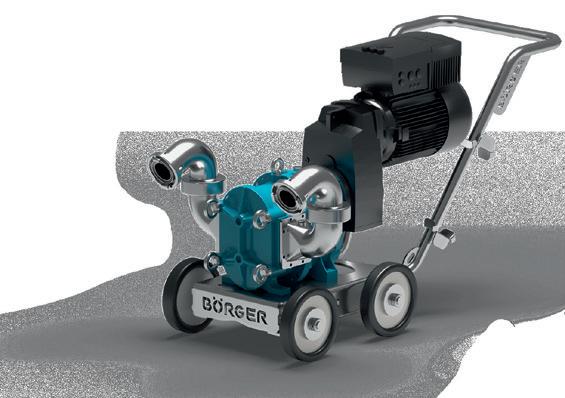

www.boerger.com Boerger Pumps Asia Pte Ltd • 16 Boon Lay Way #01–48 Tradehub 21 • Singapore 609965 • P: +65 6562 9540 • asia@boerger.com
SEWER UPGRADE CONTRACT AWARDED
Melbourne Water has awarded a contract to duplicate the Hobsons Bay Main Sewer, which carries over 30 per cent of Melbourne’s wastewater to the Western Treatment Plant, with the $200 million project one of the largest upgrades to Melbourne’s sewer network.
The contract has been awarded to the John Holland Group and is expected to create over 20 jobs.
Victorian Minister for Water, Lisa Neville, said this vital project highlights the State Government’s commitment to delivering essential water


infrastructure to support the city’s growing population.

“This sewer, originally built in the 1960’s and which runs under the Yarra River from Westgate Park in Port Melbourne to Spotswood, is integral to the Melbourne sewerage network,” Ms Neville said.
“This significant investment will ensure the reliability of Melbourne’s sewage service for the next century –and also create local jobs.”
Melbourne Water’s General Manager Major Project Delivery, Eamonn Kelly, has congratulated John Holland Group on being successful after an extensive tender process.
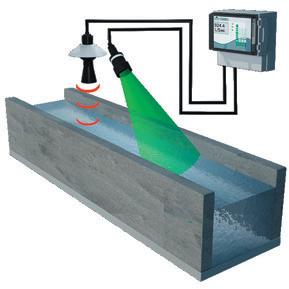
“We’re delighted to announce John Holland Group has been selected as the preferred contractor to carry out this important project as part of our overall upgrade to the Hobsons Bay Main Sewer,” Mr Kelly said.
“Melbourne Water has enjoyed a long-standing relationship with John Holland to deliver a wide range of our projects.
“Once the duplicate sewer is complete it will allow flows to be diverted from the original pipeline.”
Works will begin at Scienceworks in early 2022 and the project is due for completion in 2024.



UTILITY • FEBRUARY 2022 WWW.UTILITYMAGAZINE.COM.AU 12 & Velocity measurement Continuous Biofilm Monitoring Sample Biofilm growth signal over time LEVEL METERS BIOFILM ANALYSER ANALYTICAL CONTROLLERS PROCESS INSTRUMENTS PULSAR • Lightweight, compact design • No interruption to service • ATEX Ex mb Zones 1 & 2 approval • Minimal installation costs • Maintenance-free • RS485 Modbus • IP68 • Non-contacting • Cost-effective • Ultrasonic Transmitters and Controllers • Point Level Switches • Sludge Level Systems • Wireless Systems • Early detection of Bacterial Growth on surfaces • Monitoring & optimisation of sanitation requirements. NEW TURBIDITY MONITOR BINTECH SYSTEMS WATER SOLUTIONS 1300 363 163 sales@bintech.com.au www.bintech.com.au NEWS
$200 MILLION MELBOURNE
Solving for the aftermath. Before the aftermath.
Smart grid technology, intelligent devices and an industrial IoT network to connect it all. Not only is this the best way to prepare your grid for a storm, but it’s the best way to bounce back afterward. Reduce outage minutes, restore service efficiently and recover quickly. We can’t predict the weather. But we can be ready for it.
More intelligence. More possibilities.

Itr on.com/possibilities
© Copyright 2021 Itron. All rights reserved. Itron and the Itron logo are registered trademarks of Itron, Inc.
AGL BREAKS GROUND ON
$180 MILLION BATTERY
AGL has broken ground on its $180 million Torrens Island 250MW battery, preparing for construction of the facility, which will form part of the Torrens Island Energy Hub and support renewables in South Australia.
The Torrens Island battery will be the first of AGL’s national roll-out of 850MW of grid-scale batteries to get underway.
AGL announced in early 2021 that it had appointed technology group, Wartsila, to construct the Torrens Island battery.
South Australian Minister for Energy and Mining, Dan van Holst Pellekaan, welcomed the start of work on the battery and the benefits it will bring to the state’s energy system.
“AGL’s Torrens Island battery has 66 per cent more power and 25 per cent more storage than the now expanded big battery at Hornsdale,” Mr van Holst Pellekaan said.
“This project was assisted by a fast-tracked planning process by the Marshall Government to provide vital grid security benefits and help accelerate South Australia’s transition to net 100 per cent renewable energy generation by 2030.”

AGL expects up to 50 local jobs will be created during construction, and the battery is planned to be fully operational by early 2023.
AGL Chief Operating Officer, Markus Brokhof, said low-emission firming technologies will play a leading role in driving Australia’s energy transition.
“We’re delighted to have the opportunity to commence our battery program in South Australia. This milestone is an important step in bringing to life our vision for the low-carbon industrial energy hubs required for Australia’s energy future,” Mr Brokhof said.
“As Australia’s largest energy generator, we understand the importance of enabling flexibility and ensuring reliability across the National Electricity Market as we continue to integrate renewable generation.”
The battery will enable AGL to adapt to changing market conditions, with an initial one-hour duration that is capable of expanding to up to four-hours in the future.


UTILITY • FEBRUARY 2022 WWW.UTILITYMAGAZINE.COM.AU NEWS P E Level 2, Suite 26/20 Enterprise Drive Bundoora, Vic, 3083 1300 1 L ANCO (52626) tenders@lancogroup com au lancogroup.com.au Your business partner
solutions
1998.
don’t purely just design; we help our customers realize their goal, if you give us an idea we can provide a efficient and effective engineering solution” Accredited consultant with Melbourne Water, Retail Water Corporations – Metropolitan and Regional Areas Corporate Profile Insurance Category Level of Cover $ Professional Indemnity $10 million Public Liability $20 million Work Cover n/a A list of applicable insurances includes: Name of Entity: Lanco Group Pty Ltd ABN: 27 160 328 478 Company Address: University Hill Business Park South Level 2, Suite 26/20 Enterprise Drive Bundoora, Vic, 3083 Company Structure: Private Company Quality ISO 9001 Environment Health & Safety AS 4801 ISO 14001 2
for engineering
Since
“We
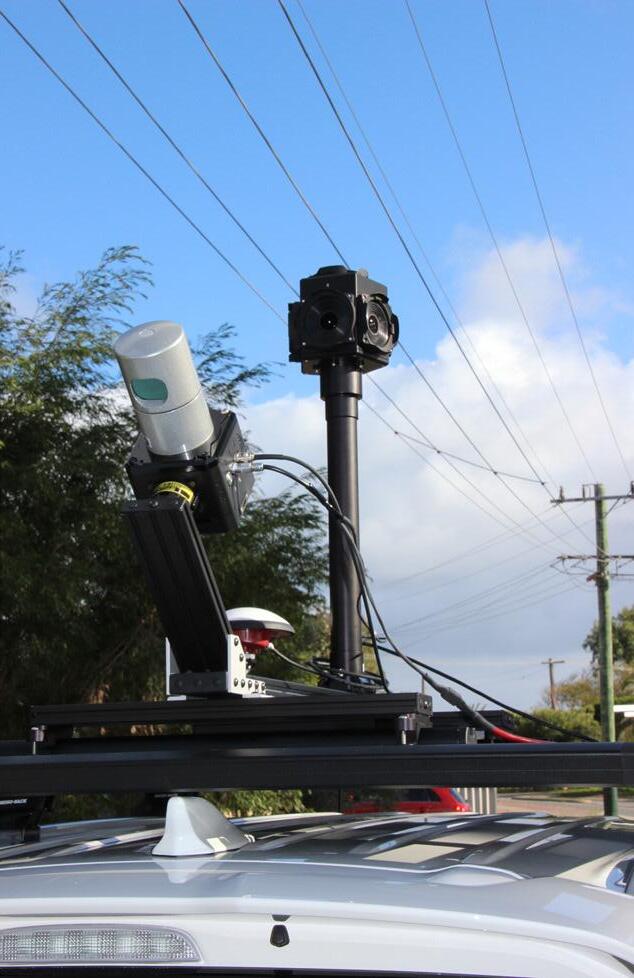

OsmoVision
Advanced Structural Resiliency Study

Cost-effectively enhance the resilience of power grid structures with an accurate assessment of existing infrastructure health.
• Generate a digital twin using our proprietary LiDAR point cloud classification and image recognition technology.
• Assess your system resiliency by simulating its ability to withstand high-impact events, such as a cyclone.
• Formulate system hardening solutions that improve your infrastructure’s structural resiliency.
(08) 9300 2950 | enquiries@logsys.com.au | logsys.com.au/osmovision an company
®

TASWATER APPOINTS NEW CEO
TasWater has announced the appointment of George Theo as its new CEO.
Mr Theo is the current Chief Executive Officer of Unitywater in South East Queensland, Australia.
He brings over thirty years of water industry experience to the role, including previous positions at GHD, Brisbane Water (UU) and City West Water in Victoria.
TasWater Board Chairman, Dr Stephen Gumley, said Mr Theo has a proven track record in delivering sustainable outcomes for the benefit of customers, the environment, employees and stakeholders by delivering initiatives that challenge the status quo.
“George has overseen transformation in the way businesses approach productivity improvements, capital planning and delivery, asset management, digital solutions, pricing, community and customer outcomes,” Dr Gumley said.
He is also the current Chairman of SWAN Asia Pacific Alliance, a not-for-profit organisation that brings together key players in the water industry across the region, with a focus on research, technology and digital transformation.
Mr Theo has a Master’s in Business Administration, a Degree in Engineering (civil) and an Associated Diploma in Municipal Engineering.
He is also a Fellow of the Institute of Engineers Australia and a Fellow of the Australian Institute of Company Directors.
“George’s appointment comes after a rigorous recruitment process facilitated by Davidson Search and Advisory, and we are pleased he will be taking up the reins here at TasWater on 14 March 2022,” Dr Gumley said.
Mr Theo is taking over from outgoing TasWater CEO, Mike Brewster, who is retiring.
FLOW, LEVEL , PUMP CONTROL VOLUME , & SLUDGE BLANKET
• Contacting & non-contacting measurement options
• Full, partially filled pipes, and open channel flow measurement
• Ultrasonic and radar technology
• Process measurement made simple
• Customer-centric
• Award winning service
For Australian sales & technical support, contact our local team or use our virtual Partner Locator to find the nearest Pulsar Authorized Distribution Partner





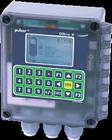






UTILITY • FEBRUARY 2022 WWW.UTILITYMAGAZINE.COM.AU 16 NEWS
Excellence in flow & level measurement.
OCEANIA@PULSARMEASUREMENT.COM +61 ( 0 ) 428 692 274


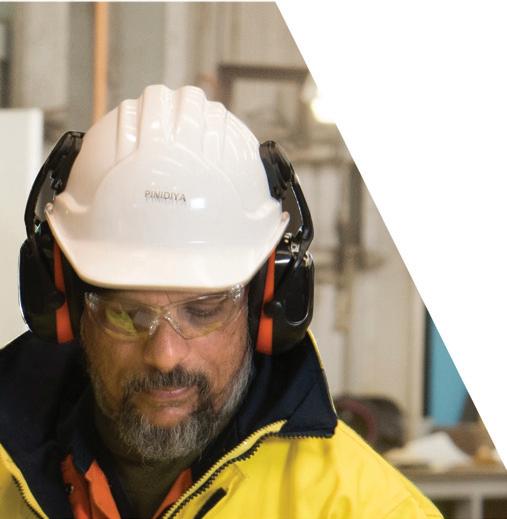
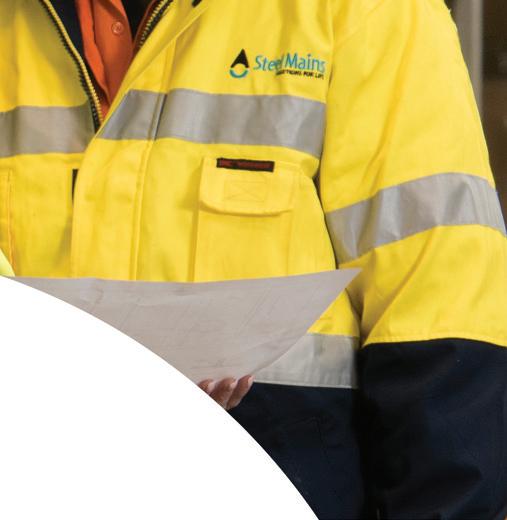




PROVIDING SECUIRTYPROVIDING SECURITY
Steel Mains is proud to be Australia’s largest manufacturer of Mild Steel pipes for the water industry. We continue to manufacture Sintakote® Steel pipe with manufacturing facilities located in both Victoria and Western Australia. Materials and labour required to manufacture our pipes are sourced locally, ensuring our pipes enjoy greater than 98% local content.
Local stock, delivery and design & installation support mean that Steel Mains is able to reduce all your pipeline supply risks. Local manufacture and product Standardsmark certification provide you with that additional supply security, with all aspects of our manufacturing meeting Australian quality standards. When the lifespan and security of your asset are important to you, Steel Mains Sintakote pipeline systems are your ideal choice for your next pipeline project.


ENERGY NETWORK AUSTRALIA AWARD WINNERS ANNOUNCED
The recipients of Energy Network Australia’s (ENA) Industry Innovation, Contribution and Consumer Engagement Awards have been announced, highlighting the achievements of Australia’s energy network industry.
Western Power Principal Networks Strategy Engineer, Nigel Wilmot, has been named the 2021 Energy Network Australia Industry Contribution Award winner.
The 2021 Energy Network Consumer Engagement Award was awarded to electricity transmission system operator Powerlink Queensland.
The 2021 Energy Network Industry Innovation Award was awarded to Queensland’s electricity distributors Ergon Energy Network and Energex.
CONTRIBUTION AWARD
Mr Wilmot was recognised for his significant contribution to the energy industry, in particular for driving the development of new Australian technical standards that govern the connection of renewable energy
devices to Australian households and businesses.
ENA Chief Executive Officer, Andrew Dillon, said Mr Wilmot’s work would have a lasting effect on Australia’s energy transition.
“Through Nigel’s foresight, he anticipated the huge growth in solar and battery technology and the need to implement a set of standards to ensure the integrity of Australia’s energy grid was maintained,” Mr Dillon said.
CONSUMER ENGAGEMENT AWARD
Run jointly by ENA and Energy Consumers Australia, the Energy Network Consumer Engagement Award recognises an Australian energy network that demonstrates best practice consumer engagement.
Powerlink Queensland received the award for its consumer engagement approach during its 2023-27 revenue determination process.
Energy Consumers Australia CEO, Lynne Gallagher, said the network’s submission showed
outstanding engagement practice and represented a new high-water mark for customer consultation.
“When networks undertake this kind of work, discrepancies between industry assumptions and the reality of consumer experiences are laid bare.
“A clearer understanding of your customer’s values, expectations and needs leads to better-served consumers and is better business as well.”
INNOVATION AWARD
Ergon Energy Network and Energex are the winners of the Innovation Award for 2021.
The winning project is an Australianfirst implementation of a digital system to generate a complete and consistent picture of the operational state of the grid.
The initiative supports the integration of distributed energy resources (DER) like rooftop solar PV, so more customers can export solar, voltage impacts on the grid can be mitigated and power quality can be improved.
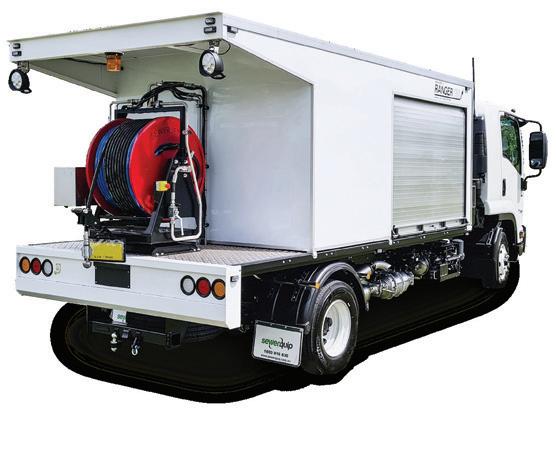




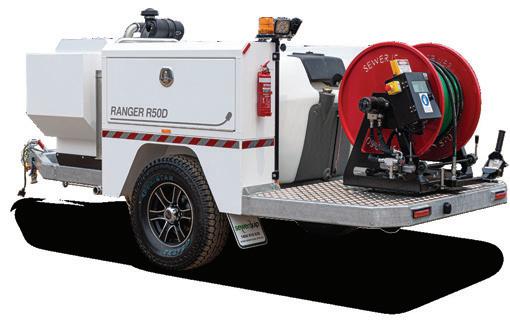
18 UTILITY • FEBRUARY 2022 WWW.UTILITYMAGAZINE.COM.AU
NEWS 1800 816 830 enviroline.net.au
Talk to the experts! For all your drain maintenance equipment needs
THE WATER JETTING SPECIALISTS
Digitise your network for a more sustainable water future. ™



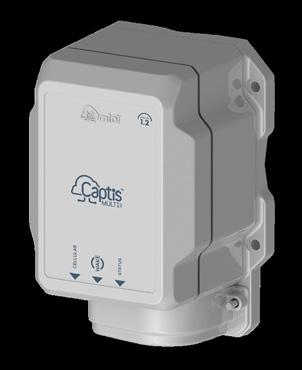
Gain real-time visbility of your water and wastewater networks with the NEW Captis Version 1.2. Your complete IoT monitoring and measurement solution - device, cloud, connectivity.


1800 646 828 | miot.com.au
WATER APPOINTS NEW MANAGING DIRECTOR
Melbourne Water has announced the appointment of its new Managing Director, who is the first woman to ever be in the role.
The Board of Melbourne Water revealed Dr Nerina Di Lorenzo as the next Managing Director of the company.
Dr Di Lorenzo succeeds Michael Wandmaker who has been Melbourne Water’s Managing Director since September 2014 and stepped down from the role on 30 November 2021.
Melbourne Water’s Chair, Professor John Thwaites, said Dr Di Lorenzo was an outstanding appointment and the Board was looking forward to working closely with her in the next phase of Melbourne Water’s history.
Dr Di Lorenzo joined Melbourne Water in July 2019 as the Executive General Manager of Service Delivery, helping reshape the organisation to provide reliable and secure water services.
Prior to this role, Dr Di Lorenzo was the Chief Executive Officer of the City of Moreland.
“In her time at Melbourne Water, the Board has been thoroughly impressed by Dr Di Lorenzo’s leadership, skills and ability to drive customer outcomes in a collaborative way,” Mr Thwaites said.
“This historic appointment – the first female Managing Director in the organisation’s 130-year history – builds on previous appointments of women to senior roles in the organisation.”

Dr Di Lorenzo said she was honoured to be appointed as Melbourne Water’s next Managing Director and was looking forward to taking on the role.
“I’m particularly excited about forging stronger relationships with our customers and delivery partners, especially Traditional Owners,” Dr Di Lorenzo said.
“The sector is facing big challenges including long-term water security, reducing our greenhouse gas emissions, improving the health of our rivers and catchments and making greater Melbourne an even better place to live. We can only meet these challenges by working hand in hand with our customers and the community.”
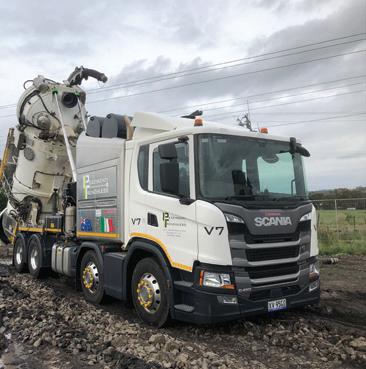


UTILITY • FEBRUARY 2022 WWW.UTILITYMAGAZINE.COM.AU 20
NEWS Unit 2 / 85 Heatherdale Road, Ringwood Vic 3134 PO Box 2500, North Ringwood Vic 3134 P: (03) 9872 4596 | F: (03) 9872 3293 | E: info@pezztrenchless.com.au Still the market leaders in laser guided microtunnelling Bore diameters from 325mm up to 2800mm Used for gravity sewers, water mains, storm water, gas and electrical conduits. Specialists in “free bore”, sleeve boring and pipe jacking in all sizes The Next Generation in Trenchless Technology
MELBOURNE



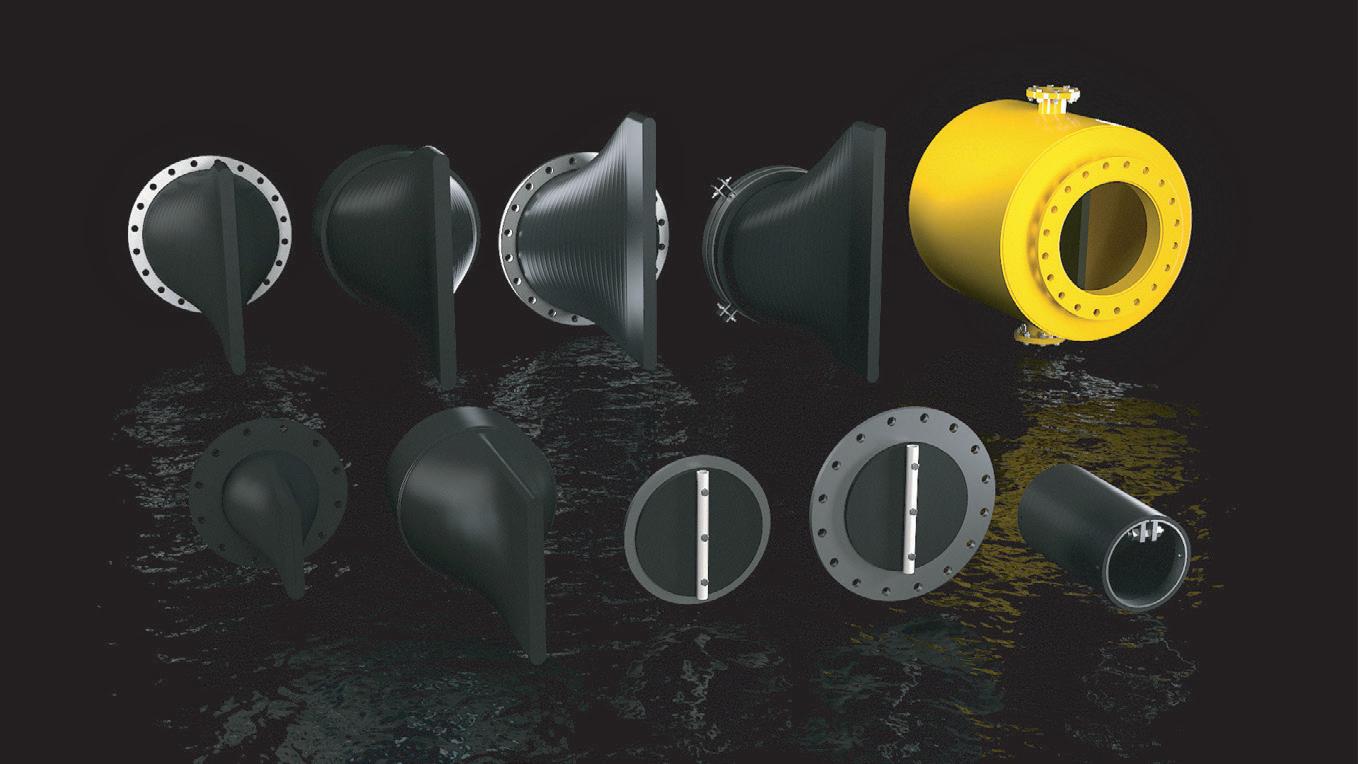








SEAL CRITICAL PIPE PENETRATIONS
If you have a pipe passing
through a wall, ceiling or floor and need a solution to seal the annular space, Link-Seal might be the answer you are looking for.
Link-Seal is an engineered product, manufactured in the US and available in Australia through Projex Group. It is used extensively in hospitals, oil farms, commercial developments, mines, water and waste treatment plants, and more.
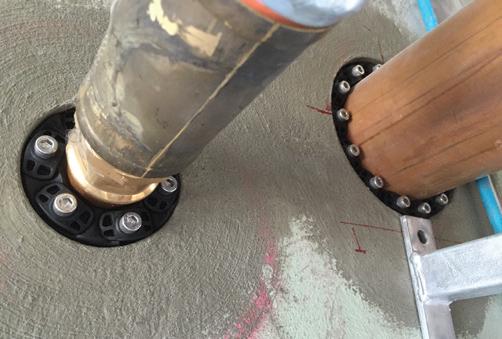
Link-Seals offer hundreds of solutions to seal pipe penetrations ranging in size from 10mm to 3.6m diameter, and can seal against oils, gas, water, aggressive chemicals and fire. Link-Seals are suitable for PVC, HDPE, copper and steel pipes and will produce an immediate seal once installed around the centred pipe and the substrate it passes through. Projex Group offer free technical consultation and will help you calculate the right Link-Seal size and model for your application. To find out which Link-Seal you need, simply email the answers to the following questions at mail@projex.com.au:

For
1. What is the inside diameter of the hole?
2. What is the outside diameter of the pipe?
3. What are you sealing against?
4. What type of pipe are you using?
Projex Group’s job is to specify and guide you as to which product is suitable for your specific application to ensure the complete solution is achieved.
VICTORIA INVESTS $40 MILLION
IN OFFSHORE WIND PROJECTS
The Victorian Government has announced a $40 million funding boost for offshore wind projects, kickstarting three major projects across the state and potentially creating 5,600 jobs.
As part of the Energy Innovation Fund, the Victorian Government is funding three major offshore wind projects – from Star of the South, Macquarie Group and Flotation Energy – bringing $18 billion in investment to Victoria and powering around 3.6 million homes.
The funding boost will support feasibility studies and pre-construction development, including environmental assessments.
• The Star of the South will receive $19.5 million to support pre-construction development activities for an offshore wind farm off the Gippsland coast. If built to its proposed scale, it would have up to 2.2GW of capacity –enough power to provide nearly 20 per cent of Victoria’s energy needs
• Macquarie Group will receive $16.1 million to facilitate initial development stages of a 1GW offshore wind farm off the Bass Coast

• Flotation Energy will receive $2.3 million for scoping studies and surveys for a 1.5GW offshore wind farm off the coast of Gippsland
The funding will help each company conduct studies to determine the exact location of each project, with all major projects requiring a rigorous community consultation process, and subject to a range of regulatory approvals including environmental impact assessments.
Victorian Premier, Daniel Andrews, said, “Victoria is the clean energy capital of Australia – we’ve led the way on renewables, created 24,000 jobs with our VRET target alone, supported a thriving supply chain of businesses and attracted billions in investment.
“Offshore wind is the next step to create thousands of high-skilled jobs, and we know we’re ready with a highly skilled workforce able to step into them.”
Wild winds off Victoria’s coastline, which are among the best in Australia and the world, could help the state reach its target of 50 per cent renewable energy by 2030.
22 UTILITY • FEBRUARY 2022 WWW.UTILITYMAGAZINE.COM.AU NEWS | Sponsored editorial
more information, please visit www.projex.com.au.
CONTRACT AWARDED FOR MT KYNOCH WATER TREATMENT PLANT UPGRADE
Toowoomba Regional Council (TRC) has awarded the contract to complete the Mount Kynoch Water Treatment Plant upgrade, after an extensive tendering phase.
The contract has been awarded to Fulton Hogan Utilities, who will upgrade the Mount Kynoch Water Treatment Plant to help improve water security and service reliability for the region.
TRC Water and Waste Committee Chair, Cr Rebecca Vonhoff, said, “Built almost 50 years ago, the water treatment plant is aging infrastructure that needs work to ensure reliability of service and redundancy in the event of a system failure.
“We also know the treatment plant is almost running at peak capacity so it’s crucial we begin an immediate upgrade
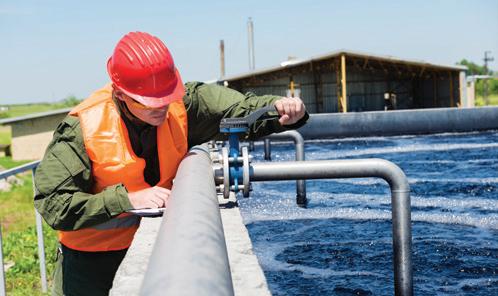
to ensure Council can continue to service the water supply needs of the community as we continue to grow our region.”
The Mt Kynoch Water Treatment Plant sources water from Cooby Dam, Cressbrook Dam and Perseverance Dam. To ensure continuous supply of raw water into the treatment plant, Council must provide a reliable network of pipes, pumps and valves.
Ms Vonhoff said Council will invest close to $28 million at Mt Kynoch over the next three financial years.
In addition to upgrading existing infrastructure, Council is undertaking the design of a new duplicate main that will include a new valve house and delivery main.
The trunk raw water lines from Cressbrook and Perseverance dams interconnect prior to the treatment plant inlet, at the valve house within the Mt Kynoch Park.
There is currently only one incoming main from the valve house into the treatment plant, transporting combined Perseverance and Cressbrook raw water – so this needs to be addressed.
The enhancement works provide improved reliability of incoming water to the plant, with the option of two mains.
“This is a major investment to provide residents with a safe and reliable drinking water supply and is essential for the future growth of the Toowoomba Region,” Ms Vonhoff said.
The project is currently scheduled for completion in late 2023.





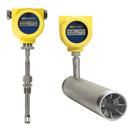







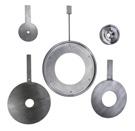


UTILITY • FEBRUARY 2022 WWW.UTILITYMAGAZINE.COM.AU 23 NEWS INSTRUMENTATION & CALIBRATION PTY LTD SPECIALISTS AMS have been suppliers of instrumentation and calibration equipment to all industries since 1973 representing some of the world’s leading manufacturers of the equipment in their field. www.ams-ic.com.au Flow Measurement Specialists www.ams-ic.com.au sales@ams-ic.com.au
ADVANTAGES OF ELECTRONIC KEY CABINET INTEGRATIONS
Key holders don’t want to be overwhelmed with several systems. That is why introducing electronic key cabinets with integration to security or human resource systems is very beneficial.
To prevent being disappointed with unrealistic integration promises, it is wise to be apprehensive when told that a reliable key management system third-party API can be built on-the-fly, without foreseeing the time involved in effectively testing it.
Harcor’s IKLAS already has high-level interfaces to many popular third-party platforms. This easily prevents duplication of data entry, card holders and access control groups, and is achieved via sending real-time transactions to the various platforms.
Some common configuration options include antitailgating, which prevents cardholders from exiting the facility if a key has not been returned to the electronic key cabinet. Other advantages of integration include reduced administrative time, data accuracy, comprehensive reporting, more efficient control and ease of maintenance.
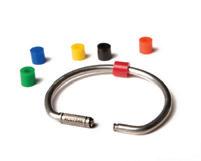

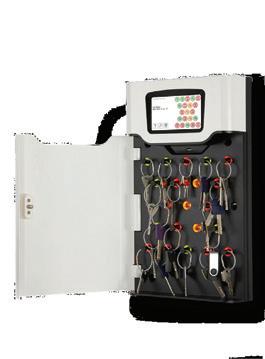


INTEGRATING KEY MANAGEMENT SYSTEMS
If high-level integration is not a requirement, the IKLAS LITE could be precisely what is needed. This super costeffective electronic key cabinet includes some features normally only coupled with high-tech electronic key cabinets, like its big brother the IKLAS-ELITE. The cabinet includes an industrial grade touch screen and many other essential key management attributes.
Deciding what systems to use regarding key management can be complex. That is why Harcor is always looking for better ways to integrate key management systems within the current business environment. From high-level configurations to simple access card integration, Harcor is ready to help you.


UTILITY • FEBRUARY 2022 WWW.UTILITYMAGAZINE.COM.AU 24
No. 407319937 Key management Meter security seals Contact us for more information about our comprehensive range of key cabinets. Trackable Serial Numbering Expose Unauthorised Access For more information, please visit harcor.com.au/collections/key-management-system or email sales@harcor.com.au. NEWS | Sponsored editorial




Easy transportation Simple implementation Operator and equipment safety 1300 FMT FMT (368 368) Melbourne 1/53-57 Rimfire Drive Hallam VIC 3803 Brisbane 2/5 Percy Drive Brendale QLD 4500 Perth 3/48 Hardey Road Belmont WA 6104 The water supply operator’s kit H2O WATER KIT
DELIVERING RELIABLE AND ACCURATE
NATURAL GAS SUPPLY

Natural gas production in the United States has been steadily increasing for almost a decade – made possible by oil and gas companies that extract valuable hydrocarbons trapped deep underground.
In natural gas production, a well is sunk and made ready for production, and companies like Blue Racer Midstream process the unfiltered natural gas flowing from the well into products for refineries.
The VEGAPULS 64 supports this process, delivering reliable and accurate measurement data despite the poor reflective properties of liquid gas.
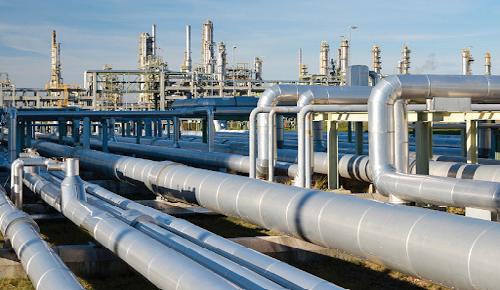
Oil and gas companies are strictly regulated, with redundant measurements required by law for many processes and applications to minimise the risks of tank leakage.
Blue Racer Midstream operates a number of natural gas treatment and processing facilities in eastern Ohio and West Virginia, and supplies a wide range of products that meet the specifications for pipelines.
NON-CONTACT MEASUREMENT MADE POSSIBLE
Before purified products make their way through the pipeline, they are stored in large underground tanks. These tanks have access pipes protruding about 30-60cm out of the ground, and at the top of these narrow pipes VEGAPULS 64 radar sensors are installed.
VEGAPULS 64 is a radar level sensor that measures contactlessly with a very high signal frequency: 80 GHz, which allows for a more focused signal.
The sensor can also measure through very narrow openings, as is the case with the access pipes.
Since the majority of the radar beam’s energy is focused on a smaller area, the antenna receives a stronger reflected signal from the product surface.
The 80-GHz radar sensors are repeatedly setting new standards in detecting small, weak signals, due to their dynamic range – especially when measuring hydrocarbons.
VEGAPULS 64 can detect all media in the petrochemical industry, from crude oil to liquid gas, with high reliability.
AN EASY SOLUTION TO A DIFFICULT TASK
Blue Racer Midstream used guided wave radar technology for all level measurements in the two underground storage tanks, two sensors were mounted on each tank – one for continuous level measurement and one for a max. alarm, which shuts down the process to avoid overfilling.
The guided wave radar sensors used in the storage tanks delivered correct level values despite high mounting sockets and bad reflective properties of natural gases.
When the time came to replace the max. alarm sensors on each tank, VEGA suggested using contactless measurement with VEGAPULS 64.
The strong focusing and exceptional sensitivity of the sensor ensures an accurate and reliable level measurement.
80-GHz has a positive effect when measuring liquids with small dielectric constants at the bottom of a vessel.
The result is that even the lowest filling levels can still be measured reliably and accurately.
MORE DEPENDABLE RESULTS
Blue Racer Midstream chose the new VEGAPULS 64 sensors and was impressed with the results.
As each tank requires two sensors for the same measurement, operators were able to directly compare the performance of the new non-contact radar sensors with that of the original sensors.
In this comparison, the accuracy of VEGA technology was totally convincing, and as a result, Blue Racer Midstream began replacing the guided wave radar instruments with new VEGAPULS 64 radar sensors in all locations.
UTILITY • FEBRUARY 2022 WWW.UTILITYMAGAZINE.COM.AU 26
NEWS | Sponsored editorial
VEGAPULS 64 IS USED IN NUMEROUS PLACES THROUGHOUT REFINERIES

Controller and display instruments for 4… 20 mA level sensors
Controller and display instruments for 4… 20 mA level sensors
Compact controller and display instrument for level sensors
VEGAMET 141/142




carrier rail mounting switching cabinet
carrier rail mounting switching cabinet
carrier rail mounting switching cabinet






front panel mounting built-in wall/pipe mounting

front panel mounting built-in wall/pipe mounting outdoors
front panel mounting built-in wall/pipe mounting outdoors



www.vega.com
www.vega.com
www.vega.com
▪ Complex programming of control tasks is no longer necessary
Compact controller and display instrument for level sensors
Controller and display instruments for 4… 20 mA level sensors
VEGAMET 141/142
▪ Simple and safe setup and diagnosis of measuring points via smartphone
▪ Easy control of the measuring point by graphic display, even in the dark
▪ Complex programming of control tasks is no longer necessary
Compact controller and display instrument for level sensors
▪ Simple and safe setup and diagnosis of measuring points via smartphone
VEGAMET 141/142
▪ Easy control of the measuring point by graphic display, even in the dark
▪ Complex programming of control tasks is no longer necessary
Built-in controller and display instrument for level sensors
▪ Simple and safe setup and diagnosis of measuring points via smartphone
VEGAMET 341/342
▪ Easy control of the measuring point by graphic display, even in the dark
Built-in controller and display instrument for level sensors
▪ Complex programming of control tasks is no longer necessary
VEGAMET 341/342
▪ Simple and safe setup and diagnosis of measuring points via smartphone
▪ Easy-to-read display from a distance, even in sunlight and darkness
▪ Complex programming of control tasks is no longer necessary
Built-in controller and display instrument for level sensors
▪ Simple and safe setup and diagnosis of measuring points via smartphone
VEGAMET 341/342
▪ Easy-to-read display from a distance, even in sunlight and darkness
▪ Complex programming of control tasks is no longer necessary
Robust controller and display instrument for level sensors
▪ Simple and safe setup and diagnosis of measuring points via smartphone
VEGAMET 841
▪ Easy-to-read display from a distance, even in sunlight and darkness
Robust controller and display instrument for level sensors
VEGAMET 841
▪ Clearly arranged, readable from a distance and individually programmable display
▪ Complex programming of control tasks is no longer necessary
▪ Clearly arranged, readable from a distance and individually programmable display
Robust controller and display instrument for level sensors
▪ Easy-to-read display from a distance, even in sunlight and darkness
VEGAMET 841
▪ Complex programming of control tasks is no longer necessary
▪ Easy-to-read display from a distance, even in sunlight and darkness
▪ Clearly arranged, readable from a distance and individually programmable display
▪ Complex programming of control tasks is no longer necessary
▪ Easy-to-read display from a distance, even in sunlight and darkness
USING THERMAL ZINC DIFFUSION COATING TO EXTEND PART LIFE
Finding the right galvanising method is critical to prolonging part life, especially in harsh mining, construction, and marine environments.
ArmorGalv® Australia is the first plant of its kind in this country, boasting a corrosion resistant and abrasion resistant coating solution that helps increase part life – making this technology a must-have for those in the utility products, infrastructure, energy, construction, mining, oil and gas industries.
The advanced ArmorGalv® coating technology is called thermal zinc diffusion galvanising, which is a uniform, sacrificial, zinc-iron coating, applied to any ferrous item using a metallurgical vapour diffusion process.
In contrast to other galvanising methods, thermal zinc diffusion galvanising does not leave any areas of the product ungalvanised; this is because the formation of a zinc coating by means of diffusion is not hampered by the product's geometry.
The ArmorGalv® Thermal Zinc Diffusion coating is a standard finish option for all Ferrous Metal Products and perfect for threaded bar, engineered fasteners, both high tensile and commercial grade.
REVOLUTIONISING THE INDUSTRIAL METAL PRODUCTS MARKET
Becoming known as Galvanising 2.0, this uniform deposition coating is poised to revolutionise the industrial metal products and fastener market, with over 1,000 hours of corrosion resistance, no risk of hydrogen embrittlement, and no insignificant surfaces.
Traditionally, fasteners were coated to provide them with corrosion resistance and proper torque tension (coefficient of friction) characteristics, while trying to avoid inducing them with the catastrophic effects of hydrogen embrittlement.
Today, there is the added requirement and challenge, that the process of coating the fasteners be environmentally friendly, and that the resulting coating itself be nontoxic and chrome free.
Recently, major advances have also been made in thermal zinc diffusion technology to improve its efficiency and reproducibility.
IS THERE A SPECIFICATION COVERING ARMORGALV ® COATING?
The ArmorGalv® coating is covered by the Standards ASTM 1059 A / M and ISO 17668.
Coating classes range from 20-120 microns, defining the target coating thickness.
For the most common coating thickness of 50 micron, thickness variance is typically between 45-60 microns.
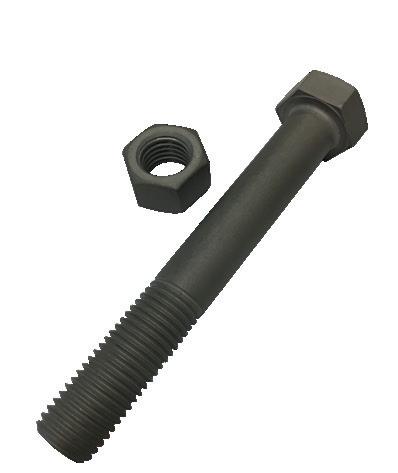
WILL THERMAL ZINC DIFFUSION REPLACE CADMIUM FOR ANTI-GALLING?
The main benefits of cadmium, which due to safety concerns has been banned virtually worldwide, were its anti-galling properties, and its ability to not ‘seize’ in the presence of its own corrosion products due to its inherent lubricity properties.
Due to increased hardness and wear resistant properties, thermal zinc diffusion provides good anti-galling properties, predominantly facilitated by the absence of free zinc at the outer surface.
WILL TOPCOATS ADHERE TO ARMORGALV ® ?
ArmorGalv® is not pure zinc, it's layers (phases) of zinc/ iron alloy, meaning the surface is not smooth like that of bright electroplated zinc, and that it has superior adhesion of powder coat, paint, rubber, silicates, or Xylan.
HOW ENVIRONMENTALLY FRIENDLY IS ARMORGALV®?
The ArmorGalv® Thermal Diffusion process generates practically zero landfill material and results in a chrome-free nontoxic coating.
In 2006, the US Environmental Protection Agency awarded the ArmorGalv® process its prestigious MVP2 Award – The most valuable new technology award. For further technical information, please go to: www.armorgalv.com.au

UTILITY • FEBRUARY 2022 WWW.UTILITYMAGAZINE.COM.AU 28 NEWS | Sponsored editorial
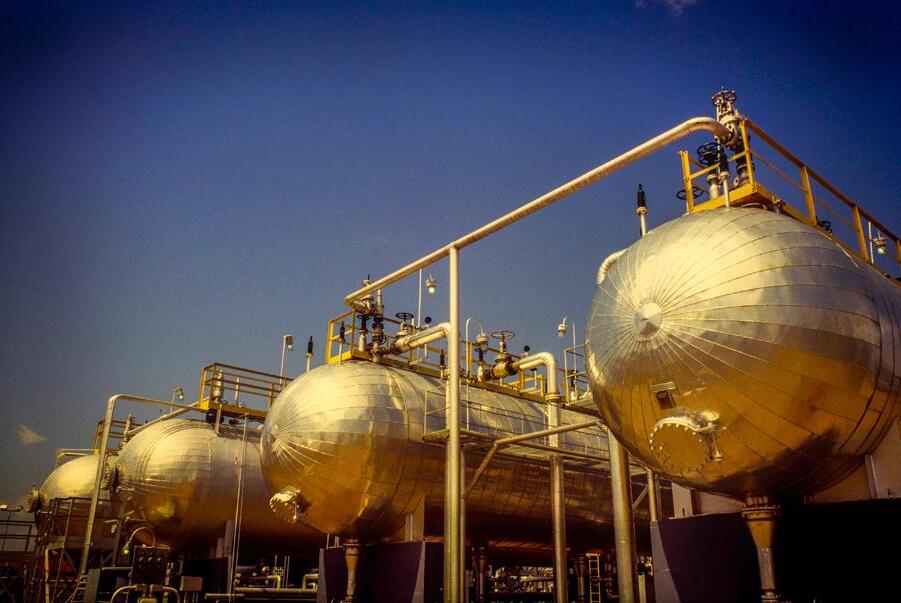


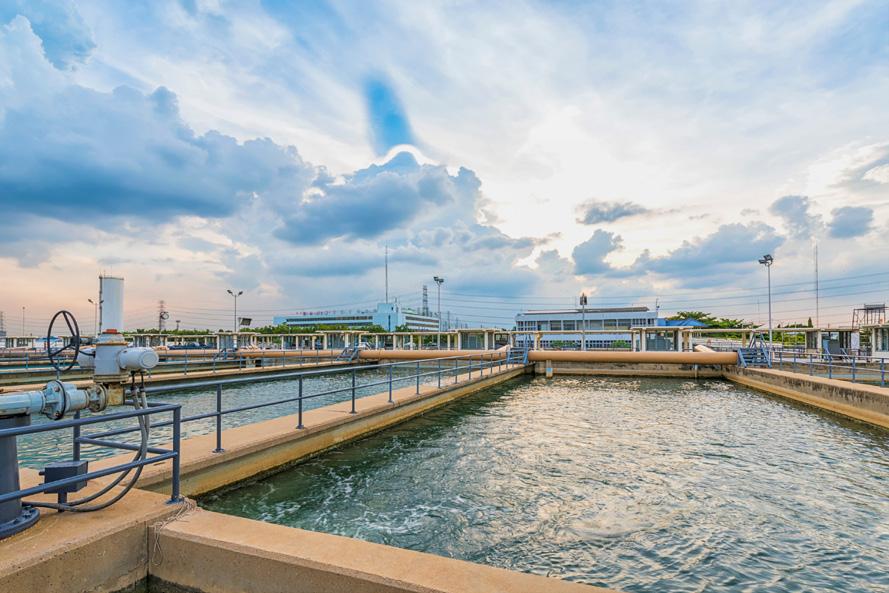
A R M O R G A L V P R O T E C T I O N
F O R A L L F E R R O U S M E T A L S
H i g h l y c o r r o s i o n a n d a b r a s i o n r e s i s t a n t
C o n t r o l l a b l e , e v e n a n d p r e c i s e – f r o m
2 0 μ t o 1 0 0 μ p l u s
H a r d , n o n - m a g n e t i c , w e l d a b l e a n d s p a r k
f r e e
C h i p p r o o f a n d a m e n a b l e t o c r i m p i n g , b e n d i n g a n d f o r m i n g p o s t p r o c e s s
N o h y d r o g e n e m b r i t t l e m e n t
GRADES 8.8, 10.9, 12.9 & THREADED BAR
NO HYDROGEN EMBRITTLEMENT
ANTI-GALLING
LOW CO-EFFICIENT OF FRICTION
TORQUE TENSION TESTED
NO LOSS OF HARDNESS OR TENSILE STRENGTH

F o r P e r f o r m a n c e
a n d E n d u r a n c eA r m o r G a l v i t !
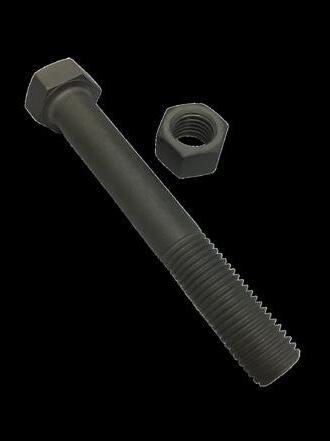

H i g h l y h e a t r e s i s t a n t ( u p t o 6 5 0 ° C )
E x c e l l e n t s u b s t r a t e f o r p a i n t , e p o x y ,
r u b b e r o r p l a s t i c



0
a l l y
S T E N E R
T U
T o x i c a l F r e e A S A
C
S :
2
0 2
4
7 6 0
a l e s @ a r m o r g a l v . c o m . a u
w w . a r m o r g a l v . c o m . a u
8 6
s
w
Strong, Reliable Corrosion Protection for Hi-Tensile Threads
A S K U S F O R Y O U R G A L V A N I S I N G 2 . 0 I N F O R M A T I O N P A C K
ON MAJOR PROJECTS USING HDD MAXI-RIGS

There is increasing awareness across the utility industry that horizontal directional drilling (HDD) can provide an effective whole-of-life solution for the installation of pipelines. In this article, Maxibor CEO and Owner, Rodney O’Meley, provides insights into maxi-rig spreads and highlights the benefits of utilities and other infrastructure asset owners using HDD maxi-rigs on major projects.
Maxi-rigs are defined as those HDD rigs required for the installation of pipelines between 400mm (16 inches) and 1200mm (48 inches) in diameter, and rated for more than 45,359kg (100,000lb) of thrust and greater than 9,072kg (20,000lb) of torque. Maxibor has four maxi-rigs – a Vermeer 330x500, American Auger 660, Gallagher 600 and Gallagher 660e, and access to others if required.
The maxi-rig spread is a significant investment, as it comprises much more than just the rig. Drill fluid cleaners, high volume pump(s), mud mixer, vacuum truck, rods and tooling and excavators to manage the pipe and rods, all add to the on-site cost of the spread even before a rod is turned. The purchase cost of a new spread today would not leave much change from AUD$8 million.
The mobilisation, demobilisation and on-site relocation also requires having prime movers, trailers and sideloaders to move the equipment. A good on-site stock of spare parts, extra rods and tooling are all essential if you want to maintain productivity on major projects, especially in more remote locations, not just ‘nice to haves’.
INVOLVEMENT FROM THE EARLY STAGES
The length and diameter of pipelines that maxi-rigs can install will depend on the ground conditions and pipe being installed. While they have the capacity to drill pipelines in excess of 2km with diameters up to 1.6m, typically in Australia maxi-rigs are mostly used on projects in excess of 500m with bore diameters of more than 600mm.
Involvement of maxi-rigs on smaller projects can be seen as a reflection that the Australian infrastructure sector has traditionally taken a conservative approach to the use of HDD and other trenchless technology installation methods. The industry has only just reached its 30th year in Australia, whereas the US recently celebrated 50 years and is regularly doing bores over 4km with maxi-rigs.
However, the knowledge and capacity to take on more challenging projects in Australia is certainly there, particularly where you have very experienced design and construct HDD providers like Maxibor.
This enables the integrated body of knowledge required to deliver more complex HDD projects to be involved from early design through to delivery and final commissioning and testing of the pipeline. Maxibor is now regularly being sought out to be involved in the concept stage of projects. Decision makers and other stakeholders are then better informed about the construct options and value-add solutions to project challenges using HDD.
PROVEN IN THE FIELD
Maxi-rigs are ideally suited for river crossings, ocean outfalls, hard rock conditions and multiple service bores requiring larger diameter holes. Distance is not a problem, nor is force, to complete the bore, as the power of the maxi-rigs and the pumps (e.g. Gardner Denver PZ9s) are more than sufficient to overcome the most difficult ground conditions, bore length or other design constraints.
Projects where Maxibor has used its maxi-rigs have included a 1.320km Logan City Council project which connected the Greater Flagstone Priority Development Area with the Cedar Grove sewerage treatment plant. Maxibor designed and delivered a 1.320km bore installing 500mm of PE100 HSCR PN20 to a depth of over 50m. This is still one of the longest bores in Australia in recent years.
The advantage of having maxi-rigs in the fleet was demonstrated on a project to install a new 400m section of water pipeline between Lamb and Macleay Islands in Queensland. Maxibor used one of its Vermeer 100x120s to complete the pilot hole and most of the reaming. The Vermeer 330x500 maxi-rig was then brought in to use its extra muscle to ream the bore hole to a 550mm diameter and pull the DN400 PN20 pipe through.
Into 2022, Maxibor has several bores lined up for its maxi-rigs with distances in the 1.5km to 2.5km range. It is also working in the early design stage with various asset owners and principal contractors on other projects across Australia where its ability to solve complex river and harbour crossings and outfall project challenges will help optimise outcomes for all stakeholders.
UTILITY • FEBRUARY 2022 WWW.UTILITYMAGAZINE.COM.AU 30
NEWS | Sponsored editorial
THE HULK - A GALLAGHER HDD660E ELECTRIC MAXI-RIG.

INCREASING INFRASTRUCTURE ASSET RESILIENCE
The main benefit of maxi-rigs is that they have the ability to provide solutions to challenging infrastructure installation problems. Maxi-rigs will quickly come to the fore in the current decade as climate change mitigation measures need to be put in place as protections against the impact of severe climate events. Electricity, telecommunications, water, sewerage and gas assets will be increasingly impacted by wind, fire, flood, erosion, drought and inundation.
Many of these assets are also vulnerable because of their age, and above ground replacement or trenching
is no longer a medium-term viable option. As Maxibor has highlighted in previous articles in Utility magazine, infrastructure asset resilience will be a key challenge as asset owners confront climate change. Australia really needs to be going ‘down under’ and use HDD maxi-rigs to install its infrastructure assets!
With the ever-increasing congestion of utility services in metropolitan areas of Australia, the difficulty of installing new infrastructure is increasing. The trenchless solution of having longer and deeper runs overcomes the services location (and missing) issue. Maxi-rigs are an ideal solution for new infrastructure assets such as data lines, charging stations and green hydrogen, where there is a point A to point B objective rather than with a myriad of connection points, like there was with the NBN roll out.
An exciting recent addition to the Maxibor fleet has been its electrified Gallagher HDD660e maxi-rig (The Hulk). The electrified spread comes with its own substation which also connects to two powerful Gardner Denver PZ9 pumps and a large Gallagher mud recycling system.
The Hulk is capable of drilling over 3.5km in a single shot with a diameter up to 1.6m. Electric spreads are the direction of the future for the HDD industry as it responds to the need for emissions and noise reduction. Maxibor is excited to be leading the way in this space in Australia.
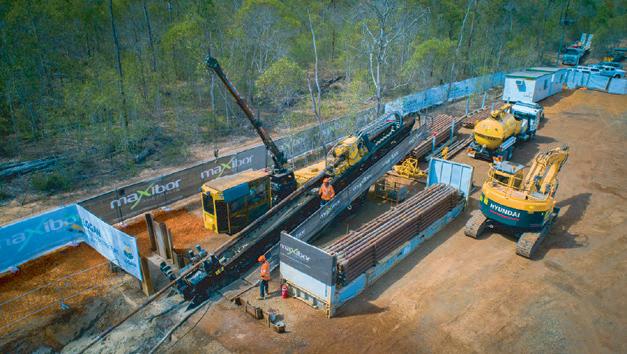
UTILITY • FEBRUARY 2022 WWW.UTILITYMAGAZINE.COM.AU 31
Sponsored editorial | NEWS AUSTRALIA’S LEADING HDD SPECIALIST Maxibor is using its design and construct expertise to deliver better project outcomes to asset owners and principal contractors alike 02 4966 5583 www.maxibor.com.au admin@maxibor.com.au Follow us on LinkedIn, Facebook & Twitter
and collaborative
and construct services
to advise at the right
project delivery cycle
water and sewer, rail, road,
and
capable
a
For more information, please visit www.maxibor.com.au or contact David Turner on 0499 375 511.
»Quality
HDD design
»Expertise
time in the
»Gas,
power, telecommunications, mining, residential development, renewables
hydrogen »Maxi-rigs
of long and wide diameter bores in hard rock and difficult conditions »Build
future we all look forward to.
VERMEER 330X500 AT LAMB ISLAND.
BIG DATA SUPPORTING THE NEW ENERGY PARADIGM
by Ruchika Deora, Program Director, The Centre for New Energy Technologies (C4NET)
Australia’s transition to a new energy future will not be a smooth one without a massive shift in operational and market management.
The rapid uptake of hyperlocalised, consumer driven technologies is upon us. Current solar, heating and cooling, electric vehicle (EV) and storage trends, collectively known as Distributed Energy Resources (DER), require systematic management to ensure we maintain a cost-efficient, secure and reliable electricity supply that also supports our environmental objectives.
But the path to successfully integrating and accommodating these DER is littered with political hurdles, conjecture and technical and regulatory complexity. Traditional power system planning and assessment tools must evolve to better serve customer and market requirements. This means industry requires new ways to ensure network and market stability.
Thankfully, the recent democratisation of multiple data streams means that the opportunities to use detailed analysis to inform our system planning do exist. However, access to reliable electricity consumption data will be key to ensuring that evidence-based decision making will guide the entire sector into our new energy paradigm.
DATA ACCESS SERVICES
The Centre for New Energy Technologies (C4NET) has access to this energy consumption data as well as the experts to be able to model

this data to provide useful insights to any interested party. Its Data Access Services now allow any interested group to request its aggregated data.
As a first step, we need to utilise all available evidence and data at hand to forge our pathway forward. These two terms are often used interchangeably but there is a difference and it is important to understand the nuance between the two.
The former is the narrative for defining and understanding where we have been and where the sector needs to go; from one-way delivery of electricity to multi-directional power flows. Data on the other hand is the instrument that enables and gives credibility to this narrative. Both are required to advance change in any industry, but for reasons still unknown, we often fall to one or the other, rarely leveraging them together to create a complete pathway for multiple stakeholders to accomplish our objectives.
Big data was originally associated with three key concepts: volume, variety, and velocity, better defined as how much, how many types and how fast. But recently, two arguably more important “Vs” have emerged – value and veracity. Data itself can have intrinsic value, but can be worthless until that value is uncovered and applied. Equally, without veracity – how
truthful is your data and how reliable it is – your data has no value.
In the past, detailed visibility of low voltage systems wasn’t necessary to efficiently manage the secure and cost-effective supply of electricity to consumers. But, as more consumers become generators and exporters of electricity, local power quality maintenance is essential in meeting policy and compliance objectives. Confidence in network performance i.e. voltage management and line impedance, is fundamental for system and market planners to manage bi-directional power flows to meet customer needs.
It would not be a stretch to say that the current system of modelling growth and capacity is not keeping pace with the commercialisation of consumer technologies that influence power system operations. But it does not have to be so.
For instance, AMI meter data can inform what is happening on the network at specific times and locations, from how much electricity load is being exported onto or drawn from feeders and transformers. Other new forms of modelling AMI data can assist in phase grouping of customers, topology estimates, impedance levels of distribution lines and service cables and identification of unmetered loads. This level of visibility enables more uptake of new DER and renewable
UTILITY • FEBRUARY 2022 WWW.UTILITYMAGAZINE.COM.AU 32
BIG DATA
energy based on the capacity and capability of existing assets. It also helps guide infrastructure investment decisions based on real world information. It really underscores that access to detailed data, from the source can and should be used to model, forecast and anticipate system requirements.
PUTTING THE DATA TO WORK
The question of who has access to accurate data can also define how an industry will evolve. Is data freely available such that different parties can create diverse narratives to inform transition? Or are there still barriers, whether perceived or real, to accessing information from various data holders?
In Victoria, we are not only fortunate to have a high penetration of smart meters, but also that the data from these smart meters is available to a variety of stakeholders. As a result, the data has been used to provide rich, rigorous insights on the future of the market and operational and technical requirements to support change in how our grid operates.
Interested parties such as community energy groups clamouring for data can now request their actual
consumption by local government area or post code so that they can better understand commercial and retail options available to them. Achieving greener energy independence is also possible through the assessment of NMI level consumption data.
Others like the state government are using AMI data to inform policy development so that system-wide integration is achieved holistically and with customer, market, network, technology, operational and regulatory objectives in mind. Meanwhile industry and researchers are collaborating on new ways of using data to forecast and model EV penetration, vehicle-to-grid storage solutions, early fault detection, and digital network topology.
The list goes on. All of these examples illustrate the substantial return on investment in big data when you analyse and act on your data.
So move forward on your path towards our new energy future by getting clarity with a visual analysis of varied data sets. Explore the data further to make new discoveries. Share your findings with others. Build data models with machine learning and artificial intelligence. Put the data to work.

As an industry we still need to do more to fully maximise the value of data and how we create the evidence narrative to support change. Working in silos is no longer compatible with an integrated smart grid. The collision of consumers acting as generators, aggregators supporting network and market operations, and rapidly changing policy and regulatory guidelines requires us to work together. Sector needs to invest in understanding how to manage millions of DER using 5 minute settlement techniques to operate a stable network.
It’s a collaborative discovery process that requires insightful analysts, business users, network planners, market operators, government, regulatory bodies, compliance organisations and executives to ask the right questions, recognize patterns, make informed assumptions and forecast behaviour.
Only then will we have a roadmap that not only charts our pathway to our new energy future but creates the cross function and industry buy-in required to execute this future successfully. Data isn’t the solution to the energy transition, but it is the path to the solution.
UTILITY • FEBRUARY 2022 WWW.UTILITYMAGAZINE.COM.AU 33
BIG DATA To find out more about C4NET’s Data Access Services go to https://c4net.com.au/.

COMBATING NETWORK LEAKS with digital technology
For Australian water utilities, non-revenue water is a continuous challenge, with no clear solution at scale. Andrew Forster-Knight, General Manager of Digital Utility at South East Water, discusses how digital solutions are enabling utilities to identify and locate network leaks.
BIG DATA | Sponsored editorial
34
Network leaks have a number of serious consequences for water utilities, including the wastage of a finite resource, loss of revenue, increased maintenance costs, customer disruption and reputational damage.
A 2019 Bureau of Meteorology report estimated nonrevenue water loss, over the past five years, accounts for approximately 10 per cent of Australia’s utilities' water supply.
Andrew Forster-Knight, General Manager Digital Utility at South East Water, said water loss is a major challenge for utilities worldwide.
“While Australian utilities enjoy a relatively low level of nonrevenue water on a global scale, there are huge benefits if we can further reduce even a small percentage of non-revenue water,” Mr Forster-Knight said.
As one of the country’s biggest water suppliers and wastewater managers, South East Water delivers more than 136 billion litres of drinking water and collects over 108 billion litres of wastewater each year in Melbourne’s south-east.
IDENTIFYING THE LOCATION OF LEAKS
Mr Forster-Knight said the biggest challenge to detecting major water leaks is pinpointing their location in the network.
“The main issue is actually finding them, because a lot of them start as small leaks before they burst through the surface, becoming a major disruption to customers and the public with damage to roads and homes,” Mr ForsterKnight said.
But now, the Australian water industry is deploying digital meters to gain better visibility of water usage across the network, providing customers with more granular and immediate information about water consumption.
South East Water is undertaking one of the largest digital meter rollouts in Australia so far, with over 30,000 now installed in Melbourne’s south-east, across a range of customer groups and housing types.
However, Mr Forster-Knight said digital meters with integrated network leak detection sensors such as Iota’s Sotto®, are among the biggest game-changers utilities will experience in the near future.
“Probably the biggest step change that we're seeing is embedding additional sensors in digital meters. These are just meters that go on customer properties, but they've actually got embedded sensors in them to detect leaks on the network side,” Mr Forster-Knight said.
South East Water currently use a range of solutions to detect network leaks. Sotto® provides a unique opportunity to economically deploy a leak detection solution, at scale. Leveraging the communications and battery of the digital meter, the solution delivers near real-time leak alerts across the network. This technology has been developed and tested for over three years by South East Water.
The Sotto® sensor is integrated into the digital meter, capturing interval readings through quiet times of the night.
Threshold analysis can pinpoint a leak to within metres, by gathering data from multiple sensors to triangulate the location.
“It's giving us granularity that we've never had before,” Mr Forster-Knight said.
“It's literally down to the pipe connecting into houses and through to the main pipes in the street. We can detect leaks effectively in near real-time, long before they become a burst or a disruption to the customer.”
INTERPRETING THE DATA FOR DECISION MAKING
With the collection of data from thousands of digital water meters, it’s essential for South East Water to make sense of the information coming through.
Sotto® enabled meters send the data to Iota’s fit-for-water IoT platform, Lentic®, which acts as a communications gateway; providing device management and data validation.
Locating leaks using data from Sotto® can be achieved through any analytics platform with some customisation. Lentic® however provides this functionality out-of-the-box, with in-built visualisation and alarms. Furthermore, when fused with data from enterprise systems, additional analytics can enable utilities to make informed asset management decisions about, for example, pipe renewals.
Digital meters integrated with Sotto®, and ingested into Lentic® have already enabled South East Water to reduce non-revenue water loss. Results so far have seen significant water savings from early intervention to fix underground leaks before they burst.
“Recently in Port Melbourne, there was a major mains leak. The heat map clearly showed there was an issue on the main, not at the individual house level,” Mr Forster-Knight said.
“We were able to get out there with our crews and dig with confidence.”
South East Water estimates that leveraging these solutions will result in a 1 to 3 percent reduction in non-revenue water across their network. The capability to proactively identify, quantify and locate network leaks is a key factor supporting South East Water’s positive business case for digital metering.
THE FUTURE OF WATER LEAK MANAGEMENT
Mr Forster-Knight said that the next stage for South East Water and Iota is to focus on building a data repository and then use machine learning for deeper analysis.
He said that as new leaks occur, these machine learning techniques will reference the database and begin to learn what the likely cause of the leak is.
Mr Forster-Knight said the utility’s end goal is a solution that informs us daily where issues have arisen and the severity of each.
“Having it proved in the real world is the key for us scaling it further. We wanted to see what it can and can't do, and I think we've seen that and we're pretty impressed. Based on this, we will look to scale it out accordingly,” Mr Forster-Knight said.
South East Water is a leader in digital transformation; as we develop, test and trial new solutions at scale. Iota, the commercial arm, then shares these proven solutions with industry.
Sponsored editorial | BIG DATA UTILITY • FEBRUARY 2022 WWW.UTILITYMAGAZINE.COM.AU 35 For more information, please visit www.iota.net.au.
FOR THE WATER INDUSTRY DATA INNOVATIONS
In Victoria, Intelligent Water Networks (IWN) has a Data and Analytics Program focused on trialling new and emerging technologies to help the water industry optimise data management. Here, Utility explores its recent projects and findings.

For the Victorian water industry, intelligent data can deliver cost efficiencies and improve customer service. It will also play an increasingly important role in meeting the challenges of operational complexity due to aging infrastructure, climate change and population growth.
This goes to the core of why Intelligent Water Networks – known as IWN – exists. IWN trials new technologies and innovations for its Victorian water corporation members and provides development opportunities for their emerging leaders.
Through its dedicated Data and Analytics Program, IWN looks for tools and opportunities to improve data management and analysis in priority areas identified by its members. As a safe sandpit to trial new ways of doing things, IWN’s work helps member corporations understand the technologies available to address industry challenges.
In this article, we take a look at two projects from the Data and Analytics Program over the last 12 months.
AUTOMATING THE REVIEW OF SEWER CCTV FOOTAGE
There was a time when CCTV technology marked a new era in managing sewer networks. However, with footage in Victoria’s water industry still manually reviewed to detect
faults and classify sewer defects and condition, it’s time for another technological stride forward.
IWN Data and Analytics Program Manager, Kevin Hellier, said the program began looking into this after its industry working group identified the manual review of sewer CCTV footage as a priority area for improvement.
“Water corporations often have a backlog of sewer footage to look through,” Mr Hellier said.
“We wanted to look into technology’s ability to automate this and how accurately and efficiently it could do it.”
In late 2020 and early 2021, IWN worked with ten of its member water corporations to trial the automated review of CCTV footage using artificial intelligence (AI) and visual recognition technology provided by Blackbook.ai/AWS, VAPAR and INLOC Robotics.
Each vendor trial progressed in parallel, with different numbers of member water corporations. Each corporation inputted at least 2km of gravity sewer CCTV footage into their vendor platform.
The trial tested the technologies’ functionality, including the effort involved in using it and a baseline accuracy assessment. IWN’s trial report is available to its members, including indicative set up costs.
UTILITY • FEBRUARY 2022 WWW.UTILITYMAGAZINE.COM.AU 36
BIG DATA

Project Coordinator, Sophie Bangs, said the trial found the technologies to be very promising.
“They have the potential to deliver significant time and cost efficiencies,” Ms Bangs said.
“All vendors demonstrated a promising similarity in results, however more work is needed to determine the accuracy of the AI technologies against consistent structural condition benchmarks.”
There are also further opportunities to explore, including how to refine the technology to improve the consistent defect classification and whether it can be adapted to provide intelligence to the camera operator to augment footage capture. IWN will assess interest from its water corporation members before exploring these opportunities.
CLEANING BIG DATA FOR WATER CORPORATIONS
Another improvement opportunity for the Victorian water industry is the accuracy and interpretation of big data for asset management. This year IWN held two trials of an emerging data cleansing software being developed in Australia, called SensorClean, which aims to make it easy to clean and visualise operational time-series data for decision making.
Each trial involved two Victorian water corporations and focused on:
1. Cleansing data to assess the value in water supply peak flow and non-revenue water analyses
2. Cleansing data to assess the value in sewerage pump station energy management
Mr Hellier said the software enabled time-series SCADA data to be uploaded, water quality anomalies to be classified, and datasets to be cleaned for visualisation and analysis.
“The trials demonstrated the value of improving the quality of time-series data from asset monitoring for various business outcomes, such as water system capacity planning, non-revenue water analysis and managing sewerage pump performance,” Mr Hellier said.
“The main benefits identified were time saved in issue investigation, elimination of nuisance data, and improved data sets for asset planning and reporting.”
Since the trials, Australian business FSA Data has released SensorClean to the market. IWN is yet to determine interest from its members for further trials to assess SensorClean’s ability to provide other benefits, such as identifying the impact of wet weather events for power usage comparisons.
UTILITY • FEBRUARY 2022 WWW.UTILITYMAGAZINE.COM.AU 37
BIG DATA
C HARTING A PATH FOR UTILITY DIGITAL TRANSFORMATION
The energy and utility industries are experiencing a period of unprecedented transformation. The traditional one-way relationship between centralised, assetintensive utilities and the consumer, has been turned on its head.
We have entered a new energy paradigm where the emerging prosumer lies at the heart of a new decentralised and bidirectional energy system and an increasingly electrified economy.
To thrive in this new world, a successful future utility will need to build compelling, integrated value-added services, overcoming complexity to present a personalised and seamless user experience to the customer.
BUILD: ESTABLISH A CLOUD PLATFORM FIT-FOR-PURPOSE
This is the time to create cloud-native engagement and collaboration platforms that are flexible and scalable enough to keep up with transforming energy markets, able to integrate disparate data sources, provide deep analytical insight, and exceed increasing customer and stakeholder expectations.
Truly agile utilities require a cloud platform that’s built specifically with energy and water utility business models in mind.
SIX QUESTIONS TO ASK YOURSELF WHEN SELECTING A PLATFORM
1. Organisational agility
Can you quickly adapt to rapidly changing market conditions, regulations, and new forms of competition?

2. Speed to market
Can you easily configure integrated, multi-product offerings and promptly launch them in the market?
3. Software interoperability
Can you easily integrate internal applications, third-party applications, and future acquisitions?
4. Lower operating cost
Can you minimise the software, hardware, and human resources needed to manage business processes?
5. Frictionless experiences
Can you create personalised and seamless experiences for customers, communities, employees, contractors, partners and regulators?
6. Business transparency
Can you access real-time, predictive analytics to provide deep, actionable insight into business performance?
About Salesforce Industries
Salesforce Industries delivers industry-specific cloud and mobile software that embeds digital, omnichannel processes for customer-centric industries. It enables companies to achieve faster business agility and time-to-value from the cloud, across digital and traditional channels. Learn more at salesforce.com/au/utilities
UTILITY • FEBRUARY 2022 WWW.UTILITYMAGAZINE.COM.AU 38 BIG DATA | Sponsored editorial



✓ MANHOLE REFURBISHMENT
• Structural rehabilitation of access chambers
• Relining of pipe connections, channels, benching and walls with PVC for 100% gas tight lining
• Stops further deterioration from gas attack
• Patented technology
• 50 year guarantee
✓ SEWER PUMP STATION REFURBISHMENT
• Structural relining of sewer pump stations
• PVC lining provides complete corrosion protection
• Replacement of damaged pipework, mechanical components and lids
• Patented technology
• 50 year guarantee

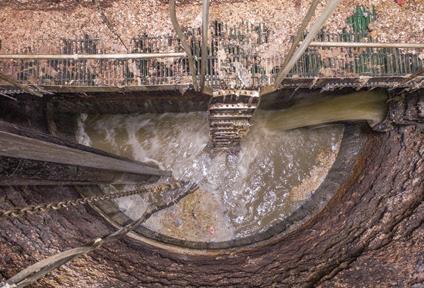
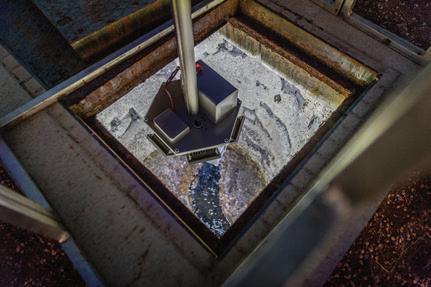
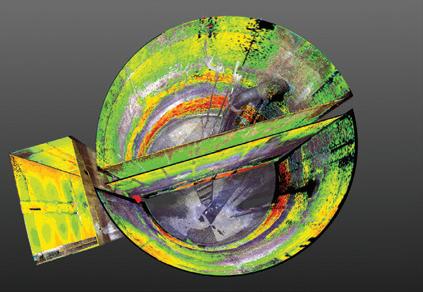
✓ 3D LASER SCANNING AND ASSET INSPECTION
• 3D scan of sewer asset
• Assess structural integrity of asset
• Determine amount of concrete deterioration
• Detailed interactive report with 3D modelling
• High definition video footage and photographs





www.mcrobertcontracting.com.au 08 9411 0666 office.admin@mcrobert.com.au
BEFORE
BEFORE AFTER AFTER BEFORE
Identifying critical differences between SMART WATER METERING AND SMART WATER
Water utilities are quickly evolving into smart utilities by embracing new technology. In this time of change, it’s important to distinguish the fundamental differences between Smart Water Metering and Smart Water, to ensure the best business and financial outcomes are achieved.

Smart Water (SW) includes Industrial Internet of Things (IIOT) and Supervisory Control and Data Acquisition (SCADA), representing a complete end-to-end water system from water source (dam, bores etc.) through to transmission, treatment, distribution, consumption, and sewer and stormwater systems.
The introduction of IIOT enables a far broader range of monitoring, data gathering and use cases to be addressed than traditional SCADA, enabling improved insight, greater optimisation and risk management.
Smart Water Metering (SWM) is a subset of Smart Water, focusing on residential, commercial and network meters. SWM devices all perform the same simple function; collecting water meter data.
Once this data is collected, it opens a treasure trove of opportunity to solve water problems.
There are likely to be 50 to 100 times more SWM than SW devices in a utility, and so individual unit cost and overall device life are key drivers for lowest total cost of ownership (TCO).
MAKING A DECISION: FEATURES VS TOTAL COST OF OWNERSHIP
SW solutions often rely on specialised sensing devices for a specific purpose and are limited in number, whilst from the SWM point of view, there’s a lot of discussion of new sensors and remote shut off valves being integrated into meters, along with the need for flexibility to change radio endpoint behaviours.
SMART WATER METERING AT THE MOST FUNDAMENTAL LEVEL, NEEDS TO INCLUDE:
• Reliable and consistent meter readings
• Battery life of 15-20 years
• Radio network availability
• Devices built tough and proven in Australian conditions
In SW battery life is an important consideration, but devices are often fewer in number and inspected semi-frequently, which provides opportunities for battery replacement. However for SWM, aside from meter audits, the meter isn’t touched for 15-20 years.
Matching battery life and ongoing communications availability to meter life is essential to minimise the TCO. The field service costs can quickly escalate if the technology is not proven, or early battery life failure could require a site visit earlier than expected.
The introduction of IIOT in the SW space is a natural extension to the existing operating technology capabilities, but moving to SWM introduces a range of new business transformation considerations, compared to traditional metering.
This includes new technologies like Meter Data Management Systems (MDMS), field servicing, device lifecycle management and alignment with customer service operations.
A smart water meter initiative is a significant investment, with a proven partner ensuring a successful deployment of the solution and ongoing operation success.
Over the past ten years, Taggle Systems end-to-end Smart Water Metering and Smart Water solutions have been successfully deployed to over 40 water utilities across Australia.

This hands-on experience in technology, deployment, field operations, business integration and the Australian environment, allows new utilities to overcome common pitfalls.
40 BIG DATA | Sponsored editorial
THE ROCK DRILL FOR A RANGE OF CONDITIONS
The D40x55DR S3 Navigator ® horizontal directional drill helps deliver excellent productivity in a broad range of conditions, from hard, medium and soft rock. Dual rod technology delivers powerful down-hole drilling action and the flexibility to select the right tooling to match ground conditions. Maximise jobsite productivity with 40,000 lb (177.9 kN) of thrust and pullback and 5500 ft-lb (7457 Nm) of rotational torque. Demo the D40X55DR S3 and experience the difference.






VermeerAustralia VERMEERAUSTRALIA.COM.AU | 1300 VERMEER Vermeer and the Vermeer logo are trademarks of Vermeer Manufacturing Company in the United States and /or other countries. © 2021 RDO Equipment Pty Ltd (trading as Vermeer Australia). All Rights Reserved.
/
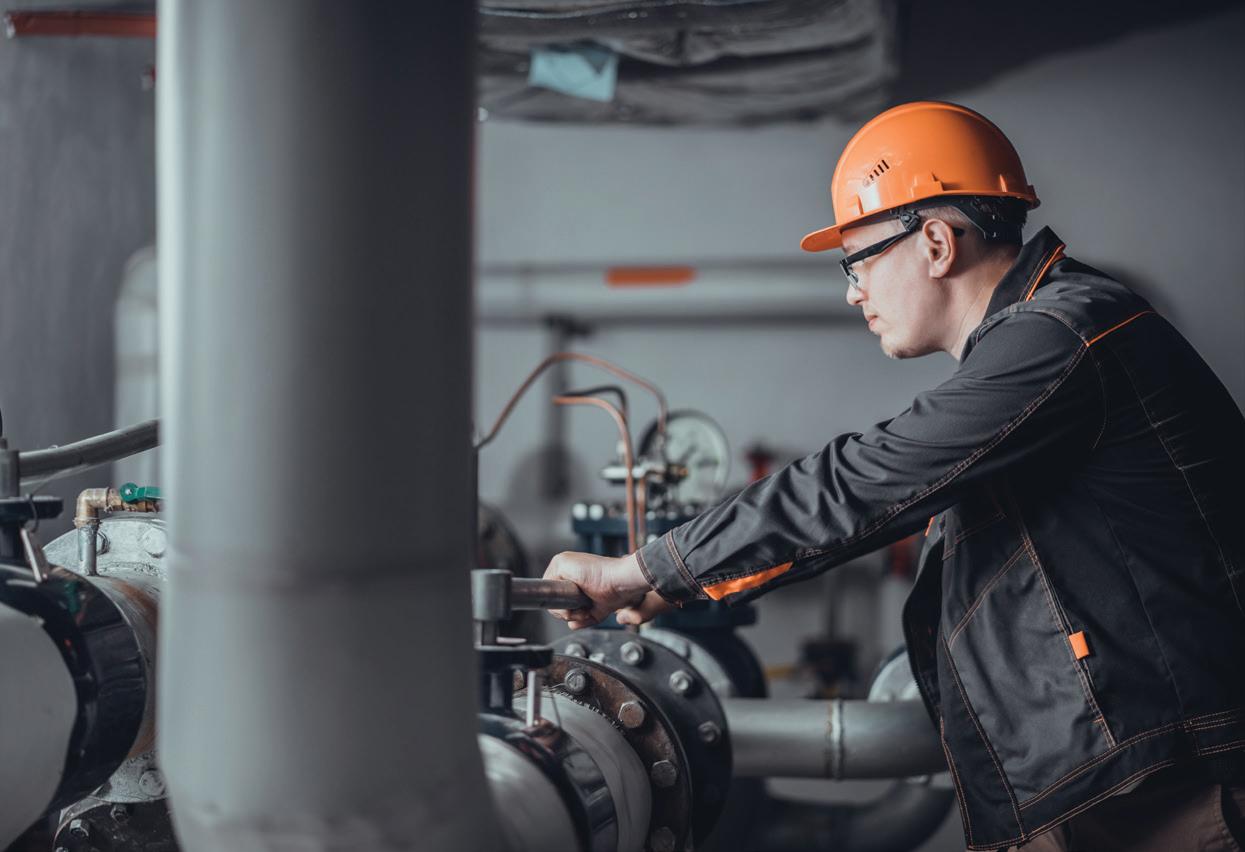
HOW AMENDMENTS TO THE
SECURITY OF CRITICAL INFRASTRUCTURE ACT WILL IMPACT YOUR UTILITY
by Richard Bergman, Partner, EY Oceania Cybersecurity, and Clement Soh, Associate Partner, EY Oceania Cybersecurity
Every year, organisations are spending more and more money on their security defences. But every year, we see the frequency and severity of cyber attacks against Australia continue to increase.
The upcoming regulatory changes to the Security of Critical Infrastructure Act will set a higher baseline standard for organisations across the sectors now deemed critical infrastructure.
These changes are in response to the increasing threat landscape and acknowledgement that the security baseline across our critical infrastructure is insufficient to protect Australia from the risk of a significant attack or outage.
The Australian Cyber Security Centre (ACSC), part of the Australian Signals Directorate (ASD), receives a report of a cybercrime attack every eight minutes. That equaled 67,500 cybercrime attacks reported between 1 July 2020 and 30 June 2021. Of concern was that around 25 per cent of these attacks were targeting critical infrastructure.
Further to this, ASD has estimated that a significant attack on our critical infrastructure could cost the Australian economy up to $33 billion and wipe out 160,000 jobs. Across Australia, Federal Government, State Government and
Territories, Health, Education and Professional and Technical Services were the top five sectors targeted.
The three most significant challenges that utilities are struggling with are:
1. Skills shortage – the ability to attract, develop and retain cybersecurity, technology and risk talent in an already competitive skills market
2. Cost of compliance versus risk-based approach – clarity and confidence to define the ‘statement of applicability’ when adopting legislative and compliance obligations.
According to the EY Global Information Security Survey (GISS) 2021, 55 per cent of power and utility respondents agree that regulations will become more fragmented and time-consuming to manage in the next few years
3. An appropriate level of investment and prioritisation – to have visibility of risk across the converged OT and IT environments
UTILITY • FEBRUARY 2022 WWW.UTILITYMAGAZINE.COM.AU 42
CYBER SECURITY
We predict the frequency and severity of cyberattacks to continue to increase based on these three leading indicators:
1. EY's Global Information Security Survey identified that 81 per cent of organisations side-stepped their existing cyber security controls and processes
2. Existing maturity across the eleven industry sectors remains low, and most sectors have underinvested in their ability to prevent, detect and respond to a cyber attack
3. Ransomware attacks will continue to increase. There has been a shift by cybercriminals to disrupt critical infrastructure, increasing the pressure and likelihood of payment of hefty ransom amounts greater than $2 million
The draft Security Legislation Amendment (Critical Infrastructure) Bill released in December 2020 expanded the definition of critical infrastructure to broaden the sectors covered by the Act.
There will be eleven critical infrastructure sectors that will be subject to government assistance and may have designated critical infrastructure assets. They include: 1.
One. Bill One will include the ability for the Australian Signals Directorate to step in and effectively take control of an organisation's response to significant cyber attacks. This is one of the biggest concerns raised by industry.

RECOMMENDATIONS FOR YOUR UTILITY
The Joint Committee is eager to see Bill One pass before the end of the Parliamentary sitting calendar in 2021.
All other proposed amendments, including risk management programs and declarations of systems of national significance, are recommended to be passed in Bill Two, following further consultation with industry on these positive security obligations.
At this stage, it is too early to tell where Bill Two will end up. The expectations across industry are that the minimum expected security baselines and compliance burden would be reduced for most utilities.
CONCERNS RAISED BY THE UTILITY INDUSTRY
There has been widespread concern from the industry regarding the cost of compliance and the Government's reach with step-in powers in the event of a cyber attack.
The Bill includes several obligations, including complying with a critical infrastructure risk management program, mandatory reporting of cybersecurity incidents to the Government, and for assets of national significance, to work with the Australian Signals Directorate to conduct cybersecurity exercises.
The Parliamentary Joint Committee on Intelligence and Security (The Joint Committee) has been considering the proposed amendments to the Act. The Joint Committee has tabled an advisory report with 14 recommendations that includes splitting the Draft Bill into two amended Bills.
Bill One will facilitate the implementation of the governance assistance measures to address the increasing threats to Australia's critical infrastructure. At the same time, the industry consultation will continue to seek consensus on the less urgent elements to be addressed in Bill Two.
The Joint Committee expressed significant concern that it may not be possible to reach industry consensus whilst acknowledging the concerns of industry with the burden of regulatory duplication and the unquantifiable regulatory costs.
The Joint Committee recommends that the government assistance measures outlined in Part 3A be included in Bill
While continued debate remains on the legislation across industries, many organisations need to acknowledge that their overall cybersecurity maturity is too low for the increasing risk of a cyber attack.
Organisations cannot wait for the proposed bills to pass, we recommend:
• Prepare for Bill 1 and the governance assistance measures to commence, including uplifts to your cybersecurity incident response, recovery playbooks and procedures, including notification provisions
• Participation in the industry consultation process to shape the rules and positive security obligations, balancing the cost of compliance with the necessary risk-based approach aligned to your Enterprise Risk Appetite management of a material risk or catastrophic failure
• Adopt the all-hazards approach to managing security risk, protecting critical infrastructure to manage converged security risk and resilience across critical assets
• Organisations need to improve their supply chain resilience and collaboration to combat security risks, by collaborating across supply chains to mitigate upstream and downstream risks with increased reliance on complex digital ecosystems and supply chains
UTILITY • FEBRUARY 2022 WWW.UTILITYMAGAZINE.COM.AU 43
Communications
Financial services and markets
Data storage and processing
Defence industry
Higher education and research
Energy
Food and grocery
Health care and medical
Space technology 10. Transport
Water and sewerage
2.
3.
4.
5.
6.
7.
8.
9.
11.
CYBER SECURITY
TO A LOW CARBON ENERGY
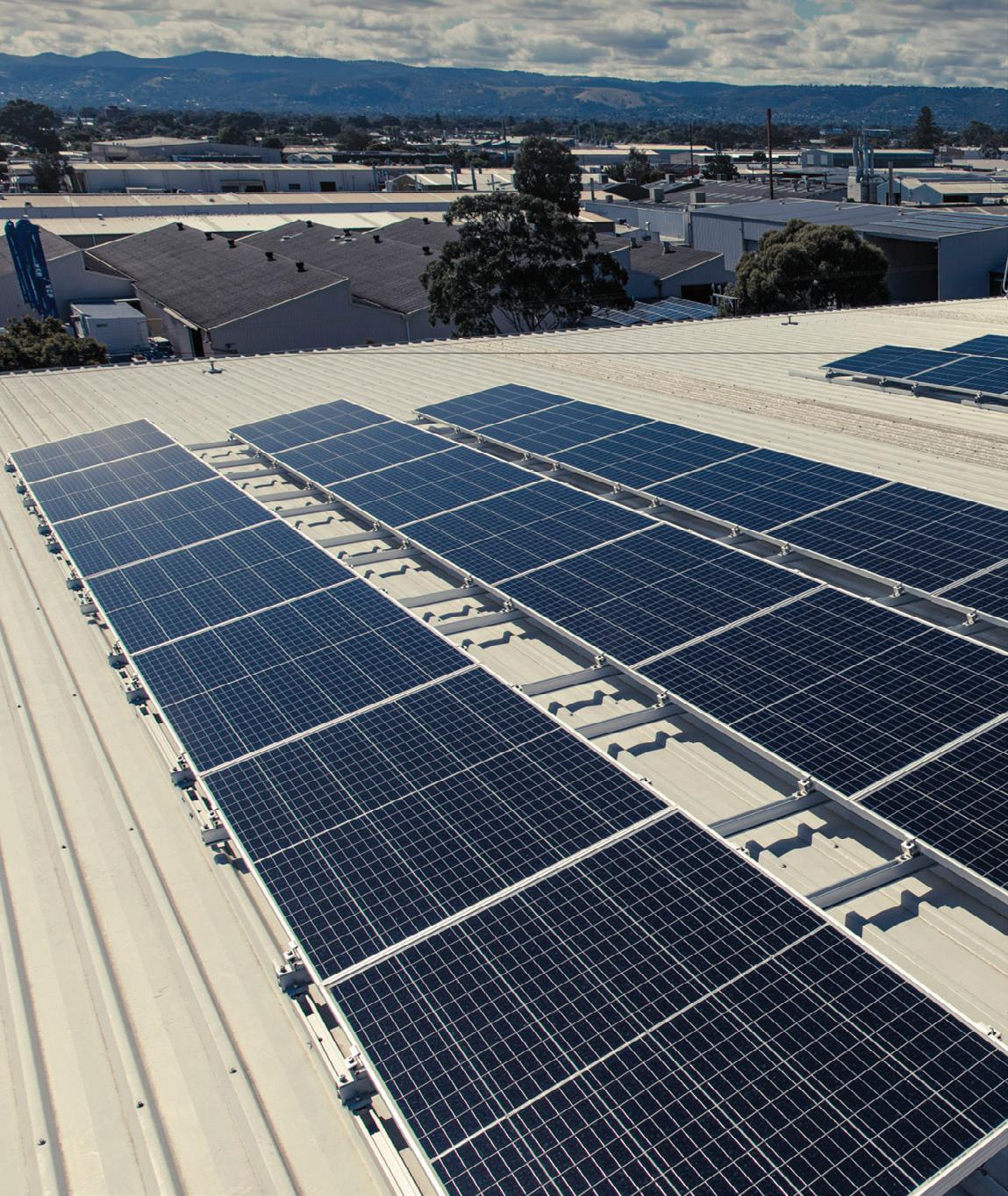
UTILITY • FEBRUARY 2022 WWW.UTILITYMAGAZINE.COM.AU 44 SOLAR
ENERGY FUTURE

Australia is going through an exciting energy transition that, in part, is being driven by customers who are continuing to invest in distributed energy resources (DER) such as rooftop solar.
UTILITY • FEBRUARY 2022 WWW.UTILITYMAGAZINE.COM.AU 45
SOLAR
In South Australia, more than one in three customers have installed rooftop solar, with total capacity now exceeding 1.8GW – a vast resource of the same scale as the state’s typical electricity demand of around 1.5GW.
SA Power Networks, recently named by the Australian Financial Review as among Australia’s top five innovative companies in the energy, mining and agriculture sectors, has developed a suite of solutions that will enable greater DER uptake and the continued transition to a decarbonised and decentralised energy system.
Mark Vincent, General Manager Strategy & Transformation at SA Power Networks, said the utility is committed to supporting the decarbonisation of the state’s energy system and sees the energy transition as a tremendous opportunity to create an affordable, reliable, low carbon energy system that will deliver significant value for its customers and community.
“We have reached the stage where rooftop solar will soon be able to meet all of our state’s energy demand, making South Australia the first gigawatt-scale system in the world to be faced with the challenges of a highly decentralised energy supply. That means we are working as a virtual test-bed for networks and energy markets in Australia and overseas,” Mr Vincent said.
“Over the next decade, we can expect the amount of solar connected

to our network to double, as well as almost a gigawatt of residential energy storage and over 150,000 electric vehicles. In total, over 5GW of resources will be operating on a power system designed for 3GW.
“The key to making it all work is flexibility,” Mr Vincent said.
“There is a lot of interest in what we’re doing, particularly the development of innovative flexible connection options for DER.
“Flexible connection arrangements, where customer and network equipment work together, will be central to maximising the value of the future energy system. We think they will become a standard approach nation-wide. Given our immediate challenges, we’re prioritising the introduction of our new ‘Flexible Exports’ connection offering for solar.”
In simple terms, instead of implementing a lower fixed export limit
in constrained areas of the network (as some other networks have done), SA Power Networks has developed a flexible export solution that allows solar exports up to 10kW depending on network capacity at any given time.
THE FLEXIBLE EXPORTS TRIAL
The ‘Flexible Exports’ connection offer is being developed as part of a $4.84 million ARENA-funded trial, with SA Power Networks and Victorianbased AusNet Services partnering with industry-leading inverter manufacturers, Fronius, SMA, and SolarEdge, and energy management software company SwitchDin, to develop the technical capability needed to offer solar customers flexible rather than fixed export limits.
Brendon Hampton, Manager Network Strategy at SA Power Networks, said, “Flexible export limits offered under the trial will enable
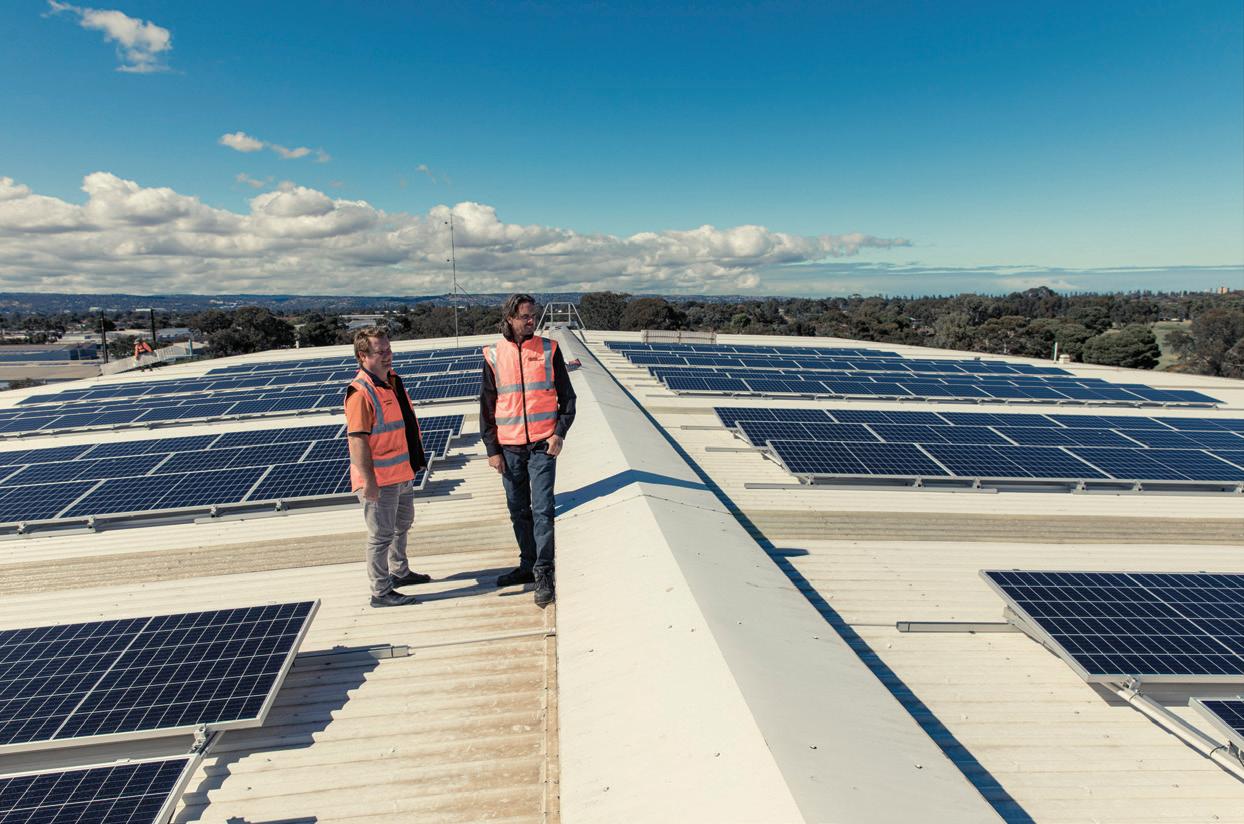
SOLAR 46

more customers to connect to solar and also provide greater solar export opportunities throughout the year.”
“With Flexible Exports, solar exports are automatically adjusted to maximise the amount of solar that can be connected and exported to the electricity grid.
“Based on our modelling, we believe customers will be able to export up to 10kW, 98 per cent of the time, which will provide significantly more access to the network than even our standard fixed 5kW export limit.”
Initially, SA Power Networks is offering Flexible Exports in areas served by the Sheidow Park substation in Adelaide’s southern suburbs. More than 46 per cent of households in the area have solar and the local network is reaching its limit to support more solar connections at the current fixed export limit of 5kW. However, the network is only congested at rare times (e.g. mild, sunny days in spring).
Mr Hampton said the Flexible Export option had only been made possible through working closely with trial partners and extensive engagement with the solar industry.
“We recognised that introducing this new option was a significant change for
customers and for the solar industry,” Mr Hampton said.
“Establishment of our Solar Industry Reference Group meant we could work through all the challenges with solar retailers and installers to achieve a marketable solution which is now being tested in the real world.”
THE CHALLENGES
The rapid growth of solar has created several challenges for networks. First, in localised areas, solar exports can exceed the local network’s capacity, resulting in issues such as rising voltages and inverters switching off in response. And, when there are large amounts of solar energy being exported into the network at once and there is low energy demand, it can overload major assets and create issues for managing security of supply.
Currently, solar customers in South Australia are able to export the excess energy they create back into the network with a fixed limit of 5kW per phase. But in areas with a very high take up of solar, SA Power Networks is faced with the need to reduce export limits to 1.5kW for new connecting customers to avoid exceeding network capacity.
Instead, SAPN will offer customers a choice of either a smart new Flexible Exports option or a flat 1.5kW limit for the whole year.
Energy Networks Australia (ENA) has congratulated SA Power Networks on its world-leading trial. ENA Chief Executive, Andrew Dillon, said the project, introducing flexible export limits, had far-reaching implications for solar customers across the country.
“This is the future – a smarter, more flexible power system. It is fantastic news for South Australian customers,” Mr Dillon said.
“We are in the early stages of this new technology, and Flexible Exports is a world-first that will help us accommodate more solar on our network,” Mr Vincent said.
“We expect that once we have proven the technology and validated the customer experience that this will become a standard offer for new solar customers in South Australia from mid-2022.
“The widespread adoption of Flexible Exports and introduction of some other initiatives we are putting in place will help achieve our goal to double the amount of solar we can accommodate on our network by 2025.”
UTILITY • FEBRUARY 2022 WWW.UTILITYMAGAZINE.COM.AU 47
SOLAR
THE WORLD’S ONLY CAT III 1500 V CURRENT CLAMP

The Fluke 393 FC CAT III 1500 V/CAT IV 600V True-rms Clamp Meter with iFlex is designed for technicians who work in dc environments up to 1500 V.
The clamp is ideal for environments such as solar arrays, wind power, electric railways, data centers, battery banks for uninterruptible power supplies, and comes with 1500 V CAT III insulated test leads.
The Fluke 393 FC meets standard for photovoltaic panels (IEC 61730-1) and extends safe measurement range up to 1500 V DC.
INCREASE PRODUCTIVITY WITH FLUKE
The Fluke 393 FC CAT III 1500 V/CAT IV 600V True-rms Clamp Meter with iFlex can do it all: V, A and Power (kVA), meaning DC power measurements can be made quickly and accurately.

The tool also ensures PV panels are properly installed, with the help of an audio beep to indicate incorrect polarity, and visual continuity – which makes continuity testing easier in low-light situations.
RUGGEDNESS AND RELIABILITY ARE ACCOUNTED FOR
Fluke 393 FC clamp is sturdy with ingress protection (IP54) to support usage in outdoor environmental conditions.
It also comes with a 25 per cent thinner jaw than Fluke 37X Clamp meters, making it easier and faster to take measurements in tight and overcrowded spaces.
This new, improved design is durable, rugged and reliable and meets the stringent CAT III creepage and clearance requirements.
Fluke Connect® software makes it easy to record, analyse and share results, and remotely log, trend, and monitor measurements to pinpoint intermittent faults.
The software also automatically records all measurements, sees the full set of three phase readings briefly, collects data over time for preventive maintenance and easily shares results and questions with coworkers.
It also allows workers to work at a safe distance outside of the arc flash zone.
FEATURES & BENEFITS:
• Safe and accurate voltage measurement up to 1500V DC
• IP54 rating for dust and water, making it ideal for work outdoors on solar arrays and wind power systems
• DC power measurement, showing readings in kVA
• Audio and Visual Polarity to ensure photovoltaic panels are properly installed with the help of an audio beep and a light to indicate correct polarity
• Visual Continuity that provides a bright green indicator light in the display for working in dark and noisy environments
• Logging, sharing, and reporting of test results via Fluke Connect software
WWW.UTILITYMAGAZINE.COM.AU 48
For more information, go to: https://fluke.co/393FCUE SOLAR | Sponsored editorial



WATER TRANSITIONING TO A
WATER RESILIENT HARBOUR CITY

50
SYDNEY
The oldest urban area in Australia will be cooler, greener and more resilient under a new approach to water management led by Sydney Water.
The Eastern region of Sydney – also known as the iconic Harbour City – is a dynamic and thriving region, home to the Central Business District and a major hub of economic activity. Stretching from the Northern Beaches to Cronulla in the south, and from the coast to as far west as Bankstown and Strathfield, the region is expected to welcome two million additional residents by 2056. This will increase the Harbour City’s population to 4.1 million.
A growing population, in combination with climate change, will put additional pressure on the Harbour City’s water supply, waterways and aging infrastructure. Sydney Water’s Eastern Sydney Regional Master Plan addresses these challenges and identifies new and innovative ways to transition to a water resilient Harbour City.

EASTERN SYDNEY REGIONAL MASTER PLAN
Sydney Water, in partnership with NSW government agencies, local councils and subject matter experts, has developed a comprehensive, forward-looking approach that considers the entire water cycle to achieve a more sustainable future.

Sydney Water General Manager of Asset Lifecycle, Paul Plowman, said the long-term, adaptive planning techniques outlined in the Eastern Sydney Regional Master Plan will guide water services in the Harbour City, and ultimately mitigate the impacts of global warming.
“The master plan evaluates four possible pathways to achieving water resilience that improve the health of our rivers and beaches, support the green spaces needed to cool the city, mitigate floods and reduce carbon emissions,” Mr Plowman said.
“The degree to which these benefits can be realised varies with each pathway and depends on the number and scale of solutions that are implemented in the coming decades.
“We need to plan now to ensure we can support the growing Eastern Sydney region well into the future.”
WATER 51
SYDNEY
TOWARDS A CIRCULAR ECONOMY
Water services in Eastern Sydney have evolved since the early 20th century as the region has grown. Since the days of the Tank Stream in Sydney Cove, the city’s first engineered water supply, the main source of water for the region has moved further away. Today, Eastern Sydney receives most of its water from remote catchment dams in Western Sydney, and most of its treated wastewater is released into the ocean.
Instead of continuing along this linear pathway, the master plan identifies options to capture and reuse materials from the treatment process to generate renewable energy. The three ocean treatment plants at Bondi, North Head and Malabar could produce enough renewable energy from biogas to power the plants, and potentially export surplus energy to the grid. This would equate to a 90 per cent reduction in annual greenhouse gas emissions from the plants by avoiding drawing power from the grid.
Sydney Water recently partnered with Jemena to generate biomethane, also known as renewable natural gas, at the Malabar wastewater treatment plant. This will be exported to the natural gas network, which will see thousands of homes and businesses using renewable green gas for cooking, heating and hot water.
DIVERSIFYING WATER SUPPLY IN THE EAST
Eastern Sydney relies on rainfall over catchment dams for 85 per cent of its water supply. The remaining 15 per cent is supplied by the Sydney Desalination Plant at Kurnell. Investing in alternate supply options will increase water resilience, particularly during times of severe drought.
The master plan considers a range of water sources which are aligned with the options outlined in the Department of Planning, Industry and Environment’s Draft Greater Sydney Water Strategy, including purified recycled water.
Sydney Water is already supplying recycled water to heavy industry, to irrigate green spaces such as golf courses, and, in some homes, for flushing toilets and watering gardens. Further diversifying Eastern Sydney’s water supply will provide a sustainable, reliable and safe water supply for generations to come.
THE CHALLENGE OF TOO MUCH WATER
The master plan addresses the challenge of heavy rainfall by including options to capture, treat and reuse stormwater, and identifies opportunities for increasing green spaces to reduce stormwater run-off. Importantly, capturing stormwater for treatment and reuse will further diversify Eastern Sydney’s water supply.
Most of the excess stormwater in Eastern Sydney is drained from the urban environment through engineered networks into local waterways. Urban renewal to accommodate for population
growth in the Harbour City is expected to increase the volume of stormwater run-off, which will put additional pressure on our waterways. The master plan identifies urban renewal precincts as opportunities to optimise stormwater management in the Harbour City.
The Green Square Stormwater Drain project, a collaboration between Sydney Water and the City of Sydney, is an important case study for better practice stormwater management. Designed to take floodwaters from Sydney into Botany Bay, the project enabled the City of Sydney to develop Green Square Town Centre. The Centre features a water recycling plant that treats water from the drain so it can be used by residents.
URBAN GREENING TO MODERATE TEMPERATURE
The urban heat island (UHI) effect occurs when dense dark surfaces in cities, such as bitumen and building materials, accumulate and store heat. Even in the Harbour City, where cooling sea breezes generally keep temperatures at a comfortable level, there are parts of the region that get unbearably hot in summer.
The NSW Government has set a target to increase tree canopy across Greater Sydney by 40 per cent by 2056 to reduce the UHI effect. The projected tree cover will require additional water, on top of the water required to support existing parks, playing fields and gardens.
Sydney Water's urban greening model has identified a water deficit – the gap between the water needs of thriving vegetation and available rainfall – of up to 166GL by 2036. This water deficit could be 4–5 times greater during a severe drought.
The master plan identifies opportunities to supplement water supply by capturing stormwater through permeable pavements and green roofs, particularly in areas undergoing urban renewal. Using stormwater for the passive irrigation of street trees will also mean we have more water for more uses.
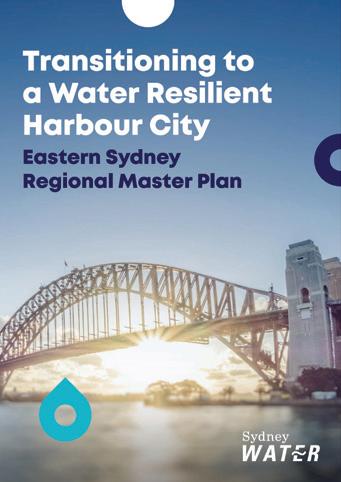
WATER BELONGS TO ALL OF US
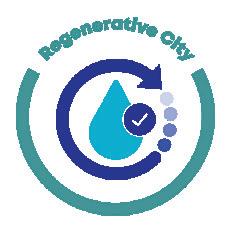
Paul Plowman said the vision of a regenerative Harbour City can only be realised through active collaboration.
“Sydney Water welcomes the opportunity to continue working with state and local government, the development industry, business and local communities to sustain a greener, cooler and more resilient Eastern Harbour City now and into the future.”
The Eastern Sydney Regional Master Plan is available on the Sydney Water website.
UTILITY • FEBRUARY 2022 WWW.UTILITYMAGAZINE.COM.AU 52 SYDNEY WATER
PROVIDING SOLUTIONS FOR:
• Municipal Sewage Treatment
• Commercial & Industrial Estates
• Government Projects
• Residential Developments
• Urban Subdivisions
• Resorts & Caravan Parks
• Mining Accommodation
• Airports & Infrastructure
• Service Stations
• Defence Assets
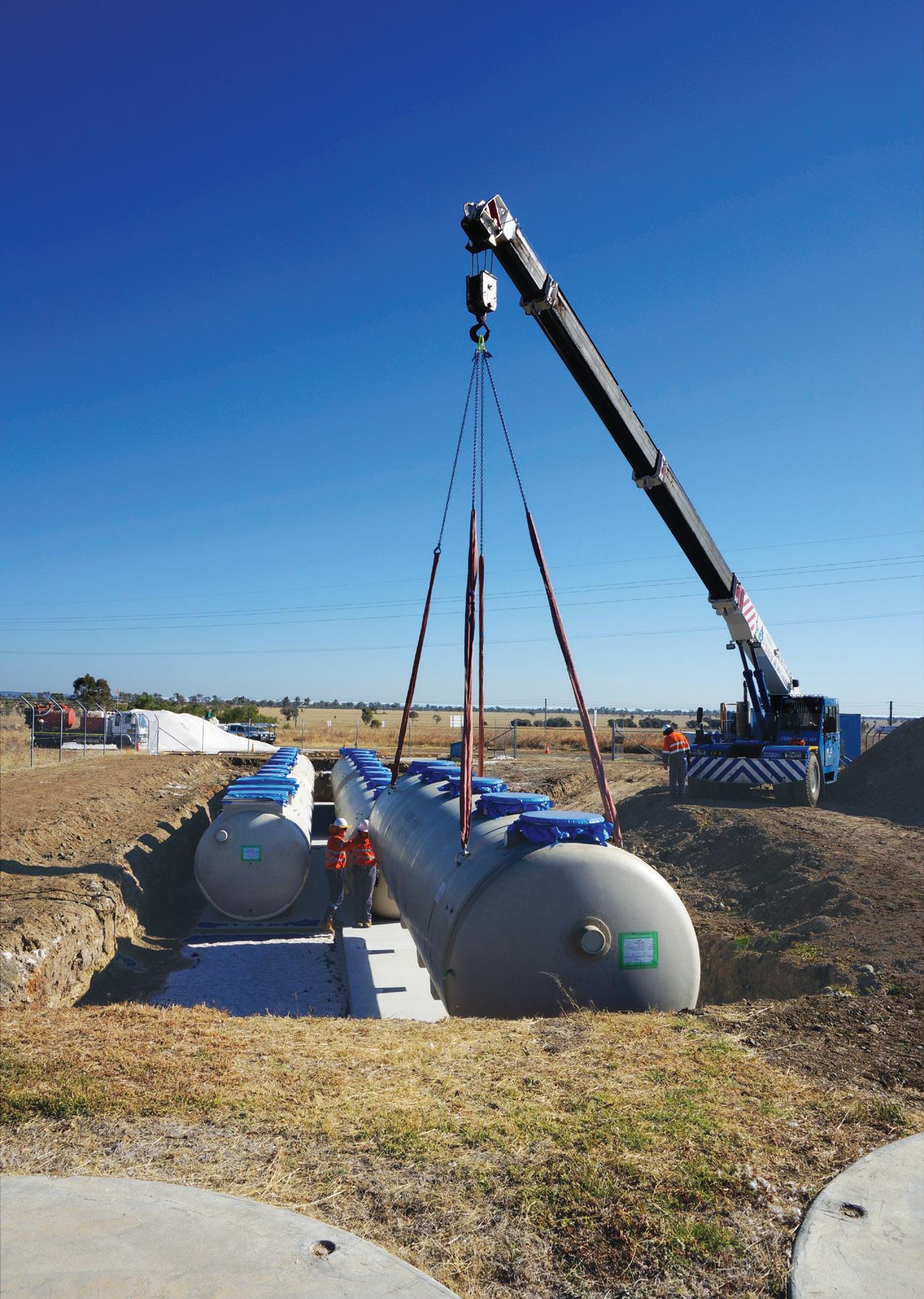


1800 057 771 | truewateraustralia.com
SEWAGE & WASTEWATER SPECIALISTS
• DESIGN • MANUFACTURE • INSTALLATION • MANAGEMENT
us about our CONNECTmi® and TELEmi® products for dynamic real time Asset and Management.Monitoring
CONSULTANCY
Ask
CREATING THE FUTURE OF WATER
for councils and communities



Australia and New Zealand’s leading pipeline infrastructure company, Interflow, has a vision that supports the growth of its people, fosters partnerships with its customers, and ensures the wellbeing of the communities it serves.
Interflow has earned its top position in the water industry by continually challenging the status quo, and servicing the needs of local councils, water authorities and pipeline infrastructure asset owners for 85 years.
As an experienced delivery partner, Interflow provides end-to-end services for local councils and water authorities via its self-performed capabilities and network of trusted sub-contractors.
Interflow’s services encompass project planning, design, construction and maintenance across the water, wastewater, stormwater and culvert segments.
Innovation lies at the core of Interflow’s service offering, from proactive asset management to emergency repairs.
From metropolitan water authorities to remote local councils, the company works closely with its customers to develop tailored solutions that work for customers and the community.
EFFECTIVE AND EFFICIENT ASSET MANAGEMENT
Interflow demonstrated a proclivity for innovation very early on, exemplified in the 1990s when the business pioneered trenchless pipeline rehabilitation.
Trenchless technologies have quickly become the construction methods of choice for local councils and water authorities across Australia and New Zealand.
The company recognises that asset owners have moved towards ‘trenchless tech’, as dig and replace methods, particularly in urban areas, can be disruptive, impacting residents, commuters and the environment with dust, noise, and a hefty site footprint.
Trenchless technology can minimise these impacts by reducing environmental disruption to a single point of entry, as well as minimise project time and costs.
This presents valuable cost savings to local councils, who often look for the most efficient and effective ways
to preserve their critical pipeline infrastructure, without compromising quality.
CREATING A HEALTHY ENVIRONMENT
Just as councils expect quality solutions that will support the community for years to come, there is also a demand for solutions that are environmentally responsible.
Throughout its history, Interflow’s people have worked in some of the most sensitive areas, each time going above and beyond to preserve and protect the working environment.
Trenchless technology enables service providers, such as Interflow, to remain customer-focused and environmentally savvy by reducing the emissions and environmental risks associated with excavation.
It is well established that trenchless pipeline construction methods also reduce air and noise pollution, benefitting the surrounding ecosystems of wildlife and residents.
BRINGING THE COMMUNITY ALONG ON THE JOURNEY
Beyond the delivery of projects and environmental management, Interflow has the capacity to expertly manage all community engagement aspects of a project.
To keep the community connected and informed, open communication with residents is fundamental. This includes providing regular updates, seeking permission to enter private property, and, where appropriate, responding to residents’ concerns.
Interflow strives to complete every project on time, within budget and without incident, enabling residents to go about their daily lives.
To find out more about Interflow’s solutions for water infrastructure networks, contact us to work on your company’s asset management plan.
UTILITY • FEBRUARY 2022 WWW.UTILITYMAGAZINE.COM.AU 54
SYDNEY WATER | Sponsored editorial






 Wastewater Stormwater Culverts Water
Wastewater Stormwater Culverts Water
Securing Life’s Essential Clean Living for Our Communities Sustainable Waterways Channelling Flows
HIGHLIGHTS FROM SYDNEY WATER'S INNOVATION FESTIVAL

If the feedback from participants is a true measure, then the inaugural Sydney Water Innovation Festival was truly successful.
Dr Nicola Nelson, Manager, Research and Innovation at Sydney Water, said the aim of the Innovation Festival was to create an event which brought together water utilities and all their key stakeholders to generate new ideas and to solve key challenges, where we could work together in a fun way to create a better life for our communities.
“We certainly achieved this aim, with over 1,300 registering for the festival from 25 countries, which, with our partnership with Northumbrian Water in the UK, made it a truly global event,” Dr Nelson said.
“The festival outlined the challenges of the private and public sectors and demonstrated that we should be collaborating more.
“The pleasing aspect is that tangible outcomes have been created – things we can practically do in the next 12-18 months,” Dr Nelson said.
FESTIVAL THEMES
The Innovation Festival focused around six themes: circular economy, liveability, water security, smart cities, customer experience and amplifying the voices of Aboriginal Peoples. Design sprints and panel sessions were conducted to provide solutions to challenges aligned with each theme.
Circular economy
Local Grow is a case study project working with the local community to produce fresh food in a circular economy. It will be a partnership
between Sydney Water, local indigenous communities, local industry and residents, to create co-located food hubs supplying food for the local community.
The local groups will provide food waste and organics to be recycled into composted products and to produce energy and heat to fuel the greenhouse to grow produce. Sydney Water and its partners will provide the technology and services to provide safe, reliable water and composted biosolids for hydroponics, aquaponics and soil-based urban agriculture systems.
Liveability
The challenge – How can we extend safe swimming in Sydney Harbour? A two-year goal was created for the 2023 summer of swimming in Sydney Harbour with private sector engagement, involving a series of events and initiatives that test swim sites with pop-up pools while trialling new approaches and community engagement.
Water Security
The challenge – How might we determine the right balance between controlling and incentivising businesses to implement wastewater source control?
The solution – The Ideas Portal; an online space dedicated to assisting business customers to discover ways to reduce contaminants and pollutants in their trade waste, as well as assistance on how to apply for grants
or to create partnerships to support their implementation of pilot solutions.
Smart cities
The Smart Cities ‘Datahack’ brought together some of the country’s brightest data scientists from Sydney Water, as well as the government, tertiary and private sector to address the challenge of how to better understand wastewater networks and sewer overflows to deliver a better customer experience.
Supported by NSW Chief Data Scientist and UTS Industry Professor, Ian Oppermann, as well as Distinguished Professor, Fang Chen, the ‘hack’ generated some exciting innovation concepts to predict sewer overflows and to visualise underground pipes using augmented reality.
Customer experience
An initial solution suggested the creation of an app as a first interaction point so that information on water and sustainability can be shared with likeminded customers to create a ripple effect to help utilities create a better life for their customers.
Amplifying the voices of Aboriginal Peoples
Veronica Murphy, First Nation’s Inclusion Specialist at Sydney Water, said that one of the highlights of the festival was acknowledging the role of Aboriginal and Torres Strait Islander peoples as the first engineers in this country.
UTILITY • FEBRUARY 2022 WWW.UTILITYMAGAZINE.COM.AU
WATER
SYDNEY
56
SYDNEY WATER

“The blending of Aboriginal traditional knowledge with western science to find innovative ways to better manage our waterways and protect the environment can only be of benefit,” Ms Murphy said.
“An insightful Winang-ali Water Connects Us panel was conducted along with a design sprint which developed a roadmap to respectfully enhance the indigenous voice in decision making processes.
“There is much we can learn from the traditional custodians of our lands and waterways on how we can better manage the land and how to protect the environment for generations to come.”
TECHNOLOGY DELIVERY
The delivery partner of the Innovation Festival was Isle Utilities, who transported the concept created by Northumbrian Water in the UK to Australia and the concept was excitedly embraced by Sydney Water.
Dr Alex Cech, Chief Technology Officer at Isle Utilities, said, “There was a real focus at the festival on the importance of innovation in driving both technological and behavioural change.
“New, fresh and novel technologies from start-up to scaled-up and commercially ready were presented in a Shark Tank format across the six key themes of the festival,” Dr Cech said.
“Isle Utilities’ global innovation ecosystem was able to identify and source 36 innovative technologies which were presented at the Shark Tank sessions.
“Winners will now receive support from the festival sponsors and Sydney Water to develop their concepts further.”
THE SHARK TANK WINNERS Circular economy
The Green Genie, developed by researchers at the University of Technology Sydney UTS involves direct CO2 capture using algal biomass which is then converted to bioplastics and fibres.
The PYROCO unique pyrolysis technology developed by RMIT converts biosolids into biochar.
Liveability
WasteShark is an autonomous aqua-drone designed by Ranmarine Technology to remove floating pollution such as plastics, algae and biomass from lakes, ponds, waterways and harbours, while collecting environmental data from aquatic environments.
Biomatrix Water has developed Floating Ecosystems which provide societal and ecological benefits in urban waterways for habitat creation, urban waterscaping, water quality management and wastewater treatment.
Water security
Metropolder has created Polder Roof, a smart rainwater storage on roofs for urban water management.
Agua Via has developed atomically precise membranes that deliver high purity water from various sources of contaminated water.
Smart cities
Fibresense created by Supersoniq is a technology that employs existing fibre-optic network cables, integrated photonics and machine learning for asset monitoring and leak detection.
The Al-enabled Vulnerability and Intrusion Detection Solution developed by Macquarie University is an earlystage concept, with low Technology Readiness Level (TRL) that requires further research and development.
Customer experience
KartaSoft is a SaaS pre-packaged digital mapping platform making it easier and simpler for organisations to build powerful maps to engage their customers and see emergency risks.
Safety
MyPass Global has developed a Digital Skills Passport designed to streamline workforce safety and compliance in industries.
Storm Canal Traction Cleats, a fall prevention idea from Sydney Water’s WAVE Challenge uses reusable traction cleats to provide field crew with better traction in storm canals.
TANGIBLE OUTCOMES FOR CURRENT CHALLENGES
Closing the Innovation Festival, Sydney Water’s Managing Director, Roch Cheroux, said over the past few days, we have had the difficult conversations and faced the reality of our situation. We’ve talked about climate change and water security and shared stories of caring for country and what it means for the water sector and our cities.
“We have brought together our brightest and most enthusiastic minds to solve our biggest environmental and urban growth challenges,” Mr Cheroux said.
“There are already discussions taking place on next year’s Sydney Water Innovation Festival and how we can make it better and create even more tangible outcomes for the water industry. Watch this space!”
UTILITY • FEBRUARY 2022 WWW.UTILITYMAGAZINE.COM.AU
57
FULLY AUTOMATED IRON MEASUREMENTS FOR COST-EFFECTIVE WATER ANALYSIS

For many applications, the iron content in water is an essential measured value – it causes deposits, turbidity or affects the taste of food.
Thus, water with a high iron content is automatically filtered, but the purified water is then usually tested manually by taking a sample on site.
The Bürkert Online Analysis System with the MS06 iron analyser for photometric iron measurement can help in the measurement of iron content, by being able to fully automatically check the iron content in drinking water.
This includes several measuring points and allows long maintenance intervals – creating cost-effective water analysis.

The water analysis experts at Bürkert Fluid Control Systems offer a compact, fully automated solution for such applications, that enables continuous flow injection analysis (FIA) based on photometric iron analysis via an iron analyser.
If required, the system can be expanded by several sampling points at low cost, and additional sensor modules can be used for flexible measuring of all relevant water parameters, and thus increase process reliability.
Like all sensor cubes, the iron sensor can be easily integrated into a Bürkert Online Analysis System – for
It can be time-consuming having to constantly check the iron content in drinking water manually, with the continuous monitoring of quality parameters just as essential for drinking water procurement and water production in the food and pharmaceutical industries, as it is for seawater desalination or the treatment of wastewater.
example as a robust IP65 Type 8906 control cabinet solution.
The water analysis in the compact control cabinet is then customised to meet user’s needs and includes pH value, chlorine and chlorine dioxide, ORP value, turbidity and conductivity measurements, all in addition to iron.
All sensors are either maintenance-free or have long maintenance intervals and can thus be operated in a resource-saving way.
COMPACT IRON MEASUREMENT
The iron analyser determines the iron content in the range from 0 to 2 mg/l; larger detection ranges are available on request. To do this, process water is automatically sampled in cycles at up to four different sampling points and measured with the sensor by means of flow injection analysis.
Cleaning, calibration, adding of reagent, mixing and photometric analysis all run automatically. The result can be stored in the system or on the higher-level PLC using a data logger.
The optimised measuring device requires only 50 µl for each reagent per measurement. This means that one storage bottle is sufficient for approx. 5,000 measurements.
The self-calibrating system allows measurement intervals of 60 min between measurements, and the operating pressure is 1 bar.
Automated cleaning and EDIP-compatible communication (Bürkert’s own Efficient Device Integration Platform) allows quick installation and easy integration into process automation.
UTILITY • FEBRUARY 2022 WWW.UTILITYMAGAZINE.COM.AU 58
SYDNEY WATER | Sponsored editorial Further information can be found at: https://www.burkert.com/en/Products-Applications/Customised-Solutions/ Applications/Economic-water-analysis-for-monitoring-the-iron-content

Industrial water prefer to partner with Bürkert
Bürkert’s Online Analysis System is a compact and modular for monitoring all important water parameters on one platform. For municipal water treatment plants, this unit is made for fieldbus connectivity and remote access, saving time and money with this integrated water quality monitoring solution.


Type 8905
The following parameters can be integrated into an online analysis system, pH, chlorine/ chlorine dioxide, conductivity, ORP, turbidity and temperature
more
Discover
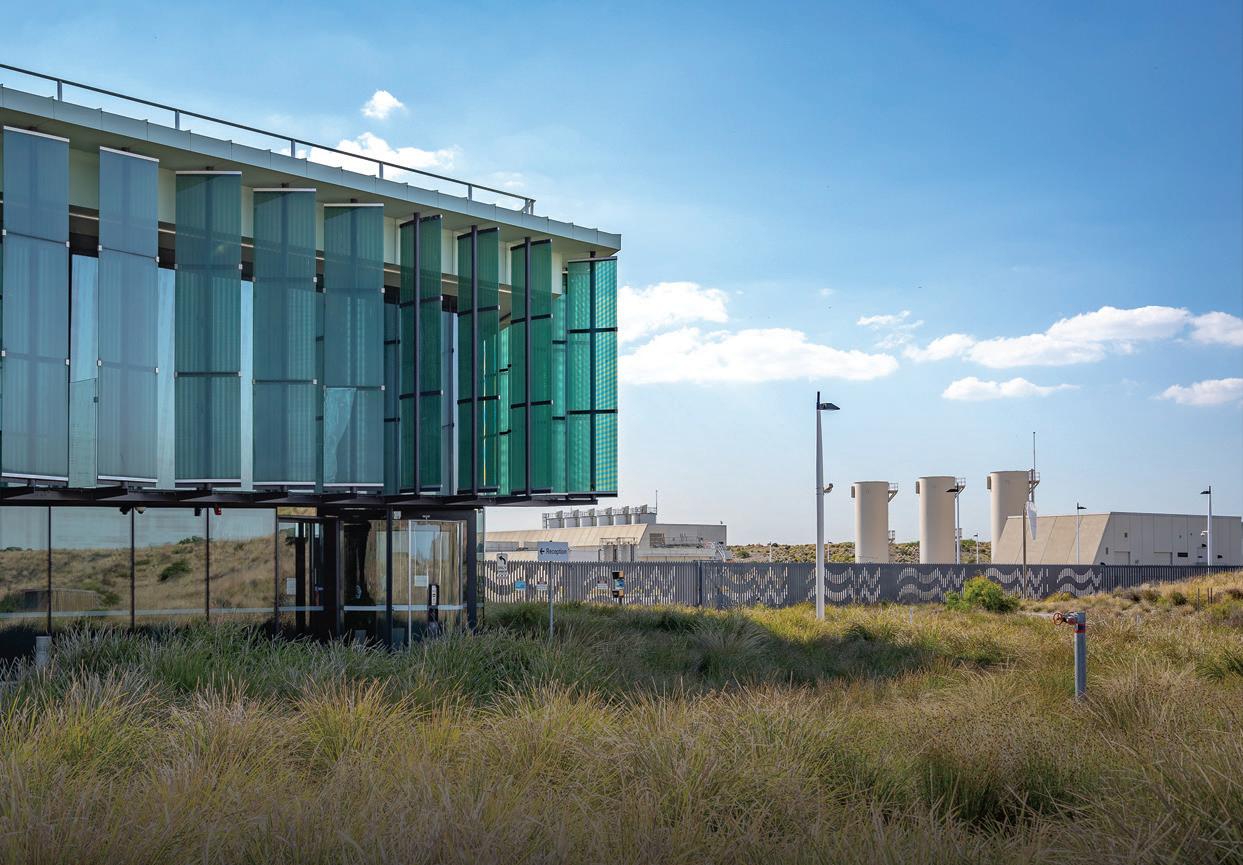
 by Annabelle Powell, Journalist, Utility magazine
by Annabelle Powell, Journalist, Utility magazine
Australia is projected to see up to ten per cent less rainfall across the south of the country by 2030, and 20 per cent by 2050. Alternative water sources, such as desalination, will play an increasingly vital role in providing the population with fresh water as we face the impacts of climate change.
Desalination is the process of removing the salt and impurities from seawater to make it drinkable. Desalination facilities withdraw enormous amounts of seawater through large pipes along or beneath the seafloor, which is then processed and treated to make it safe for consumption.
Desalination plants operate independent of rainfall, and with the high risk of events like heat waves, bushfires and cyclones gaining intensity in the coming decades, desalination plants can provide a critical backup supply.
Following the devastating effects of the Millennium Drought – Australia’s worst drought in living memory –concern rose that the country could run out of fresh water. Six major desalination plants were constructed across the states following the Millennium Drought, with the largest in Victoria, the state hit hardest by the dry conditions.
As Australia’s droughts become longer and more frequent, the existing desalination plants may have to function at a higher capacity than they are already. In addition, new plants continue to be planned and developed in coastal cities around the country.
FROM SEAWATER TO DRINKING WATER
There are two main methods that are used to produce desalinated water: distillation and membrane processes.
• Distillation: This process occurs naturally through evaporation or through very simple methods such as boiling salty water and condensing the steam. Commercial desalination plants using this process have been in operation for decades
• Membrane processes (reverse osmosis): Currently, the more widely used method relies on a semipermeable membrane with microscopic pores that separate bacteria, viruses, salt and other impurities leaving only fresh water. Most desalination plants built recently in Australia use reverse osmosis
Around 40 per cent of the water that goes through the desalination plant comes out as fresh drinking water. The remainder, known as brine, is pumped back into the ocean.
Drinking water produced by desalination plants is monitored and tested in the same way as water from a filtration plant and must meet the standards of the Australian Drinking Water Guidelines (2006)
UTILITY • FEBRUARY 2022 WWW.UTILITYMAGAZINE.COM.AU 60
AUSTRALIA’S MAJOR DESALINATION PLANTS
Major coastal cities in Australia have invested in desalination plants to improve water security.
In Perth, long-term reductions in rainfall have had a significant impact on dam flows, and desalination plants have become a base load provider of water. In 2020-21, water produced by the Perth and Southern Seawater Desalination Plants made up 47 per cent of the city's water supply.
In other coastal cities, desalination plants provide an insurance policy that ensures the population does not run out of water. Australia’s major desalination plants are:
• Perth and Southern Seawater Desalination Plants (Western Australia): The Perth Seawater Desalination Plant, located in Kwinana, was completed in late 2006. It produces 45 billion litres of fresh drinking water a year and around 17 per cent of Perth’s water supply. The Southern Seawater Desalination Plant in Binningup produces 100 billion litres of drinking water per year.
• Kurnell Desalination Plant (New South Wales): The plant is located in Sydney and was completed in 2010. It is currently the largest plant in the country and has the capacity to supply about 250 million litres of drinking water per day, supplying 15 per cent of Sydney’s water needs.
• Wonthaggi Desalination Plant (Victoria): The plant is located in Wonthaggi and was completed in 2012. The plant can produce 150 billion litres of water a year with the capability to expand to 200 billion litres a year.
• Gold Coast Desalination Plant (Queensland): The plant is located at Tugun and was completed in February 2009. It can produce up to 45 billion litres per year of drinking water for the Gold Coast, Logan and Brisbane.
• Adelaide Desalination Plant (South Australia): The plant was completed in 2011 and has the ability to produce up to 100 billion litres of water per year.
PLANNING FOR THE FUTURE
New desalination plants are in various stages of construction across Australia, in Kangaroo Island, Belmont and Eyre Peninsula.
In South Australia, Kangaroo Island’s new desalination plant is expected to improve drinking water security and support the island’s tourism and agricultural industries. The plant aims to add a layer of bushfire resilience. During the Black Summer bushfires, the higher-than-usual demand for water, primarily from fire-fighting use, was only able to be met through network reconfigurations and carting water from the mainland. Desalinated water would provide a backup supply to firefighters in the event of another severe bushfire.
Planning has also been approved for a new desalination plant in Belmont, New South Wales, to provide an enduring supply of water for the Lower Hunter Region. The new plant is expected to produce up to 30 million litres a day of drinking water, in response to droughts that have ravaged the Hunter region in recent years.
SA Water’s planned Eyre Peninsula seawater desalination plant is reviewing its location, following ongoing engagement with the Eyre Peninsula community. The utility is set to explore more cost-effective alternatives compared to the current preferred site near Sleaford Bay.
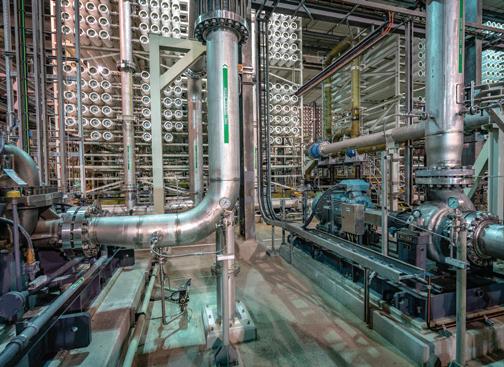
The Australian Government invested $20 million in funding to the National Centre of Excellence in Desalination Australia (NCEDA) in 2009 to conduct research supporting the development and commercialisation of innovative technologies in desalination.
Some of the projects objectives are to secure Australia’s water supply by:
• Providing leadership in accelerating ground-breaking research on energy efficient desalination technology for water supply being developed in Australia
• Investigating ways of optimising and adapting desalination technology for use in Australia's unique circumstances
The Federal Government has continued to invest in the NCEDA over the years, indicating its desire to innovate desalination technology as the population grows and the need for freshwater becomes more urgent.
ADDRESSING ENVIRONMENTAL CONCERNS
Most forms of desalination are energy intensive and have the potential to increase greenhouse gas emissions. Many Australian plants attempt to offset these emissions by using wind power or purchasing renewable energy certificates.
An additional environmental concern around desalination are the impacts of releasing brine back into the ocean. The salts and minerals extracted from the seawater forms a hyper saline slurry leaving it with a much higher salt concentration than seawater.
The high density and salinity of this brine waste can accumulate in and around disposal areas, smothering bottom dwelling species and altering coastal ecosystems. While diffusers are used to mix brine with seawater and disperse it at several different discharge points from desalination facilities, the large-scale uptake of desalination could overtake these protective measures.
Currently, there is an absence of detailed scientific studies on the impact desalination plants could have on marine ecosystems.
By 2025, more than 2.8 billion people in 48 countries are likely to be short of water. To adapt to this new way of life, our alternative water sources will become vitally important. As desalination technology continues to innovate, there is an opportunity to address environmental concerns and evolve the industry into a sustainable long-term solution.
UTILITY • FEBRUARY 2022 WWW.UTILITYMAGAZINE.COM.AU 61
SYDNEY WATER
MANAGING PRESSURE IN WATER NETWORKS USING POLYMER VALVES
Aging water distribution infrastructure and a growing population puts strain on water networks, causing over-pressurised or faulty pipes, which in turn, create non-revenue water. This is a significant challenge for utilities, but reducing water pressure is one of the key ways to minimise this water loss.
Retrofitting existing water networks with modern pressure management systems is providing a solution to the loss of precious water resources, as utilities such as Italy's IRETI have found.
Non-revenue water (NRW) is water that is lost before it reaches the customer, and is the difference between the volume of water input into a distribution system, and the volume billed to consumers.
Over-pressurising the flow of water through utility systems, often to support growing populations, creates a higher demand on networks, and leads to the accelerated aging of piping and fittings.
Studies have shown that reducing the pressure in a water network by 25 per cent can cut water losses by up to 75 per cent.
Proactive pressure management solutions, such as the polymer NeoFlow pressure regulating valve (PRV) from GF Piping Systems, can provide a much needed solution to help solve NRW.
IRETI: COMMITTED TO IMPROVEMENT
IRETI provides integrated water services for approximately 2.7 million people in almost 300 municipalities in north western Italy, supplying a network of around 20,000km in length.
Italy’s water loss reaches an average of 37 per cent across the country, so IRETI is only too aware of the challenges posed by NRW.
IRETI is constantly looking for reliable products to tackle water loss at the source and preserve precious water resources.
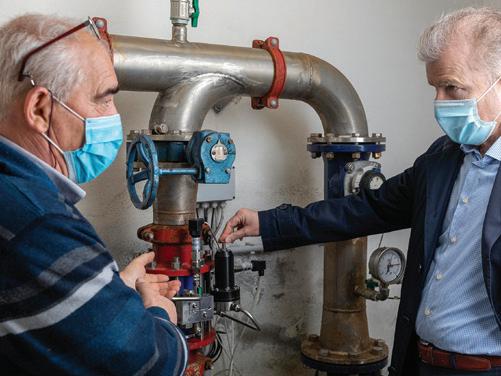
Marco Alberti, Sales Manager at GF Piping Systems Italy, said, “Challenges include unstable pressure due to rapid changes in consumption, and highpressure differences across valves.”

GF introduced NeoFlow, a polymer pressure-regulating valve, to the company two years ago in Reggio Emilia, with the experts from IRETI particularly impressed by its simplicity and innovative design.
They later participated in a pilot at an independent, certified laboratory in Nantes, France, which enabled them to see the product in action and its capabilities, including precise and stable flow control.
IRETI has now been using the GF pressure valves in its water network for a year, finding that the enhanced pressure stability guarantees consistent and reliable water distribution for both day and night, and reduces mechanical stresses caused by pressure variation.
Antonio Gualtieri, Technical Manager for Water Leakage Detection at IRETI, confirms its effectiveness.
“Thanks to pressure management, we have been able to achieve a 63 per cent reduction in pipe bursts,” Mr Gualtieri said.
SOLVING PROBLEMS THROUGH INNOVATION
The NeoFlow PRV has a simple axial flow design with a lightweight, corrosion-free polymer body, and is less prone to cavitation damage.
The NeoFlow has only three primary components (with no actuator stem or diaphragm) and a single moving part, with these innovative features ensuring high reliability and a longer operational lifetime.
Polymer valves are also significantly easier and more cost-efficient to install and maintain than metal valves, which can fail if not regularly maintained.
In addition, the space savings achieved with the compact design can be utilised to install instruments such as flow meters without modifying existing pipework.
UTILITY • FEBRUARY 2022 WWW.UTILITYMAGAZINE.COM.AU 62 SYDNEY WATER | Sponsored editorial
TO
ANTONIO GUALTIERI (LEFT), TECHNICAL MANAGER FOR WATER LEAKAGE DETECTION AT IRETI, AND MARCO ALBERTI, SALES MANAGER AT GF PIPING SYSTEMS ITALY, FINE-TUNING THE PRESSURE REGULATING VALVE. THE LIGHT AND COMPACT
DESIGN MAKES THE NEOFLOW EASY
INSTALL.





GF Piping Systems Your contact Georg Fischer Piping Systems Ltd Ebnatstrasse 111 8201 Scha hausen / Switzerland Telephone +41 (0)52 631 11 11 www.gfps.com GFDO_AD_00079_EN (11.21) Solving water loss for life – Webcast series gfps.com/solving-water-loss-series SIGN UP NOW
EMBEDDED NET ORKS BAN Implementing Victoria’s
by Lauren DeLorenzo, Journalist, Utility magazine
Although moving into a residential building with an embedded network offers convenience, it can also mean higher energy prices and less consumer protection. With more Victorians than ever living in embedded networks, the Victorian Government is implementing a ban on these networks in new residential apartment buildings to ensure competitive prices and fair access for residents.
Embedded networks are privately owned and managed energy networks which run separately from the National Energy Market and provide services to multiple customers within one building, such as an apartment building or retirement village.
These networks allow owners to buy electricity in bulk and resell the power to residents. This bulk buying should mean savings get passed on to residents, however a government review found that this is often not the case, and that there is a need to improve consumer protections for those living in these networks.
The incremental ban aims to provide customers with lower energy prices, increased consumer protections and the option to choose their energy provider, with an exemption for buildings which use renewable energy microgrids to deliver low-cost renewable energy.
KEY CONCERNS
An expert panel, assembled by the Victorian Government, called for feedback from stakeholder groups about the implementation of the ban.
The panel received 133 submissions from embedded network customers, consumer representatives, embedded network providers, energy retailers, consultants and other invested parties. This included submissions from 88 individual consumers, seven consumer advocacy groups, 26 industry stakeholders and 12 others (local governments, research institutes and consultants).
Based on evidence from submissions, the panel concluded that customers living in embedded networks may not have all the same consumer protections as on-market customers. This could include lower standards for disconnections and for life support arrangements, as well as varying access to dispute resolution services.
The panel also concluded that these customers did not have the same access to rebates and concessions as onmarket customers, and that there was a lack of transparency around pricing due to bundled services (for example, bundling hot water and gas services).
Other issues raised included:
• A lack of choice for customers to access renewable energy sources
• Barriers to access competitive retail offers, such as the cost to install a new meter
• Difficulties accessing concessions
Two virtual webinars were held in February 2021 to discuss feedback from stakeholders. Feedback from these groups found that among consumers, there was a high level of support for the ban.
LEADING UP TO THE BAN
In 2017, the Victorian Department of Environment, Land, Water and Planning conducted a review of the state’s General Exemption Order (GEO), which determines the energy suppliers that require a license to operate.
Embedded networks are exempt from this licence requirement, but a number of changes have since been put in place to support embedded network customers. These changes include providing access to free and independent dispute resolution services through the Energy and Water Ombudsman for some customers.
Another change included setting the Victorian Default Offer (VDO) as the maximum price cap, allowing residents to access more equal energy prices. Although this change limited how much customers can be charged, the VDO does not apply to all customers in embedded networks.
In October 2018, the Victorian Government announced its commitment to ban embedded networks in new residential apartment buildings entirely, to provide further customer protections.
The government assembled a panel to lead a review of these networks and to develop recommendations on how to best implement the ban for new buildings. The panel is also developing recommendations on how to extend protections to customers in existing networks.
The review asserted that energy is an essential service, and sought to ensure that any supplier of energy in a private network must obtain a Local Energy Service (LES) provider
UTILITY • FEBRUARY 2022 WWW.UTILITYMAGAZINE.COM.AU 64
EMBEDDED NETWORKS

licence. The review aimed to create a competitive energy market where energy suppliers made use of renewable and clean energy technologies, passing along benefits to consumers.
In January 2021, the panel released an Issues Paper which detailed the key concerns from consumers and asked for stakeholder input through a consultation period. Two virtual webinar sessions were held in February 2021, before a draft report was released for public consultation.
The draft report set out 16 recommendations on how to implement the ban, which will be finalised in the panel’s final report, expected for release in early 2022.
SHORT-TERM RECOMMENDATIONS
The panel recommended that the ban is initially implemented by amending the GEO and introducing stronger regulations of embedded networks, leading to an eventual transition to a licensing regime for private networks. Amendments should enable renewable energy options for customers and present them with the choice of a competitive on-market electricity retailer.
This recommendation takes into consideration the significant period of time needed to establish a new licensing framework, as amendments to the GEO can be made more quickly, and are expected to provide stronger shortterm consumer protections and benefits. This approach is constructed to allow suppliers enough time to comply with new regulatory requirements.
Under a revised GEO, all residential private networks will need to incorporate clean or renewable energy technologies and show how they provide demonstrable carbon emission reductions.
Private network operators will also need to show that customers are benefiting from these renewable technologies – for example, through reduced energy costs due to on-site energy generation, energy storage, or demand management. Networks that fail to introduce these technologies and show the benefits to consumers will have to discontinue operations.
Existing networks that are not able to retrofit renewable energy technologies to their sites will be able to meet the new requirements by providing a market-sourced renewable energy option to customers, or by removing the private network and changing to individual residences. Older sites will be given a longer timeframe to make this transition due to challenges in transforming existing sites, and will need to meet the obligations within three years of being granted an exemption.
Under the new recommendations, private network operators would also have to apply for approval from the Essential Services Commission (ESC) to sell energy under the GEO.
LONG-TERM RECOMMENDATIONS
Though amendments to the GEO are recommended for the short term, the panel suggests eventually replacing the GEO with an expanded fit-for-purpose licensing framework, which would require any supplier and seller of energy in a private network to obtain an LES licence.
The LES would be a new category of licence which would require private operators to show evidence to the ESC that they are encouraging renewable energy uptake. This recommendation expands the initial microgrid exemption to incentivise other kinds of clean energy innovation.
Energy suppliers that currently operate embedded networks under a retail licence will also have to meet the new GEO regulations. In the long term, the panel recommended that these suppliers would also eventually be required to obtain a separate LES licence.
EXPANDED PROTECTIONS AND ACCESS
Though the new licensing framework is eventually expected to offer embedded network customers equal protections under the ESC, the panel recommended strengthening GEO protections in the meantime.
Examples of areas for increased protection include giving customers access to relevant family violence, disconnection and life support protections under the GEO.
Under the Victorian Government’s Energy Fairness Plan, the ESC is expected to be given power to increase penalties for energy suppliers who do not comply with new GEO requirements. Under the new framework, all residential customers will have access to an independent dispute resolution body, the Energy and Water Ombudsman Victoria (EWOV), and will be able to access concessions when paying their energy bills.
Due to the limited oversight on metering requirements for private networks, the data used to determine energy bills may not be entirely accurate. The panel has therefore recommended increased requirements for energy suppliers to ensure that meters comply with standards, along with changes that would make it easier for customers to switch energy retailers if they wanted to.
Amendments to the GEO are recommended to be implemented from mid-2022, with establishment of a licensing framework to follow.
UTILITY • FEBRUARY 2022 WWW.UTILITYMAGAZINE.COM.AU 65
EMBEDDED NETWORKS
DISTRIBUTED
GENERATION
MAXIMISING DISTRIBUTED ENERGY RESOURCES
USING STATE ESTIMATION
by Energy Queensland
Every Australian state has a net zero emissions target by 2050 and the rapid growth of rooftop solar is creating a range of challenges for the distribution networks.

Energy Queensland has a number of strategies and technology solutions to meet these challenges and it sees existing poles and wires being a critical enabler of a distributed energy future, where distribution networks enabled by new technology are the platform for sharing solar generated electricity and batteries, and also enabling the electrification of transport.
Part of the solution has come from a project led by engineers from Energy Queensland’s Ergon Energy Network and Energex, and software company GridQube.
They have developed a powerful tool that enables the network to generate
an accurate picture of real-time operation from limited data.
Using this information, networks can interact with customers or aggregators to communicate additional opportunities for export or charging for Distributed Energy Resources (DER) such as rooftop solar or batteries.
It’s been recognised as a game changer for the industry and won the Energy Networks Australia 2021 Industry Innovation Award.
The tool analyses the two-way flow of electricity on the network and determines optimal ranges for export or import at a customer connection point such that DER operation remains within network limits.
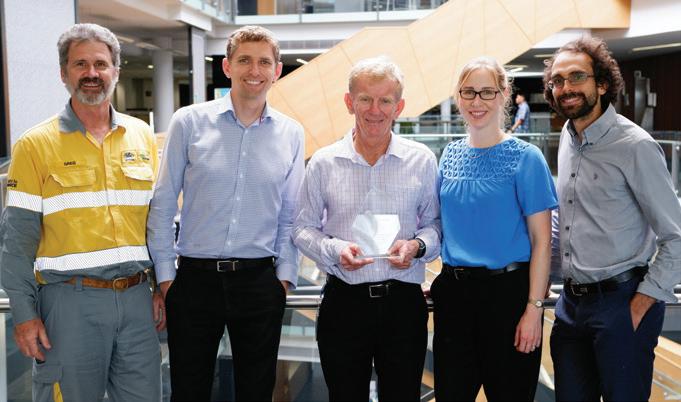
EQL TEAM MEMBERS (L – R) GREG MARTIN (RENEWABLE ENERGY & DEMAND MANAGEMENT CONSULTANT), TIM LEWSEY (MANAGER INTELLIGENT GRID ENABLEMENT) EGM ENGINEERING PETER PRICE, TERESE MILFORD (SENIOR FUTURE TECHNOLOGY DEVELOPMENT ENGINEER) AND PETER KILBY (SENIOR GRID TRANSFORMATION ENGINEER).
Energex and Ergon Energy Senior Technology Development Engineer, Terese Milford, said the power flowing through the grid changes every minute of every day depending on how much energy people are using or generating.
“We’re aiming to offer customers a dynamic connection that will support greater installation of renewables, batteries and electric vehicles for customers wanting them without putting excessive pressure on the network,” Ms Milford said.
“Customers can choose their own individualised experience. At times, customers will export surplus power to the grid. At other times, customers will benefit from using the power they generate within their home or business to charge an electric vehicle or run the washing machine. This will become set and forget based on a customer’s energy preferences.
“It’s a paradigm shift from the existing approach of fixed export limits, unlocking network capacity where and when it’s available.”
DYNAMIC CONNECTION AGREEMENTS
Ergon and Energex have been working towards this objective for some time. In December 2020, a consultation paper was released
UTILITY • FEBRUARY 2022 WWW.UTILITYMAGAZINE.COM.AU 66
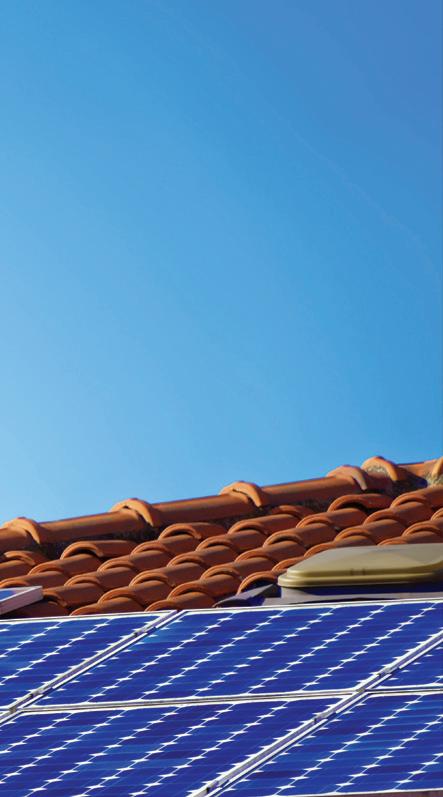
titled Enabling Dynamic Customer Connections for DER, to engage with industry on the concept of dynamic connection agreements and the corresponding interoperability requirements for small scale DER to ensure inverter manufacturers and installers design systems with compatible communication standards.
“A case study was simultaneously developed by directly engaging with recently connected customers with zero export agreements, to help us understand any constraining circumstances and limitations to offering them a future dynamic connection agreement,” Ms Milford said.
“We confirmed that without state estimation, DOEs would largely need to be conservatively based on zone substation telemetry, given the relatively low penetration of downstream monitoring.”
The innovative solution provides network visibility by cost-effectively avoiding extensive physical monitoring, an important advance on previous system demonstrations that required actively monitored distribution transformers. It also delivers the means to manage DER via DOEs with the flexibility to execute various optimisation strategies.
Energy Queensland’s production-ready system performs a comprehensive near real-time assessment of the local network via state estimation, evaluating network voltages and available capacity, and computes an optimal operating envelope for each customer connection point which is published securely via the internet. Customers' systems receive the signal and then choose how their site responds to ensure operation within the envelope.
GridQube’s capacity constrained optimisation (CCO) technology allows the transition from a basic rules-based DOE to a more advanced approach, translating the gap between current network state and network technical limits to the amount of additional export/import the network can accommodate.
Additional capacity can be allocated to customers as a DOE with no further coordination required between parties. Networks can avoid sub-optimal augmentation as power quality and capacity issues can be successfully managed, despite an ever-increasing output from distributed renewables.
“This has enormous potential to improve the affordability, reliability and sustainability of the energy system,” Ms Milford said.
ENABLING TWO-WAY ENERGY FLOWS
The technology is currently being trialled across a small number of sites in south-east Queensland with a goal of making it available for customers with larger or more complex systems in late 2022.
Ergon Energy Network and Energex recently published a follow-up consultation, Enabling Dynamic Customer Connections for Distributed Energy Resources, on their Talking Energy webpage. This engagement will support the forthcoming dynamic standards for small inverter energy systems and low voltage embedded generation. Standards are critical to ensure the customer-side installations can correctly connect to, and interface with, the distribution network and benefit from a dynamic connection approach.
“Our work is currently focused on using these advanced analytics tools as a more reliable, scalable, equitable and economical means to increase network-connected DER,” Ms Milford said.
“However, there is immense scope for networks to employ these analytical capabilities to improve and automate other parts of their businesses to reduce costs.
“We’re able to run scenario analyses to quantify additional DER hosting capacity opportunities associated with network augmentations.
“We can also use detailed historical asset performance data for asset lifecycle modelling, automate planning processes and support targeted demand management programs.
“Reducing network costs benefits all customers and that’s a really important part of what Energy Queensland is striving for – to enable two-way energy flows on the network and energise Queensland communities with safe, reliable and affordable electricity.”
IMPROVED OUTCOMES FOR ENERGY NETWORK CUSTOMERS INCLUDE:
• Potential for additional revenue from solar exports and connection of larger systems
• Reduced network expenditure required to manage DER impacts
• Efficient network augmentation gained by understanding binding network constraints and quantifying benefits of standard mitigation actions through simulations
• Increased network utilisation and renewable generation connected
• Improved power quality – managing solar to mitigate high voltages
• Improved equity – network capacity shared so end-of-line customers don’t bear as much potential curtailment from inverter response modes
• Displacement of higher cost fossil fuel generation by renewables
UTILITY • FEBRUARY 2022 WWW.UTILITYMAGAZINE.COM.AU 67
DISTRIBUTED GENERATION
well underway in regional WA JOURNEY TO NET ZERO
Before Australia officially committed to a target of net-zero carbon emissions by 2050, and a world away from the COP26 conference in Scotland, the real work of reducing Australia’s greenhouse gas emissions was already well underway.
Four years ago, State Government-owned energy utility Horizon Power commenced a series of Distributed Energy Resource (DER) trials in the coastal GascoyneMidwest town of Carnarvon, approximately 890km north of Perth, Western Australia.
Working with Reposit Power as its technology supplier and a team of researchers from Murdoch University, the regional and remote power provider is leading the way into a renewable energy future for remote microgrids with the learnings from its Carnarvon DER trials.
Horizon Power faces both unique challenges and opportunities due to its 38 regional and remote microgrids in some of the most remote communities of Australia, and the inherent high cost of supplying electricity to these customers.
“Like all utilities, we’re grappling with the challenge of accommodating more and more customer rooftop photovoltaic solar,” Horizon Power’s Future Technology and Innovation Manager, David Edwards, said.
“This is both a technical and a business problem. As rooftop solar uptake changes the way our network operates, how do we adjust our business model to suit that?”
TRIAL HELPING TO ANALYSE RENEWABLES IMPACT ON THE NETWORK
The Carnarvon trial was designed to resolve the technical, operational, and transitional barriers to a high penetration, distributed energy future, and build Horizon Power's expertise in distributed energy management.
It demonstrated the extent to which Horizon Power could disconnect parts of the network for considerable periods of time,
allowing some customers to be supplied solely from renewable energy.
“We needed to understand how to manage the variability of renewable energy and its impact on the network, to ultimately increase renewable energy penetration across all of our remote networks,” Mr Edwards said.
“Firstly, we gathered data to understand what was happening on the Carnarvon network, particularly in relation to customer solar systems, to quantify it in real-time. Secondly, we needed to analyse that data.”
The trial recruited 116 Horizon Power customers in Carnarvon who already owned rooftop solar PV systems, with smart monitoring devices installed at each property to monitor the participants' energy consumption.
Primarily, the task was to determine, at any given time of day, the amount of energy each customer rooftop solar system generated and consumed, as well as the amount of grid energy being drawn from the Carnarvon network by each participant.
“We were gathering this data every five seconds, so we built a very detailed picture of exactly what was going on with those solar systems. We could see how cloud cover and the changes in sunlight were causing them to operate differently,” Mr Edwards said.
“If the solar PV system was meeting a load at the home and suddenly the sun went behind a cloud, that manifested as a rapid transference of load over to the grid. We needed to understand how that was changing the network dynamics.

GENERATION 68
DISTRIBUTED
“The risk of inverters tripping under these circumstances can be disruptive to the network, requiring more capacity at the centralised power station and reducing the customer solar that can be accommodated on the microgrid.”
POTENTIAL TO TAKE ENTIRE TOWNS TO 100 PER CENT RENEWABLE ENERGY
During the trial, Horizon Power created an embedded microgrid within its main Carnarvon network. Switchgear, a BESS/grid-forming inverter and a microgrid controller, enabled the utility to switch the Gibson Street feeder away from the rest of the Carnarvon network during the middle of the day; when there was sufficient solar energy to power everyone on that feeder.
The result was that the solar power from 24 customers supplied 36 homes on the same feeder.
The significance of the Carnarvon trial is that the data analysis, and the technical conclusions, can be applied to all the systems in Horizon Power’s portfolio of microgrids, and provide valuable insights for other network operators around the country.
“We wanted to understand what happens when you take a legacy network infrastructure to inverter-only-based generation. We needed to look carefully at things like frequency and voltage management, and how we use the battery control processes to maintain stability and power quality,” Mr Edwards said.
Crucially, the Carnarvon trial demonstrated that it is possible to take an entire town to 100 per cent renewable energy. It is also demonstrating the
important role of customer rooftop solar as customers move away from being just a prosumer of energy to an active participant in the supply of energy to their community.
More broadly, the Western Australian Government energy utilities have released a joint commitment to address climate change in support of the government’s commitment to reach net zero greenhouse gas emissions by 2050.
Each utility is playing a pivotal role towards a low carbon economy for the Western Australian community by trialling and implementing renewable energy solutions.
“Here in Western Australia, we have an important role to play in decarbonisation, not only in terms of our own environments, but also in trialling new, clean energy technologies for a wider industry benefit,” Horizon Power CEO, Stephanie Unwin, said.
“We are using advanced distributed energy technology to orchestrate customer rooftop solar with a centralised solution that combines solar energy, battery storage and back-up gas generation. Our regional presence and proud history of delivering energy solutions for regional communities is enabling us to lead the way towards net zero carbon emissions by 2050 or sooner.

“We have the solutions to achieve zero net carbon energy generation and distribution and we are at the cutting edge of deploying this technology across regional Western Australia.”
The trials were recently shortlisted for the 2021 Industry Innovation award, conducted by peak industry association for power networks, Energy Networks Association.
DISTRIBUTED GENERATION 69
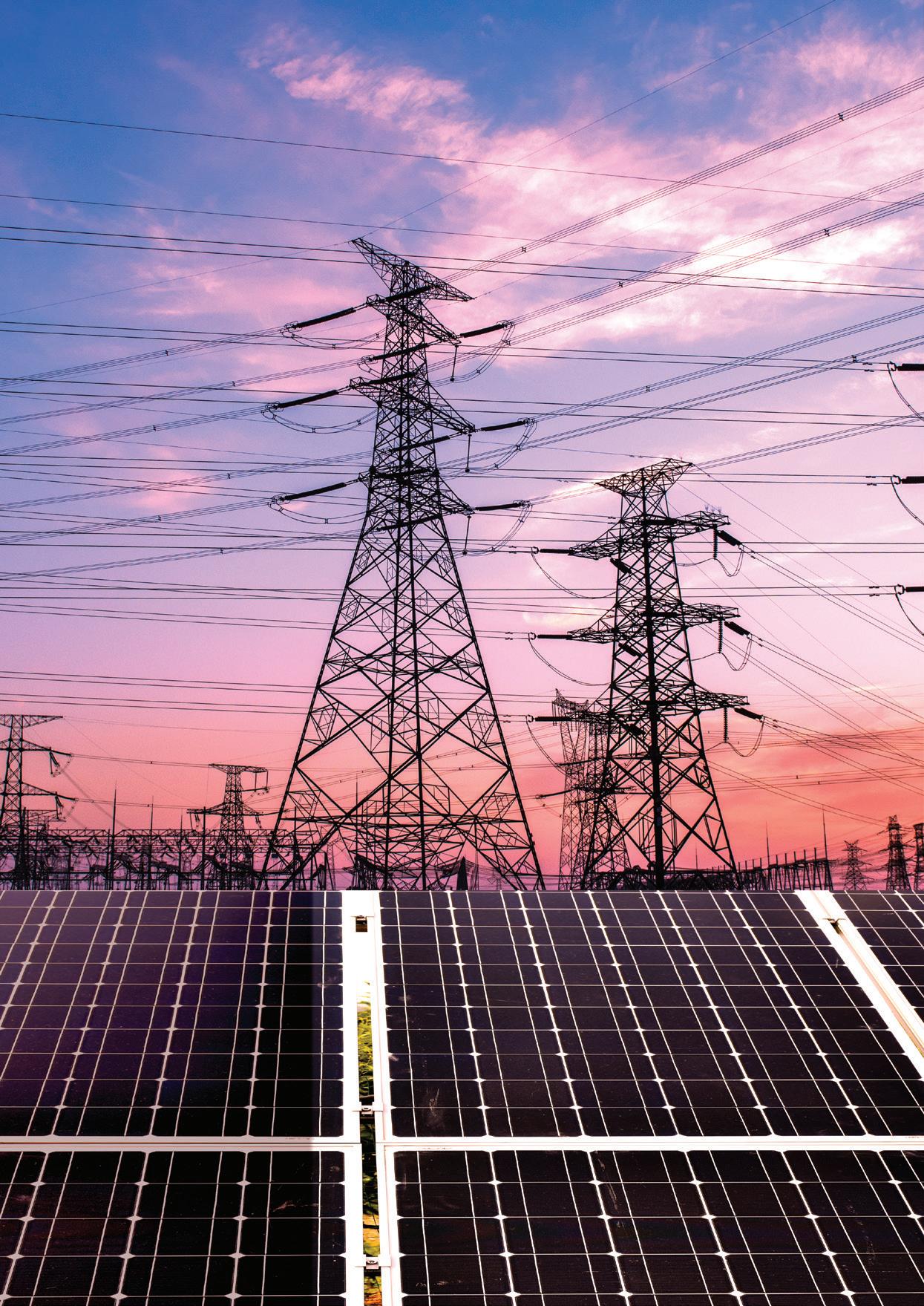
MAPPING THE FUTURE OF DISTRIBUTED ENERGY
RESOURCES
by Lauren DeLorenzo, Journalist, Utility magazine
DISTRIBUTED GENERATION
70

With Australia’s renewable energy transformation well underway, investment in Distributed Energy Resources (DER) projects is on the rise. Here, Utility maps out some of the country’s most significant DER initiatives to date.
DER refers to renewable energy systems that typically generate energy at houses or businesses, and can provide energy back to the grid when needed.
Rooftop solar PV units, battery storage, thermal energy storage, electric vehicles, smart meters and smart household technology, such as hot water systems or smart appliances, are all examples of DER.
With demand for DER expected to grow, it is estimated by Energy Networks Australia’s Electricity Network Transformation Roadmap that DER could contribute up to 45 per cent of Australia’s power by 2050.
DER offers many advantages including reduced network costs, which could also lead to a fall in the overall cost of energy. Reduced costs can extend to customers who use DER, as they can sell surplus energy back to the grid, which is especially needed during peak periods.
This can increase the overall reliability of the grid, especially when used to supplement regions that have a high reliance on intermittent energy sources such as wind and solar.
The challenge is navigating the technical issues that arise when integrating DER into the grid, with companies and government departments looking at how to do this at scale. In many cases, this means grid modernisations are needed to ensure that DER are safely implemented into the network.
As investments in DER research, feasibility studies and projects multiply year on year, we take a look at how each state is advancing their own DER plans with the major projects in development.
VICTORIA
Project Edge Trial
Project EDGE (Energy Demand and Generation Exchange) is Victoria’s three-year trial that aims to demonstrate a proof-ofconcept DER, which could provide both local and wholesale network services.
The $28 million project is a collaboration between the Australian Energy Market Operator (AEMO), AusNet Services and Mondo, and will see the creation of a prototype model for DER to contribute energy to the National Electricity Market (NEM).
Residential, industrial and commercial customers from the Hume region of North East Victoria are involved. Initially, the project will involve around 50 residential customers, but will scale up to 1,000 customers.
Participating residents will have access to battery subsidies of $1,000, with a participating payment of $1,000 per annum and a free UBI energy management system.
71 WWW.UTILITYMAGAZINE.COM.AU DISTRIBUTED GENERATION
DISTRIBUTED GENERATION
Businesses involved in the project will be offered a solar PV system power purchase agreement with no upfront capital and the first three months of energy free. They can also access a $6,000 per 50kWh system battery subsidy and will be provided a free UBI energy management system.
With research guidance from Deakin University and Melbourne University, the project will demonstrate how a group of small battery solar systems can result in better responses from the electricity network, reducing outages and lowering energy prices.
The project aims to demonstrate a marketplace where customer-owned DER are integrated into the electricity distribution network, improving understanding of the future roles of distribution system operator functions, and gaining insight into the overall costs and benefits of different DER marketplace models to inform future planning.
Indra Monash Smart City
Victoria’s Indra Monash Smart City project aims to integrate DER technologies into the embedded network at Monash University’s Clayton campus. Indra will use its innovative platform to monitor the grid-connected assets in real time, including a minimum of 1MW of solar panels, 20 buildings, electric vehicle charging stations and 1MWh of energy storage.
WESTERN AUSTRALIA
Project Symphony
Western Australia’s $35.5 million Project Symphony will see the development of a DER within the South West Interconnected System in Perth.
Western Power has partnered with Synergy and AEMO to deliver the pilot, which will take place over two years and see 500 customers with over 900 individual DER assets connected to a virtual power plant.
The project aims to effectively coordinate and manage DER assets such as rooftop solar, major appliances and battery storage with energy distribution software systems. Ultimately, the project is set to identify the further investment needed to expand DER in Western Australia, and inform the state’s DER Roadmap
Onslow DER Project
The Onslow DER project, delivered by Horizon Power, is a microgrid which services the town with a mix of energy sources, including renewables, modular gas-powered generation and battery storage.
Stage 1 saw the construction of a new transmission line and gas-fired modular power station. Stage 2 involved building a solar farm and a battery energy storage system (BESS).
Horizon partnered with PXiSE Energy Solutions to provide software for a Distributed Energy Resources Management System, which is expected to address reliability and operational issues facing the DER.
Alkimos Beach solar and storage trial
Combining battery storage and rooftop solar, the $6 million Solar and Storage Trial at Alkimos Beach Residential Development project involves the implementation of a fully contained lithium ion energy storage system and the testing of new electricity retail products.
This new energy retail model aims to show how enabling technologies with high levels of solar photovoltaics (PV) can be integrated.
SOUTH AUSTRALIA
South Australia’s strategy to grow the presence of DER in the state focuses on extending and transforming its existing network, particularly capitalising on the extensive use of rooftop solar already in place.
The strategy also focuses on transitioning from fixed export limits for DER customers to flexible connections enabled by smart inverters, with the goal of offering a flexible connection option as a standard for all new solar customers from 2022.
AGL Virtual Power Plant
Solar battery storage systems across 1,000 households and businesses in Adelaide will be connected and managed by a cloud-based control system at AGL’s Virtual Power Plant (VPP) – the largest in the country.
The $19.52 million connected system allows the batteries to operate together as a 5MW solar power plant, and takes advantage of South Australia’s extensive uptake of rooftop solar.
AGL has since announced an extension of its Virtual Power Plant, launching installations for residents in Queensland, New South Wales and Victoria.
Customers from these states will be able to buy Tesla batteries or LG Chem batteries with Solar Edge hardware at discounted prices as part of the VPP program.
In return for allowing AGL to access the batteries during off-peak times to improve network reliability, customers will receive payments from AGL.
NEW SOUTH WALES
Enerverter Project Aztec
Developed by Restech, the Enerverter Project Aztec is a small power inverter which controls multiple power sources, such as battery power and solar PV simultaneously. The power is used to operate industrial-sized motors.
The project involved developing a prototype, testing real-world water and wastewater applications, and then commercialising the product.
The multi-input, multi-output inverter uses energy storage to power water pumping and treatment, and can be used to balance out the energy demands of the application.
UTILITY • FEBRUARY 2022 WWW.UTILITYMAGAZINE.COM.AU 72
Project MATCH Study
This $2.19 million study, led by the University of New South Wales in partnership with AEMO and Solar Analytics, aims to understand how DER reacts to energy system disturbances.
Project MATCH (Monitoring and Analysis Toolbox for Compliance in a High DER future) will inform future practices and what measures should be put in place to ensure a reliable system with high levels of DER.
The study aims to develop new data analysis tools and techniques which can be used to help the AEMO manage DER implementation, such as making changes to contingency Frequency Ancillary Control Services (FCAS) or constraints.
QUEENSLAND
evolve DER
The evolve DER project focuses on the software systems that are integrated with operational technologies used to manage distribution networks. Led by Zeppelin Bend in collaboration with industry bodies and government, the project aims to increase the network hosting capacity of DER while staying within the capacity of those networks.
The intended result of the study is to develop scalable capabilities and systems to better orchestrate uptake of DER in networks.
WESTERN AUSTRALIA
Project Symphony
Onslow DER Project
Alkimos Beach solar and storage trial
SOUTH AUSTRALIA
AGL Virtual Power Plant
TASMANIA
Optimal DER Scheduling for Frequency Stability study
TASMANIA
Optimal DER Scheduling for Frequency Stability study
This study, conducted by The Australian National University (ANU) in partnership with TasWorks, Powerlink Queensland and Tenische Universitat Berlin, will investigate how to best schedule DER to provide low-cost stability services while not exceeding network capacity.
The investigation involves the development and testing of software to orchestrate fleets of DER in distribution networks and allow them to provide frequency control ancillary services.
AUSTRALIAN CAPITAL TERRITORY
DER Integration and Automation Project
This now-completed project illustrated how Distributed Energy Resources Management Systems (DERMS) and the GreenSync Decentralised Energy Exchange (deX) could optimise DER assets and network hosting capacity.
Using Evoenergy’s Advanced Distribution Management System (ADMS) and Schneider Electric’s DERMS, the project was able to demonstrate network models of current and future scenarios, before applying it to simulated fleets of DERs within deX to demonstrate additional network hosting capacity.
QUEENSLAND
evolve DER
NEW SOUTH WALES
Enerverter Project Aztec
Project MATCH Study
AUSTRALIAN CAPITAL TERRITORY
DER Integration and Automation Project
VICTORIA
Project Edge Trial
Indra Monash Smart City
DISTRIBUTED GENERATION
UTILITY • FEBRUARY 2022 WWW.UTILITYMAGAZINE.COM.AU 73

SATELLITES PROVIDING UNPARALLELED ACCURACY IN DAM SURVEILLANCE
by Annabelle Powell, Journalist, Utility magazine
Dams play a critical role in securing our water supply, so it’s vital that issues such as seepage – which threaten their integrity – are detected as early as possible. Here, Utility explores how Hunter Water has employed innovative satellite technology to increase the accuracy of its dam monitoring.
Hunter Water has implemented cutting-edge satellite technology to monitor Grahamstown Dam and Chichester Dam, its two biggest assets.
The state-of-the-art safety upgrade has engaged Australian company Detection Services, in partnership with United Kingdom-based analytics experts Rezatec.
The three-year programs at the two dams will use Rezatec’s Geospatial Artificial Intelligence (AI), increasing the frequency and accuracy of monitoring, while also reducing inspection costs and risks to employees and contractors.
GEOSPATIAL SATELLITE AI TECHNOLOGY
Hunter Water’s journey into using geospatial satellite AI technology began when it was looking at ways to implement a movement monitoring system at Grahamstown Dam.
Grahamstown faced unique challenges, with 5km of embankment and a public road along its crest with an 80km per hour speed limit.
These factors meant that setting up a traditional survey network on the dam would be difficult and even then, would only monitor select points.
Hunter Water began working on technology that would provide greater coverage of the dam itself and produce frequent, accurate information. This led it to investigate satellite monitoring.
Satellite-based technology measures interference patterns with radio signals that are emitted from a satellite. Every time the satellite passes over the top of the dam, it measures the difference in the reflected pattern and can translate it into a movement.
Hunter Water Dam Safety Engineer, Daniel Turnbull, said using this advanced technology was a gamechanger for the utility on several levels.
74
MAPPING, GIS & SURVEYING

“We receive high-quality data showing any changes on a very fine scale, which gives us increased confidence in our dams’ integrity and allows us to proactively manage the assets,” Mr Turnbull said.
“Satellite monitoring minimises the fieldwork required, reducing the exposure of our people to potential hazards.”
UNPARALLELED ACCURACY
Mr Turnbull said Hunter Water had trialled other technologies such as drones but the accuracy that they were able to achieve was only in the 20 to 30 millimeter range.
“The accuracy quoted by the satellite monitoring is in the one to two millimetre range,” Mr Turnbull said.
“For dams, being able to detect movement of one to two millimetres is hugely significant.”
The dam monitoring solution features an online portal offering a dashboard view, while detailed reports provide early information and analysis of any potentially irregular ground movement and vegetation growth.
Mr Turnbull said the technology has so far not detected any issues, which is a good sign for the dams.
“We like to see that there's very little movement and we're not seeing any abnormal readings,” Mr Turnbull said.
“Because there's so much data that we receive, we find that we may get some anomalies that show up and we can send our site staff out to inspect in more detail to see if it is an issue.
“But every time that has occurred, the subsequent batch of data provided by the satellite monitoring has revealed
that it was an anomaly and not an actual issue at the dam.”
A BASELINE FOR COMPARISON
Mr Turnbull said as the baseline project for Grahamstown Dam was done in the middle of a drought, the ground and embankments were at their driest in at least a decade.
“We've gone from one of the driest periods that we've had in a long time, now into one of the wetter periods,” Mr Turnbull said.
“Having covered that range, it sets a really good baseline and thresholds for us, so we can see if the moisture's going above or below those and provides us with a really good comparison.”
FUTURE APPLICATIONS OF SATELLITE TECHNOLOGY
Rezatec first began monitoring Grahamstown Dam on a trial basis in 2021, and with the pilot deemed a success, Chichester Dam joined the program.
Over time, Hunter Water will look to apply Geospatial AI technology to other areas across its network.
“We've basically got both of our water supply dams covered at the moment, but the satellite monitoring also has applications along the lines of checking for leakage on pipelines,” Mr Turnbull said.
“So we've been thinking about whether we could use that along some of our major trunk water mains that run through isolated locations where we don't have a lot of people out there to inspect.
“It might provide early warning that we are getting some leakage in those areas. And the other facet that we're starting to look at is whether it can be utilized to monitor for algal blooms on our dam storages as well.”
Mr Turnbull said the biggest benefit of the project is the peace of mind made possible by the increased coverage of the dams and frequency of information.
“The regulations for dam safety require us to, depending on the dam, either undertake an annual or a two yearly survey of the dam, whereas using the satellite monitoring, we're getting monthly updates of the data,” Mr Turnbull said.
“Every month, the satellite makes a couple of cycles overhead. So the satellites are passing over roughly every 12 or 13 days.
“To get that volume of information, we know that we're checking our dam more frequently and we're likely to detect any emerging issues faster.”
Mr Turnbull said the project is in a great position as the data being produced is as expected.
“It’s boring data if you are looking for changes, but really reassuring for a dam owner,” Mr Turnbull said.

MAPPING, GIS & SURVEYING
GRAHAMSTOWN DAM SATELLITE IMAGE
75
CHICHESTER DAM
CADASTRE MODERNISATION ENERGISES GIS
Digital cadastre modernisation programs are well underway in most jurisdictions across Australia. These will significantly improve the accuracy and reliability of the register of real property that underpins our economy.
Greater accuracy of land parcel boundaries will allow much closer alignment with GPS, high-resolution imagery, LiDAR, and other high-precision data collection methods.
This new alignment will underpin initiatives such as digital transformation, digital twins, asset tracking, and improved safety in the field.
Improved data quality has been shown to be a major contributor to improved safety outcomes in the field and to increased efficiency in network control, network design, and storm and emergency management.
WHERE IS THE HYPERSPACE BUTTON?
Moving your data to this new higher accuracy spatial nirvana is straightforward with the right tools.
Network and asset information collected over many years needs to be spatially adjusted to align with the new land-base/cadastral boundaries. This spatial adjustment is known as conflation. A successful conflation project needs to be robust, mathematically rigorous, highly scalable, have a systematic process and workflow with dashboard monitoring, and perhaps most importantly, have minimal impact on business as usual.

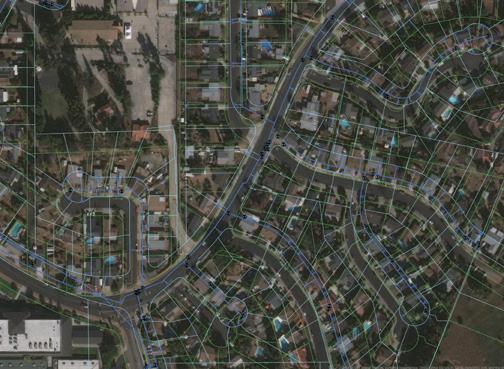
ENTERPRISE-GRADE CONFLATION
1. Get it right the first time – Data is a valuable asset built up over many years. Any conflation tool must have rigorous quality assurance as well as the ability to roll back.
2. On time processing – The conflation project needs to be done in an acceptable time frame. Automation should be an integral part of the solution.
3. Capability – Conflating that data should be done by specialists who know what they are doing and who will deliver a quality result. Rubber-sheeting software or manual tools should be avoided since they represent the risk of degrading rather than improving data quality.
BEWARE OF THE TRAPS
Some believe that, once they have the new cadastre data sets, they can make the necessary adjustments manually using rubber sheeting, where you bend your current network map to a new location by using a conforming shift to make adjustments. The challenge is that rubber sheeting can be wildly inaccurate, while manual processes take way too long and are far too arbitrary.
BEST PRACTICE SOLUTION
Accurate conflation must be based on a rigorous mathematical model supported by a high-performance adjustment engine. There must be the ability to apply constraints to maintain straight lines, angles, and exclude outliers.
There must be allowances for business rules. Which objects or features should be adjusted? Are there any that have been placed using GPS coordinates?
Topology must be preserved and connectivity is critical in utilities and telecommunications networks. There must be the ability to recursively apply the adjustments to all alternatives/versions within the geospatial database.
Want to find out more? Contact we-do-IT on (03) 9098 8617 or email info@we-do-it.com to speak with a conflation expert.
ABOUT WE-DO-IT®
For more than 25 years, we-do-IT has been providing right-shoring solutions for utilities, telecommunications, and the defence sector. we-do-IT already has conflated large portions of cadastre maps in Australia, New Zealand, Germany, the United States, and other countries, routinely working with leading global utilities to provide low-cost, high-quality geospatial conflation data.
UTILITY • FEBRUARY 2022 WWW.UTILITYMAGAZINE.COM.AU 76 MAPPING, GIS & SURVEYING | Sponsored editorial
EXAMPLE OF CONFLATED LAND BASE AND SHIFT MODEL.

WE DO SPATIAL I.T. SOLUTIONS. WE DO CONFLATION SOLUTIONS.

CELEBRATING OVER 25 YEARS IN THE GIS SECTOR

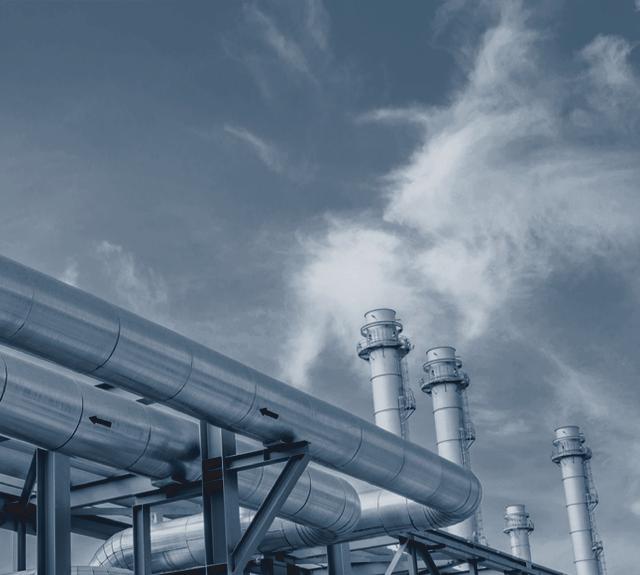
we-do-IT are a leading technology partner in spatial systems and data enablement. We help utilities harness the power of location intelligence.
MELBOURNE • BRISBANE • AUCKLAND • DENVER • LONDON • HAMBURG • HYDERABAD • SINGAPORE CONTACT US NOW TO DISCUSS YOUR NEXT GIS PROJECT. +61 3 9098 8617 INFO@WE-DO-IT.COM WE DO GIS CONSULTING. WE DO GIS DATA ENGINEERING.

MANAGING UTILITIES WITH AERIAL IMAGERY
Large-scale utility site and asset monitoring is a challenge faced across the water, electricity, waste, natural gas, and renewable energy sectors.
The size, complexity, and nuances of utility infrastructure necessitate a multi-data approach to site and infrastructure management. MetroMap’s high-resolution aerial imagery subscription service can solve problems associated with data scale, accuracy, and frequency for utilities.
BALANCING SCALE AND QUALITY OF DATA
Aerial imagery balances both scale and quality of data, ideal for the ongoing needs of utility assets and site monitoring.
MetroMap’s capture program focuses on habited areas, covering over 8.5 million dwellings and all the associated utility infrastructure that services those locations. Major cities and urban growth centres have a minimum of 2–4 aerial captures per annum, with annual captures of many regional towns.
Every MetroMap image capture is available to all account types through a simple layer switching system, giving users years of data to monitor changes over time. That data regularity ensures up-to-date imagery.
Aerial imagery can act as your ‘eye in the sky’ to look within your site or infrastructure location and well beyond. Utility infrastructure impacts and gets impacted by the natural and built environment outside its occupied location. The millions of square kilometres covered by MetroMap imagery ensures high-quality data on the surrounding areas for utility companies. MetroMap image quality also lets you monitor everything visible from above, for example; road surface condition, tree and vegetation growth or overhangs, and how nearby infrastructure changes might affect utility operations.
REMOTE INSPECTION AND MEASUREMENT
Aerial imagery lets site managers inspect assets, monitor the environment, and make accurate measurements without leaving their workstations.
Users can quickly and accurately measure distances, areas, perimeters – all inside the native MetroMap web application. MetroMap’s geospatial accuracy supports measurement through a set of line and polygon tools. The resolution range of MetroMap imagery is between 5–10cm per pixel, and the spatial accuracy is within 2–3 pixels of real-world location, so users can be confident when measuring larger assets with the native tools.
Aerial imagery is the most convenient and accessible source of horizontal measurement at scale. Terrestrial scanners or drone surveys give superior fidelity at close to ground level but lack the convenience and scale of the regularly-captured aerial imagery found on MetroMap. Ideally, all those data sources augment each other and provide a robust set of spatial information.
DATA ACCESS OPTIONS
MetroMap’s easy-to-use web application gives all users and plan types equal access to the full imagery and measuring tool set. Pro, Team, and Enterprise users have access to georeferenced and highest quality image downloads for the most demanding use cases, with the option to add property & building insights through feature layer add-ons.
MetroMap’s API-based access is a popular choice for larger spatial teams, enterprise clients, and more advanced users who want to add imagery into their own data management systems. MetroMap powers multiple large corporate enterprises across the public and private sector, who trust MetroMap’s spatial data to be one of their information streams.
To learn more, start a free trial, or contact the MetroMap team, go to: www.metromap.com.au
UTILITY • FEBRUARY 2022 WWW.UTILITYMAGAZINE.COM.AU 78 MAPPING, GIS & SURVEYING | Sponsored editorial
LEARN MORE
Scan to access free trial

MONITOR UTILITY ASSETS FROM THE COMFORT OF YOUR DESK
• Manage your infrastructure reliably with frequent captures
• Respond efficiently to maintenance requests
• Monitor vegetation around critical assets
• Measure confidently with high spatial accuracy
• Flexible access via web-application or your own GIS
• Overlay rich cadastre and building insights
metromap.com.au

THE IMPORTANCE OF SEWER REHABILITATION
by Christopher Allan, Journalist, Utility Magazine
Sewer rehabilitation – the repair or renewal of an existing sewerage asset –has both short and long-term advantages for sound management of Australia’s wastewater networks. As asset operators continue to leverage the many benefits of sewer rehabilitation, here we consider some of the different projects occurring around the country, revealing how each project draws on a unique technical approach.
UTILITY • FEBRUARY 2022 WWW.UTILITYMAGAZINE.COM.AU 80
SEWER REHABILITION
Trenchless rehabilitation solutions, such as the relining of aging municipal sewer networks, can dramatically extend the life expectancy of these critical assets, all with minimal above-ground disruptions and service outages during the works period.
Instead of constructing new sewerage assets from scratch, revitalising our current sewer infrastructure can keep project costs down while also meeting sustainability objectives.
Much of Australia’s sewerage infrastructure is deteriorating or nearing end of service life, due to factors like age, historical material selection, and newer demands of urban growth.
The traditional excavation approach to sewer pipe repairs is often burdensome on municipal budgets, causing surface disruptions like traffic delays.
Yet without regular monitoring and maintenance, a sewerage system left to deteriorate can become expensive to rescue and introduce new risks like flooding and building damage.
Thankfully, new trenchless sewer rehabilitation practices are unlocking longer lifespans for critical sewerage assets around the country.
Whether it’s through the unwinding of a new sewer section built from the latest and most durable plastic, or overseeing refurbishments at manholes and pump stations, water asset operators and government strategists alike are backing sewer rehabilitation to lock-in asset lifespans and reduce risk across the greater network.
SEWER REHABILITATION: HOW IT WORKS
The US Water Environment Federation (WEF) describes two classes of techniques in sewer rehabilitation: sewer repair and sewer renewal.
Sewer repair
Sewer repair works are a type of rehabilitation that allows a pipe to realise the end of its useful life.
Sewer repairs, often involving location-specific works that seal the sewer pipe, will restore local structural integrity rather than managing the integrity of the entire pipe segment.
The WEF finds that sewer repair techniques include “internal and external joint repairs, sealing joints and cracks, spray lining or applying a coating, and partial replacement”.
Sewer renewal
In contrast, sewer renewal works may extend the useful life of a sewer, securing the integrity of entire pipe segments between manholes.
Sewer renewal techniques include “a variety of liners, coatings, panel systems and replacing segments of pipe”.
Many sewer renewal techniques, like the relining of an entire sewer pipe segment with a durable plastic material, have been developed to overcome the material-based challenges of aging concrete sewer pipes, not limited to chemical erosion, cracking and infiltration, and root intrusion.
Some of the most common sewer rehabilitation techniques include:
• A range of sewer relining approaches, such as spiral wound-in-place and cured-in-place lining, which unlock years of new sewer life between two access points
• Sprays and coatings that protect existing asset surfaces from damage and corrosion
• Localised treatments, such as grouting, that target potential hotspots of pipe degradation and infiltration and can often be delivered remotely using CCTV technology
WHY SEWER REHABILITATION?
Given that many sewer rehabilitation techniques, such as relining a section of sewer pipe or undergoing targeted grouting repairs, can be entirely trenchless, water asset operators can minimise almost all above-ground works and service interruptions, saving money and making urban revitalisation projects far more achievable.
Emerging technologies, such as the use of CCTV footage, and new knowledge about the best-practice lining and coating solutions, continues to make trenchless rehabilitation more appealing and affordable.
The benefits of sewer rehabilitation can also extend to positive outcomes for downstream wastewater applications, as asset operators continue to adopt principles of sustainability into Australia’s wastewater.
While sewer rehabilitation remains the smarter choice over sewer replacement in most circumstances, water asset operators and governments will need to complement rehabilitation with new sewer infrastructure, to meet the evolving demands of urban growth.
Indeed, Victorian Government-owned retail water business, Greater Western Water, recently completed works on the new West Werribee Pump Station, a $12 million project that directly responds to service requirements of a key growth corridor in the state.
SEWER REHABILITATION PROJECTS
Here, we consider a selection of recent sewer rehabilitation projects from around the country that put modern relining and asset refurbishment techniques into practice.
The capital city sewer strategy of Melbourne Water Melbourne Water coordinates services of Melbourne’s 400km network of pipes and tunnels, and has recently invested $100 million across a four-year sewer rehabilitation program for Victoria’s capital.
The sewer relining and manhole rehabilitation program promised to add a minimum of 50 years of life back to critical assets across Melbourne, a city with some sewerage assets that already date back 120 years.
Between 2018 and 2021, Melbourne Water’s program has delivered upgrades to 15km of aging pipes across the following eight projects:
• Pascoe Vale sewer
• Maribyrnong River Main sewer
• North Yarra Deviation sewer (Stony Creek Backwash sewer)
• Brighton Main sewer
• Hawthorn Main sewer
• Kew Pumping Station sewer
• Sandringham sewer
• Western Trunk sewer
UTILITY • FEBRUARY 2022 WWW.UTILITYMAGAZINE.COM.AU 81
SEWER REHABILITION

Five of the projects adopted a spiral wound-in-place sewer relining technique, while two went for cured-in-place relining.
In spiral wound-in-place relining, a specialised machine is dropped down a manhole to work on a given segment of the target sewer line, which could be over 100 years old.
The machine unwinds a new PVC liner through the sewer line, expanding the new plastic pipe to the walls of the old sewer, which might be made from concrete or even brick.
Once the machine has finished lining the new sewer pipe, grout is often used to fill in any gaps.
The Maribyrnong River Main sewer upgrade, completed ahead of schedule in 2020, used spiral wound-in-place relining to replace a 7.2km stretch of sewer.
Melbourne’s sewerage system is currently valued at over $10 billion, and to steer these critical assets through emerging challenges over the next fifty years, Melbourne Water also delivered its comprehensive Melbourne Sewerage Strategy in 2018.
Future sewer rehabilitation works undertaken by Melbourne Water will include the Epsom Road Main Sewer Renewal project in Kensington, commencing in early 2022, which utilises the cured-in-place lining technique to rehabilitate 1.6km of the sewer.
LOCAL GOVERNMENT RESPONSES: FRASER COAST (QUEENSLAND) AND MOUNT BARKER (SOUTH AUSTRALIA)
Critical sewer infrastructure is also monitored and rehabilitated through countless local council initiatives around the country.
Fraser Coast Regional Council
Queensland’s Fraser Coast Regional Council recently announced a $4.25 million investment in sewer relining of a formidable 14.2km of sewers.
With works scheduled for completion by December 2021, the project comes as a response to breaks, cracks, and leaks in the Fraser Coast sewerage network, identified via remotely operated cameras.
Councillor David Lee pointed to the advantages of trenchless sewer rehabilitation via manhole relining in terms of avoiding the cost of digging up and replacing faulty sewer pipes.
“The majority of the work in Hervey Bay is being done in areas near the beach to reduce the amount of salt water entering the pipes through cracks and leaking joints,” said Cr Lee.
“This is particularly important as the salt water affects the ability for treated effluent to be used for the irrigation of cane fields, turf farms and hardwood plantations.”
In this way, the benefits of sewer rehabilitation even extend to positive outcomes for wastewater applications.
Mount Barker District Council
In South Australia, the Mount Barker District Council, who manages the wastewater system of Mount Barker and surrounding townships, recently opened tenders in the latest tranche of their ongoing Manhole Restoration Program.
The program seeks to extend the life of critical wastewater assets including manholes and flushing points, assets that often require monitoring and maintenance from local councils to manage any future costs of substantial repair.
Indeed, a statement from the Mount Barker manhole project raised that failure to conduct regular maintenance work could result in manhole collapse, requiring extensive repairs and even excavation on private properties.
Fortunately, a growing range of coating, lining and surface mortar solutions are available to help asset operators manage the susceptibility of concrete sewerage assets to risks like chemical erosion via sulphuric acid attack.
TRENCHLESS SEWER SOLUTIONS NEEDED NOW MORE THAN EVER
In a context of growing federal and state commitments to highly ambitious infrastructure pipelines, emerging technologies will be invaluable to unlock trenchless projects with low-impact construction periods.
The latest techniques of sewer rehabilitation – whether relining an entire section of degrading pipe or even fixing a single crack identified by CCTV footage – will allow the water sector to extend the lifespans of countless critical assets without starting from scratch.
Indeed, with many municipal sewer networks in our major cities being built over 100 years ago, techniques such as wound-in-place or cured-in-place relining will ensure cities avoid expensive crises across sewer networks.
The unwinding of a durable PVC liner within a deteriorating concrete sewer pipe often wins out from a sustainability perspective when compared to digging a new sewer network from scratch, and restoring sewer pipes to optimal condition can even have positive environmental outcomes for sewer water treatment and reuse applications.
UTILITY • FEBRUARY 2022 WWW.UTILITYMAGAZINE.COM.AU 82
SEWER REHABILITION
ART SEWER



WASTEWATER LEVEL MONITORING
Compact, low cost, battery-powered radar sensor and Telemetry all-in-one ATEX/IECEx (Zone 0), NB-IoT, Cat-M1
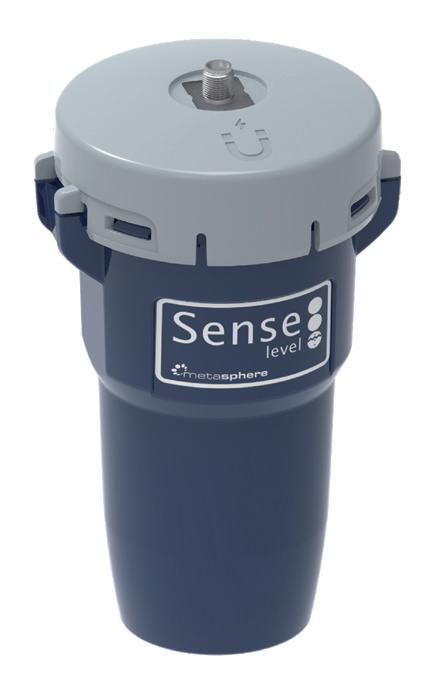
Part of an all-in-one solution that delivers
Full network visibility, performance and forecasting
Also perfect for


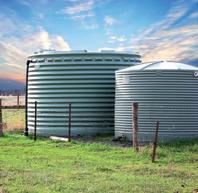

For more information contact info@metasphere.net.au +61 2 9956 7407
RIVER LEVEL STORMWATER LEVEL TANK LEVEL SILO LEVEL
Temporary solution for a wastewater plant
The Dungog Wastewater Treatment Plant (WWTP) in New South Wales’ Hunter Region was commissioned in 1938 – making it over 80 years old – and was acquired by Hunter Water Corporation (Hunter Water) from Dungog Shire Council in 2008. This plant services a township of just over 2,000 residents (just north of Newcastle) and is smack in the middle of dairy and timber country. The existing plant has just completed a $28 million upgrade project to improve water quality, with Polymaster supplying two self-bunded chemical tanks with a dosing system which played a critical role in ensuring wastewater continued to be treated during the build.

The new upgrades will replace the plant's aging infrastructure and provide the town of Dungog and surrounding areas with a modern wastewater treatment plant, allowing for better reuse of effluent and recycled water, and improved water quality for the community. Hunter Water Managing Director, Darren Cleary, said the major upgrade would also help deliver improved environmental outcomes.
CLIENT REQUIREMENT
The project brief was to build a temporary plant off to the side while the client demolished the old plant and built a modern facility without disrupting the treatment plant.
One critical component was the dosing of sodium hydroxide into the wastewater. The build team required a complete solution they could connect and turn on without building unnecessary infrastructure around it, which ultimately would need to be torn down in the new build.
SOLUTION PROVIDED
With any new build, there are complexities that need to be thought through. This particular design team had an added challenge of 'shoe-horning’ a new plant on the same site as the existing plant, which had to remain operational at all times.
Polymaster provided two 30kL selfbunded chemical tanks with a dosing system to help dose sodium hydroxide into the wastewater. A fully integrated dosing system was housed within each cabinet of the 30kL self-bunded tanks. As sodium hydroxide is suitable for Polymaster’s polyethylene tanks, it was a perfect solution.
The designers provided Polymaster with a detailed P&ID for the dosing system to ensure they received a system that ideally suited their application. Polymaster’s self-bunded tanks comply with AS3780 (bund capacity of 110 per cent), so the installation crew did not require the expensive and unnecessary construction of a concrete bund.
Ultimately, the end solution Polymaster provided is a cost-effective and efficient one – saving time and money. In addition, the installers were able to connect the 'turnkey system' with minimal on-site works, enabling the plant to operate continually. Great job to all involved!
The Dungog plant is now complete, and Polymaster is super pleased to have played a little but crucial part in keeping the operation humming along during the build.
The plant is a showpiece of modern technology and innovative design.
SCOPE OF WORK
• Product design
• Product manufacture
• Engineering
• Delivery
84 UTILITY • FEBRUARY 2022 WWW.UTILITYMAGAZINE.COM.AU SEWER REHABILITION | Sponsored editorial

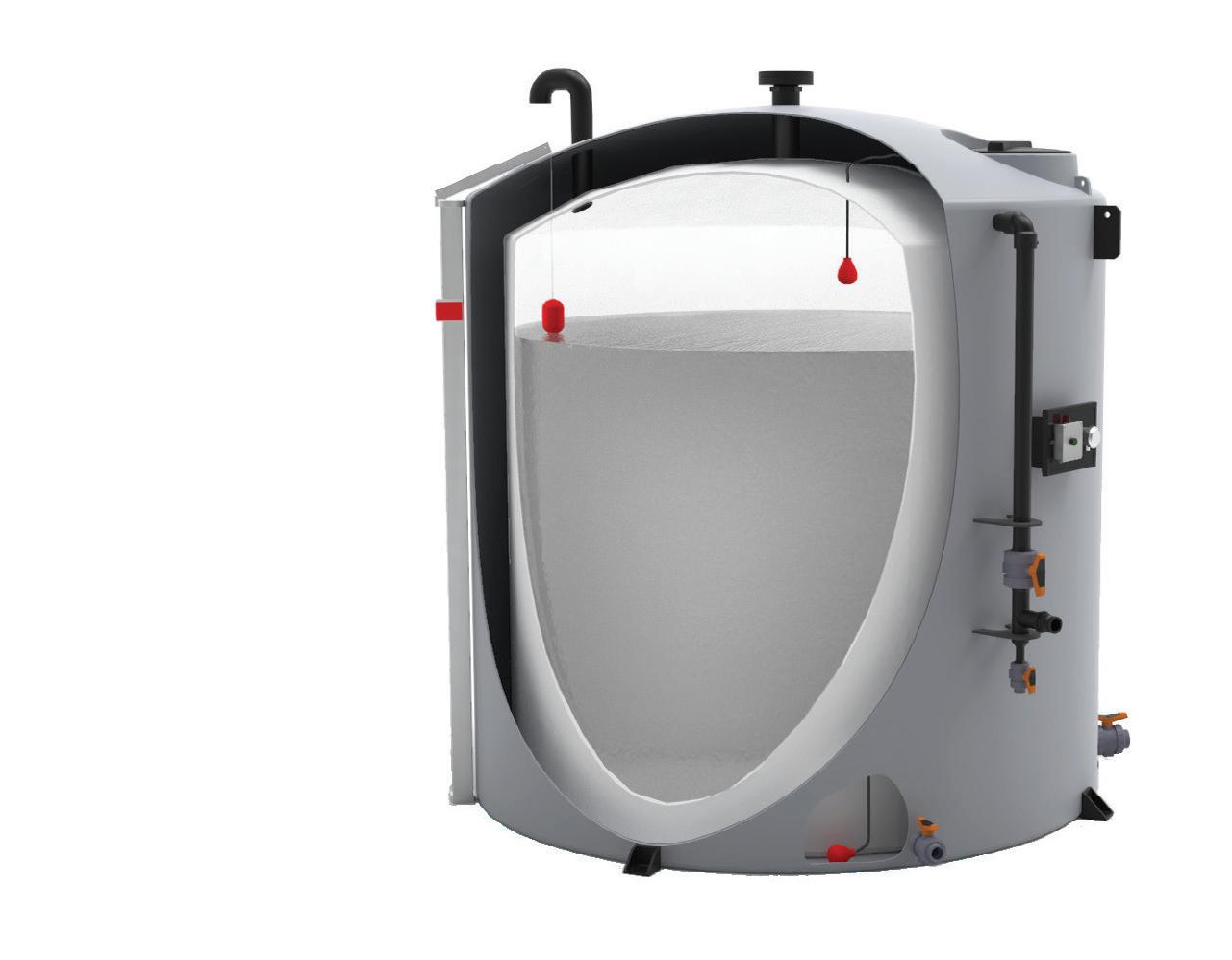
1300 062 064 | polymaster.com.au See our range 25 YEAR DESIGN LIFE
WELD-FREE REPAIR OFFERINGS making waves in the industry
Piping Specialty Supply Services (PSSS) has added the first of a range of weld-free repair and maintenance offerings from SRJ Technologies to its rental catalogue, exciting many in the industry.
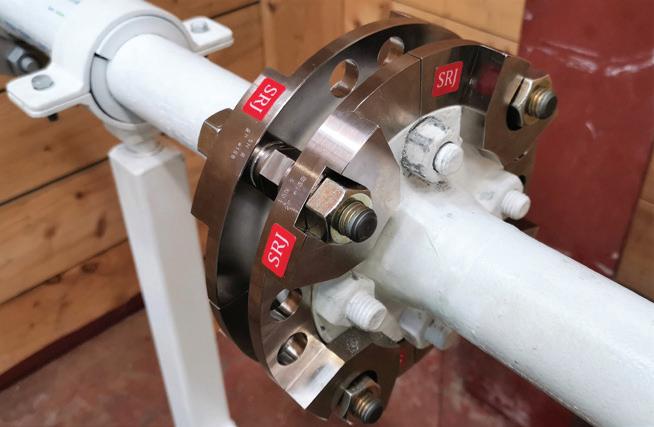
When PSSS Managing Director, John Wilton, heard about SRJ Technologies’ BoltEx® flange clamp, he knew it was the answer to an ongoing challenge in piping repairs and maintenance.
The innovative clamp is precision engineered to fit snugly and securely over pipe flange joints, enabling hot bolting to take place. Mr Wilton said the simplicity and effectiveness of the clamps make them an appealing proposition.
“There’s a very simple training process our clients can undertake so it eliminates the costs associated with bringing in specialist, third-party suppliers for repair and maintenance requirements,” Mr Wilton said.
“We had a contracting client who had been looking for years for exactly this sort of solution to help a major oil company.
“After one meeting with PSSS and SRJ, they are very excited about the prospects of having access to BoltEx, which in spite of its innovative design, is a simple and straightforward solution.”
Additional cost savings are available to contractors and asset owners because PSSS has included BoltEx in its rental equipment inventory, allowing access to the products only when required.
Mr Wilton said it’s a valuable addition to the PSSS catalogue.
The Brisbane-headquartered company specialises, as its name implies, in piping solutions for clients across the Australian oil and gas, resources and petrochemical industries among others. With an ever-growing range of solutions to help clients with shutdown, maintenance and repair tasks, PSSS helps clients at all levels of the piping supply chain.
SRJ Technologies was founded in the UK and listed on the Australian Securities Exchange in September 2020.
The company provides a range of innovative asset integrity solution technologies and provides services designed to offer greater efficiency, improved productivity and better safety outcomes for asset owners and managers.
In the piping space, in addition to BoltEx, the company provides a range of other reusable, weld-free solutions including the Multi-Shell Repair Clamp and Pipe Coupling. SRJ also offers bespoke enclosure repairs to facilitate fast and effective repairs for critical infrastructure.
Mr Wilton said PSSS is working with SRJ to build rental inventory of additional piping solutions.
According to SRJ Technologies CEO, Alexander Wood, the partnership with PSSS is a significant advantage for both companies.
“In the nine years it has been operating, PSSS has built relationships and a very good reputation across the Australian pipeline sector,” Mr Wood said.
“SRJ has some of the most innovative repair and maintenance solutions in the industry and with PSSS’s assistance, we are making great inroads to educating and exciting the market.”
Mr Wilton said while many asset owners and operators have been resistant to hot bolting, the new SRJ solutions are likely to help drive change.
“While a lot of people understand the productivity gains and cost efficiencies associated with hot bolting, many products to date have not provided them with enough confidence that risk is eliminated,” Mr Wilton said.
“When they see BoltEx, I expect those opinions will start to change.”
For more information contact Piping Specialty Supply Services on 1300 794 096 or sales@psssa.com.au.
86 UTILITY • FEBRUARY 2022 WWW.UTILITYMAGAZINE.COM.AU
SEWER REHABILITION | Sponsored editorial

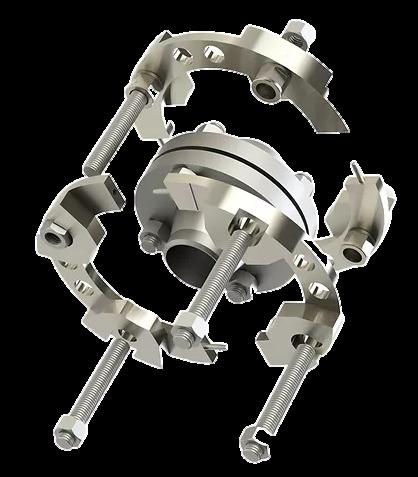



Construct ; Maintain ; Preserve Your Pipeline Assets SRJ Technologies Asset Protection Range 1 3 0 0 7 9 4 0 9 6 w w w . p s s s a . c o m . a u s a l e s @ p s s s a . c o m . a u Piping Specialty Supply Service Proudly Presents..... SRJMulti-Shell Repair Clamp SRJ BoltEx®- Bolt Exchange FlangeClamp SRJ Coupling Safe, efficient, weld-free pipe replacement Perform safe and easy flange bolt replacements Fast and secure leak containment
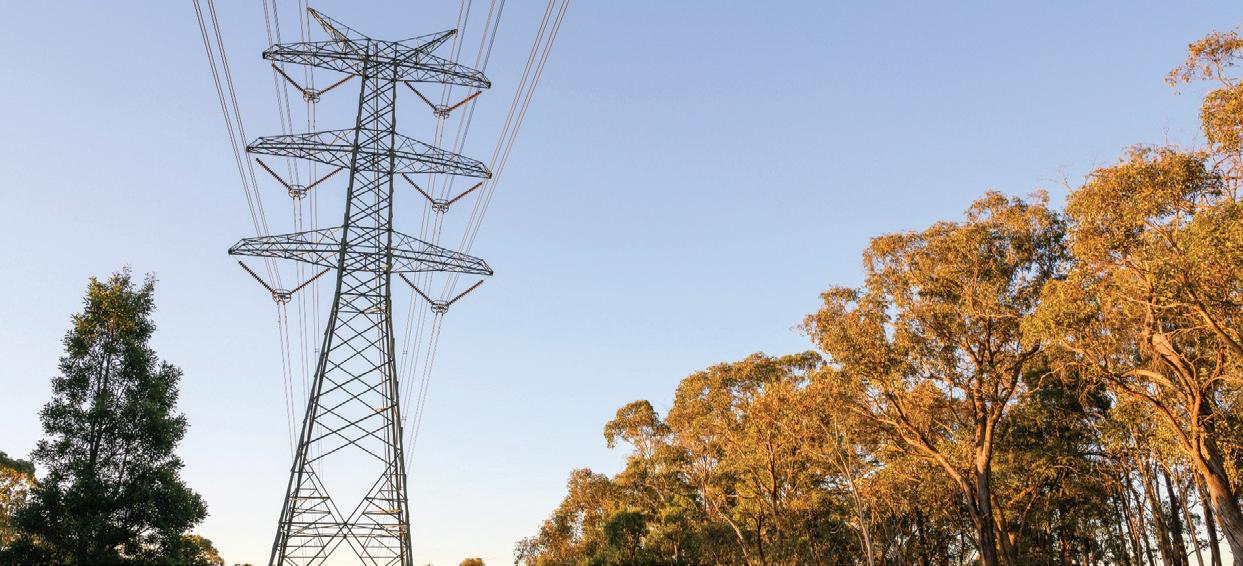
ENERGYCONNECT:
MEETING THE CHALLENGES OF A REMOTE ENVIRONMENT
Project EnergyConnect, once approved and constructed, will directly link the energy networks of South Australia and New South Wales for the first time.
The largest electricity interconnector project to date in Australia, EnergyConnect is a cornerstone of the Australian Energy Market Operator’s (AEMO) 2020 Integrated System Plan (ISP).
The ISP is a roadmap to ensure Australia has a resilient and secure grid to accommodate future renewable energy, and promote a decarbonised future.
The project has passed a cost-benefit analysis, overseen by the Australian Energy Regulator (AER) and is progressing through the final phase of a rigorous approval process.
The challenges of delivering EnergyConnect are being assessed, including the transmission route, the construction of transmission lines and substation requirements.
EnergyConnect will enable the renewable wind and solar energy generated in South Australia to flow into the New South Wales grid, helping stabilise prices in the National Energy Market (NEM).
ENERGYCONNECT TIMELINE
THE CHALLENGES OF DISTANCE
Transgrid will build the New South Wales section of EnergyConnect, ElectraNet will deliver the South Australian component and Secure Energy has been appointed as the primary contractor.
Transgrid will construct a 674km transmission line from the South Australian – New South Wales border to Wagga Wagga, linking two existing substations and one new substation.
This isolation, combined with the project’s required 50-year life span, requires that infrastructure choices assure iron-clad network reliability and security.
Yousseph Ters, Transgrid Project Integration Manager, said, “The stability of the network is vital, with outages requiring quick remediation, which will be a challenge given the remoteness of the transmission and substation infrastructure.”
INNOVATION VS TRIED AND TESTED TECHNOLOGY
Transgrid’s delivery of EnergyConnect includes an estimated 1,900 new transmission towers, linking the three substations to South Australia.
“We need to demonstrate the value that EnergyConnect will provide, balancing the concerns of landholders and affected communities with environmental, heritage and economic constraints,” Mr Ters said.
“Our Network Planning team works closely with team EnergyConnect to choose technical solutions that blend innovative transmission tower technology, with tried and tested substation installations familiar to transmission infrastructure across Australia.”
TRANSMISSION TOWERS TO SUIT THE TERRAIN
EnergyConnect is using innovative guyed tower technology, consisting of a single mast with guyed wires that spread out diagonally, providing the support required for the tower.
Guyed towers are used extensively in the US, South America, Africa and Europe in locations where the topography is flat.
Australia’s grid is often in hilly and rocky areas, so this will be the first use of double circuit guyed towers in
UTILITY • FEBRUARY 2022 WWW.UTILITYMAGAZINE.COM.AU 88
SWITCHGEAR
Phase Status Timing Preliminary investigations and project scoping Completed Regulatory Approval received in July 2021 Community and landowner consultation In progress From 2018 Project approvals In progress From early 2020 – mid 2022 Detailed Design and Site Early Works In progress Early 2021 – mid 2022 Construction Proposed From 2022 (NSW Western section) Project commissioning Proposed By 2024
Australia, with EnergyConnect using a blend of guyed and self-supporting towers.
“Guyed towers let us clear less space in environmentally sensitive areas. While the permanent footprint is slightly larger, guyed tower construction is significantly less invasive on the landscape and results in an overall better economic outcome for energy consumers,” Mr Ters said.
HELICAL SCREW PILES AIDING WATER CONSERVATION
Transgrid and Secure Energy are investigating the use of helical screw piles for new tower foundations for EnergyConnect – if deemed feasible, the screw piles will save time and money, and be the best environmental choice.
“Helical screw piles are like what they sound. We literally screw the foundations of all transmission towers into the ground with a special machine, rather than dig a foundation and fill it with concrete, which is how towers in Australia are most commonly constructed,” Mr Ters said.
“With this alternative method to build tower foundations, we will save around 6GL of water, the equivalent of 2,400 Olympic swimming pools.”
Helical screw piles also generate a lot less spoil, as foundations do not have to be excavated.
SWITCHGEAR SOLUTIONS FUTUREPROOFING SUBSTATIONS
EnergyConnect will upgrade two Transgrid substations; the Buronga substation, 20km north of Mildura, and the Wagga Wagga 330kV substation.
A new, third substation will be built roughly at the halfway point between the two, 40km south of Coleambally, at Dinawan, which is the local First Nations word for “emu”.
“We needed an intermediary point between the existing substations to add reactive support to the network.
Switchgear at Dinawan substation will include reactors, capacitor banks and synchronous condensers,” Mr Ters said.
“The section between Dinawan and Buronga will be 376km, which will be the longest continuous section of transmission line on the Transgrid network. This will also allow for a logical connection point for the proposed South Western Renewable Energy Zone.”
The remoteness of Dinawan and Buronga substations, coupled with EnergyConnect’s regulatory requirements, requires technology resilience at the highest levels.
“We considered a range of different technologies, all of them proven, standard technologies – from gas insulated switchgear, which is highly compact equipment, to air insulated switchgear and a third category called hybrid switchgear, which combines elements of both air insulated and gas insulated,” Mr Ters said.
“We came to the conclusion that air insulated switchgear, which is identical to the majority of what we have on the rest of the network, is best for EnergyConnect”.
ENERGYCONNECT’S SUBSTATION SWITCHGEAR
Buronga
The Buronga substation, through EnergyConnect, will become one of Transgrid’s largest substations, converted from 220kV to 330kV. Phase shifting transformers and two of
the four synchronous condensers of EnergyConnect will be installed at Buronga. It will have 15 diameters of breaker and a half 330kV switchgear, which will be the largest on the New South Wales network.
Wagga Wagga
The Wagga Wagga substation switchgear will be upgraded with four new double-switch switch bays, which will improve the reliability of other lines connecting into the substation.
“We have taken a cautious and minimalist approach at the existing Wagga Wagga substation, which was built over 60 years ago,” Mr Ters said.

“For EnergyConnect we have had to consider the most cost-effective completion of the project while considering the needs of future projects currently in the planning phase.”
Dinawan
A new 330kV substation will be built at Dinawan, between Buronga and Wagga Wagga, with the potential to be upgraded to a 500kV site and become an interconnection point for renewable energy supply.
Dinawan substation will provide reactive support with capacitor banks, reactors and two synchronous condensers to manage the voltage on the line, and four breaker and a half diameters of 330kV switch gear.
While being initially operated at 330kV under the EnergyConnect Project, the transmission line from Dinawan through to Wagga Wagga will be able to be operated at 500kV.
SUBSTATION SWITCHGEAR
UTILITY • FEBRUARY 2022 WWW.UTILITYMAGAZINE.COM.AU 89 SWITCHGEAR A GUYED TOWER, USED IN THE ENERGYCONNECT PROJECT FOR THE FIRST TIME IN AUSTRALIA. Transgrid substation Switchgear equipment Buronga (Existing) 5 x 200MVA Phase Shifting Transformer 2 x 100MVA Synchronous Condensers 2 x 52MVA Capacitor Banks 3 x 200MVA 330/220kV Power Transformers 37 x 330kV Circuit Breaker Switchbays 7 x 220kV Circuit Breaker Switchbays Dinawan (New) 2 x 100MVA Synchronous Condensers 2 x 52MVA Capacitor Banks 10 x 330kV Circuit Breaker Switchbays Wagga Wagga 330kV (Existing) 8 x 330kV Circuit Breaker Switchbays
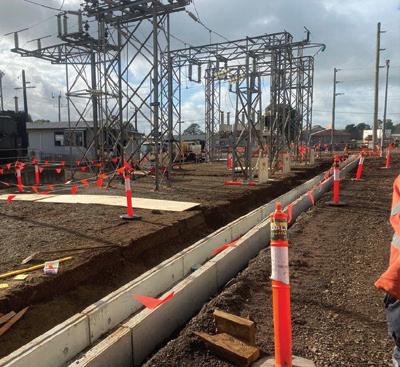
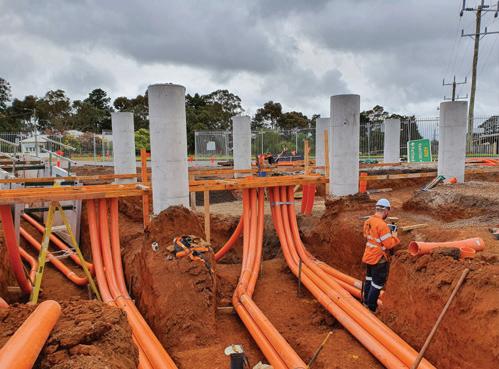

SUBSTATION CIVIL AND CABLE WORKS 50 years of
Daly’s Constructions (Australia) is a family-owned enterprise backed by 50 years of knowledge and experience, having provided substation civil and cable installation works for Australian utilities since the 1970s.
Today, Daly’s is recognised as a specialist service provider for the underground electrical infrastructure industry. Daly’s possess in-house capability and experience to manage and construct civil, structural infrastructure and cable installation work in live substation environments.
Works within substations and terminal stations requires highly skilled and experienced personnel due to the risks posed by complex and congested electrical equipment. Daly’s crews specialise in these conditions and have successfully delivered numerous substation projects throughout Australia. They have a strong understanding of utility processes and standards, and their reputation reflects their capability and performance.

UTILITY • FEBRUARY 2022 WWW.UTILITYMAGAZINE.COM.AU 90 SWITCHGEAR | Sponsored editorial

Daly’s substation experience extends to:
• General civil works, stormwater drainage and road construction
• Installation of cable racks, culverts, trays and other cable support systems
• Primary plant foundations for transformers, ring main units, capacitor banks and other primary plant
• Switch room foundations
• Bored piers or slab foundations
• Trenching
• Earth grid installation
• Cable installation into and within substations, jointing and terminating
• Substation fencing

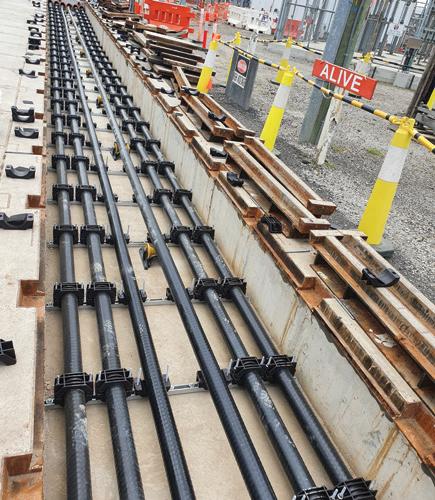
Since 2017, Daly’s has supported CitiPower and Powercor’s Rapid Earth Fault Current Limiter (REFCL) program, providing bulk earthworks, drainage, road construction, foundations, and underground civil and electrical services at the regional Victorian towns Camperdown, Winchelsea, Colac, Terang, and most recently Hamilton.




Daly’s latest endeavour saw their crews travel to Hamilton Zone Substation to install hundreds of metres of new conduit, culverts, construct concrete foundations for the new control room, transformers and switchgear, as well as complete multiple cable feeder upgrades to the surrounding area.
Daly’s Project Manager, Givantha Silva, said, "This would not have been possible without the hard work and sacrifice of our crews and subcontractors. They have spent extended periods away from their families and we are very grateful for the efforts."
Appreciating Daly’s contribution, Powercor REFCL Project Manager Ben Hatfield said, “The REFCL program has seen many challenges including, but not limited to, tight timeframes, and new standards, designs, equipment and construction methods. Time and time again, we put these challenges in front of Daly’s and they have delivered on time and with a quality finish. Daly’s have been instrumental in helping Powercor achieve the demanding milestones of the program.”

UTILITY • FEBRUARY 2022 WWW.UTILITYMAGAZINE.COM.AU 91 Sponsored editorial | SWITCHGEAR For more information, contact Daly's Constructions on 03 9360 9485 or visit www.daly.net.au
USING ACB RETROFIT SOLUTIONS TO ENSURE STABLE POWER SUPPLY
The consequences of air circuit breaker (ACB) failure can be financially costly and potentially dangerous to personnel. Retrofit solutions can help address this issue by allowing end users to modernise their ACBs with minimal downtime.
Retrofitting of ACBs is typically 80 per cent cheaper than replacing an entire switchboard, with the key components of the system able to be quickly replaced.
NHP’s ACB retrofit solutions are specifically designed to allow the existing switchboard to remain fundamentally unchanged, with only the obsolete ACB replaced. Existing busbars and cables remain unaltered, therefore simplifying the installation process and reducing downtime.

NHP is committed to supporting our customers for the life of their project and beyond. Equipped with comprehensive product knowledge, our technicians are committed to delivering the best practice of electrical services, while providing an exceptional customer experience.
Take advantage of NHP’s Total Care Package, and the peace of mind that comes from comprehensive product knowledge and best practice electrical services.
As well as improved safety and functionality, modern ACBs also clear short-circuits much faster than older models. This means that the incident arc energy is correspondingly lower, which in turn reduces arc flash hazard.
The NHP retrofit solution has been designed according to relevant Australian standards and recognised industrial practices, ensuring the controlled removal of ACBs that are obsolete and potentially dangerous.
With retrofit and upgrade options available for most brands and models of ACB, NHP can work within the existing switchboard environment to provide a cost-effective solution.
NHP’S ACB TOTAL CARE PACKAGE ENSURES PEACE OF MIND
Poorly maintained ACBs can lead to catastrophic product failure during operation. The consequences of this can be lost production, significant downtime, costly repairs and financial penalties from government safety authorities if on-site personnel are injured.
NHP created the Total Care Package, which includes year-round support, an emergency back-up service, extended warranty and many other beneficial features, all bundled into a small monthly payment to aid customers current challenges.
While the challenges faced in the industry may be complex and change throughout the cycle of a project, it is likely that your ultimate goal remains constant – to run a profitable, safe and sustainable operation.
NHP’S CUSTOMER SERVICE COMMITMENT
The NHP Service Team helps our customers achieve their goals, through services designed to minimise downtime, stabilise maintenance costs, and modernise plant assets.
NHP brings together internationally recognised power distribution and protection products with local knowledge and expertise, and a local footprint – to deliver best practice services from concept design, through to installation, project management and after-sales service.
NHP understands the complexities of your project, and that's why our products and service offerings are designed to help overcome any issues that may arise.
No matter how good a product may be, it is nothing without dedicated people to support that product; NHP is committed to excellence in servicing the needs of our customers.
If your project is focused on a profitable, safe and sustainable operation, our customised value add service and training offering is the place to start.
92 UTILITY • FEBRUARY 2022 WWW.UTILITYMAGAZINE.COM.AU
SWITCHGEAR | Sponsored editorial
more information on NHP's
your local NHP
us: Australia - 1300 NHP NHP nhpsales@nhp.com.au New Zealand - 0800 NHP NHP sales@nhp-nz.com
For
SMART Distribution products or ACB Service, please call
Account Representative or email
Boost productivity with Powerflex 6000T medium voltage drives Simple, connected, easy-to-use. Rockwell Automation and NHP bring you the PowerFlex 6000T MV drives, featuring common control architecture and TotalFORCE® technology. For more information, please call your local NHP Account Representative.

nhp.com.au
SALES 1300 NHP NHP sales@nhp.com.au
nhp-nz.com
SALES 0800 NHP NHP sales@nhp-nz.com

Yarra Valley WaterELEVATING CUSTOMER SERVICE with new technology
Yarra Valley Water is harnessing the power of technology to transform the customer experience and create seamless service.
Glenn Wilson, General Manager, Services Futures, said the organisation was on an ongoing journey of transformation as part of its commitment to customer care.
“Our award-winning Customer Experience Team has identified more than 100 unique task-based journeys to better understand what customers experience when they interact with us,” Mr Wilson said.
“These journeys track how customers interact with us, such as when they need to pay a bill, report a fault, or ask for help to understand their bill. Mapping these journeys has identified pain points for both customers and staff, revealing service gaps as well as improvement and innovation opportunities.
“Tracing customer experiences informs our work to update systems, processes, staff training and communications materials to ensure we meet expectations and that our systems are accessible and inclusive.”
The development of the new My Account portal is a key transformation project that kicked off in mid-2021 to move the organisation to a Salesforce platform.
Mr Wilson said that while an end-of-life technology replacement was the main driver of this piece of work, it presented a perfect opportunity to redesign and modernise the customer experience.
The project is being delivered by a cross-functional squad and uses the experience and skills of a number of people across the organisation.

The organisation’s Customer Experience Team was awarded a Good Design Award this year for its contribution to the project, which is expected to roll out to customers in late 2022.
The “Evolving customer digital self-service” project won the Design Research category in recognition of outstanding design and innovation.
Judges said the project was well-researched and would improve self-service uptake, increase the rate of task completion among users and drive efficiencies by reducing calls to the contact centre.
Mr Wilson said the new, user-friendly digital portal would improve usability and accessibility for customers.
“Adopting actionable parts of the CX research and what we understand about our customers will provide opportunistic customer experience improvements to self-service,” Mr Wilson said.
“And in the long term, this move to Salesforce technology will enable us to explore further improvement opportunities that will benefit us as a business and improve the service we can provide to our customers.
“It will allow them to better manage their account online and find meaningful information that meets their needs, such as monitoring their water usage and proactive alerts which are likely to come with the introduction of digital meters at some point in the future.”
Mr Wilson said the new My Account portal supported key principles in the organisation’s 2030 Strategy, which includes
UTILITY • FEBRUARY 2022 WWW.UTILITYMAGAZINE.COM.AU 94
CUSTOMER EXPERIENCE

a commitment to transform around customers, providing care, seamless service and affordability.
Another key project in the organisation’s transformation is the creation of a new online portal to assist customers needing information when they’re looking to develop land or make alterations to an existing property.
“We’ve conducted extensive customer research to understand how customers experience the complete endto-end land development journey and where we fit into that process,” Mr Wilson said.
“We identified three key groups – commercial housing developers, homeowners with limited experience looking to develop and plumbers – and they all need something slightly different from their dealings with us.
“We know that it’s been difficult for some to get knowledge and information about the land development
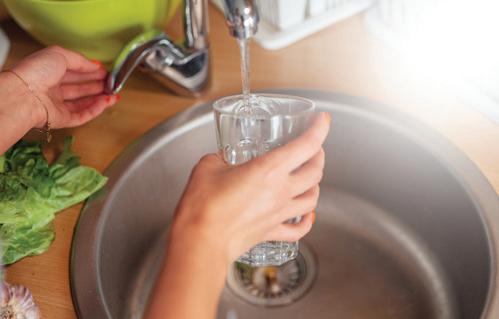
process and what they need from us, with some finding it hard to navigate through the end-to-end process.
“We’re now undergoing a full service redesign with the aim of ensuring early engagement with customers and best practice processes to create a seamless experience.”
Currently the team are building the first component, which is due to be completed by mid-2022.
“This project is a multi-year piece of work and we’re currently working through the release plan,” Mr Wilson said.
“This is to ensure we continue providing the best service to our customers during the switch over period from our current easyACCESS system to our new Land Development Portal.”
Mr Wilson said that once the work was complete, customers would have the benefits of early intervention and advice, as well as a better understanding of the overall land development process and what’s required.
“It will mean a faster, clearer process for making an application, including access to the ‘where, what and how’ to complete every step of the process. It will also make it much easier for our staff to support customers in the overall process.”
Mr Wilson said the organisation’s transformation journey would continually evolve to meet customers’ ever-changing needs.
“Our 2030 Strategy acknowledges that good customer service is about putting customers first and creating great experiences, connecting with them and giving them what they need – and that’s what we’ll continue to do.”
UTILITY • FEBRUARY 2022 WWW.UTILITYMAGAZINE.COM.AU 95
CUSTOMER EXPERIENCE
CUSTOMERS AT THE CENTRE OF THE ENERGY SECTOR
 by the Energy Charter
by the Energy Charter
Australia’s energy sector is undergoing rapid change. Pressure is building to deliver reliable, affordable, safe and sustainable energy for consumers, while making the necessary investments to support transformation from fossil-fuelled centralised generation to renewable and distributed energy.
CUSTOMER EXPERIENCE
96
Within this transition, there is a unique opportunity to align with social licence and consumer expectations. This is an ambitious cultural change piece and requires transparency, accountability and #BetterTogether collaboration.
THE NEED TO RESTORE TRUST
As the energy sector grapples with these opportunities, many Australians have been frustrated and distrusting of energy companies. In 2019, the sector experienced all-time low levels of consumer trust and confidence in the face of growing affordability and equity issues.
However, things appear to be improving. The Energy Consumers Australia sentiment survey in June 2021 found:
• Over 80 per cent of respondents were satisfied with the provision of their gas and electricity
• Over 70 per cent of respondents found that energy billing and usage information was clear and simple to understand
• Over 70 per cent of respondents were satisfied that energy was value for money
These positive sentiments reflect a very different picture to when the Energy Charter first started three years ago –with an almost doubling of the number of satisfied energy consumers. While this jump in satisfaction is due to many factors, the Energy Charter in itself signals the significant culture shift that is afoot.
TRANSPARENCY AND ACCOUNTABILITY
Transparency and accountability to customers is key for the sector. As a whole-of-sector CEO-led collaboration across 25 businesses, the Energy Charter signatories commit to five principles:
1. We will put customers at the centre of our business and the energy system
2. We will improve energy affordability for customers
3. We will provide energy safely, sustainably and reliably
4. We will improve the customer experience
5. We will support customers facing vulnerable circumstances
Every year, signatories publicly disclose how they are delivering against these principles through public disclosures, stakeholder forums and CEO interviews through an Independent Accountability Panel (IAP) process.
More than 50 stakeholders attended the recent IAP forums and provided rich feedback and diverse insights. Key issues raised included:
• Ensuring that nobody is left behind in the energy transition
• Who bears the cost of transition?
• The importance of genuine and authentic engagement with landholders and communities to build social licence
• The interplay between vulnerable communities being impacted the hardest by climate change
• The need for energy efficiency measures and other support for customers in vulnerable circumstances, as the impacts of COVID continue to be felt
• Leveraging COVID supports for customers as business-as-usual
Stakeholders noted improvements in engagement with customers through feedback loops, communications and action, including for culturally and linguistically diverse (CALD) communities. Signatories were encouraged to continue to focus on ‘lighthouse on the hill’ examples, impact and outcomes for customers.
#BETTERTOGETHER COLLABORATION
Signatories are deeply committed to co-designing #BetterTogether collaborative initiatives that:
• Focus on customer pain points and co-design opportunities through a human-centred design innovation framework to deliver better outcomes
• Drive customer-centric culture change deeper within the energy sector, creating a community of change champions across the sector
There have been a number of #BetterTogether initiatives this year, together with the signing of a historic water and energy (WE) memorandum of understanding with the water sector to align on customer outcomes.

UTILITY • FEBRUARY 2022 WWW.UTILITYMAGAZINE.COM.AU 97
CUSTOMER EXPERIENCE
CUSTOMER EXPERIENCE
The focus has been to drive robust and fit-for-purpose customer, community and stakeholder engagement activities to shape business culture and decision-making based on the voice of the customer. Businesses have engaged with consumer advocates to co-create practical resources that highlight examples of better customer engagement through:
• Shared Learning Customer Engagement Platform
• Better Practice Engagement Toolkit
• Better Practice Guide for Customer Advocacy Support
“Boards have a vital role to play in ensuring the customer voice is appropriately influencing the strategic decision-making and direction of our energy businesses.”
– Kathy Hirschfeld AM, Chair, Powerlink Queensland
CUSTOMER VOICE AT THE BOARD LEVEL
This initiative launched the ‘Customer Voice @ Board’ resource, with better practice options for businesses to ensure the customer voice is appropriately influencing the strategic decision-making and direction of their businesses. The resource contains examples of better practice engagement with customers and their representatives by existing board members.
LANDHOLDER AND COMMUNITY ENGAGEMENT BETTER PRACTICE
The Better Practice Landholder and Community Engagement Guide was launched with the National Farmers’ Federation as a guide for landholders and communities on what to expect when businesses engage about energy assets, particularly those critical for energy transition.

The guide:
• Shares the high-level principles that help guide engagement
• Assists in the management of business impacts on landholders and communities
• Guides mutual value opportunities which may exist
COVID-19 RESPONSE
Through our 12-month Deloitte COVID-19 Customer Vulnerability Research, we learnt that while optimism in the general population is improving, there were ongoing negative impacts on the emotional and financial wellbeing of customers.
Initiatives for additional support for customers included the Voices for Power “Train the Trainer” program in CALD communities, knocking on customers’ doors to avoid energy disconnections, and collaborating on awareness communications, including ‘We’ve got you’, to let customers know what support is available to them.
Recently, signatories committed over $1.5 million over the next 12 months to deliver and augment a range of programs across Australia, including with community organisations such as Uniting, to step up support for customers in vulnerable circumstances.
CULTURE CHANGE GAINING MOMENTUM
As the energy sector transforms, alignment with community expectations remains critical. Consumers expect authenticity from business leaders. Sustained culture change towards customer centricity within the energy sector will take time. More work needs to be done to shift to a customer-centric mindset and increase the customer voice.
However, the power of collaborative engagement through the Energy Charter and its #BetterTogether initiatives is gaining momentum. Genuine engagement with customers and communities, together with driving tangible customer improvements is essential in this ‘customers at the centre’ journey.
ABOUT THE ENERGY CHARTER
The Energy Charter is an industry and customer-led, world-first, whole-of-sector initiative to address customer expectations. Its vision is that together, we will deliver energy for a better Australia. The purpose of the Energy Charter is to progress the culture and solutions needed to deliver a more affordable, reliable and sustainable energy system for all Australians in line with community expectations.
Energy Charter full signatories include: ActewAGL, Aurora Energy, APA, Ausgrid, Australian Gas Infrastructure Group, CS Energy, Endeavour Energy, EnergyAustralia, Energex, Energy Queensland, Ergon Energy, Essential Energy, Horizon Power, Jemena, Ovida, Powershop, Powerlink Queensland, Stanwell, TasNetworks, Transgrid and Yurika.
#BetterTogether collaborators include: SA Power Networks and Simply Energy. Energy Charter Supporters include the Australian Energy Market Operator (AEMO).
UTILITY • FEBRUARY 2022 WWW.UTILITYMAGAZINE.COM.AU 98
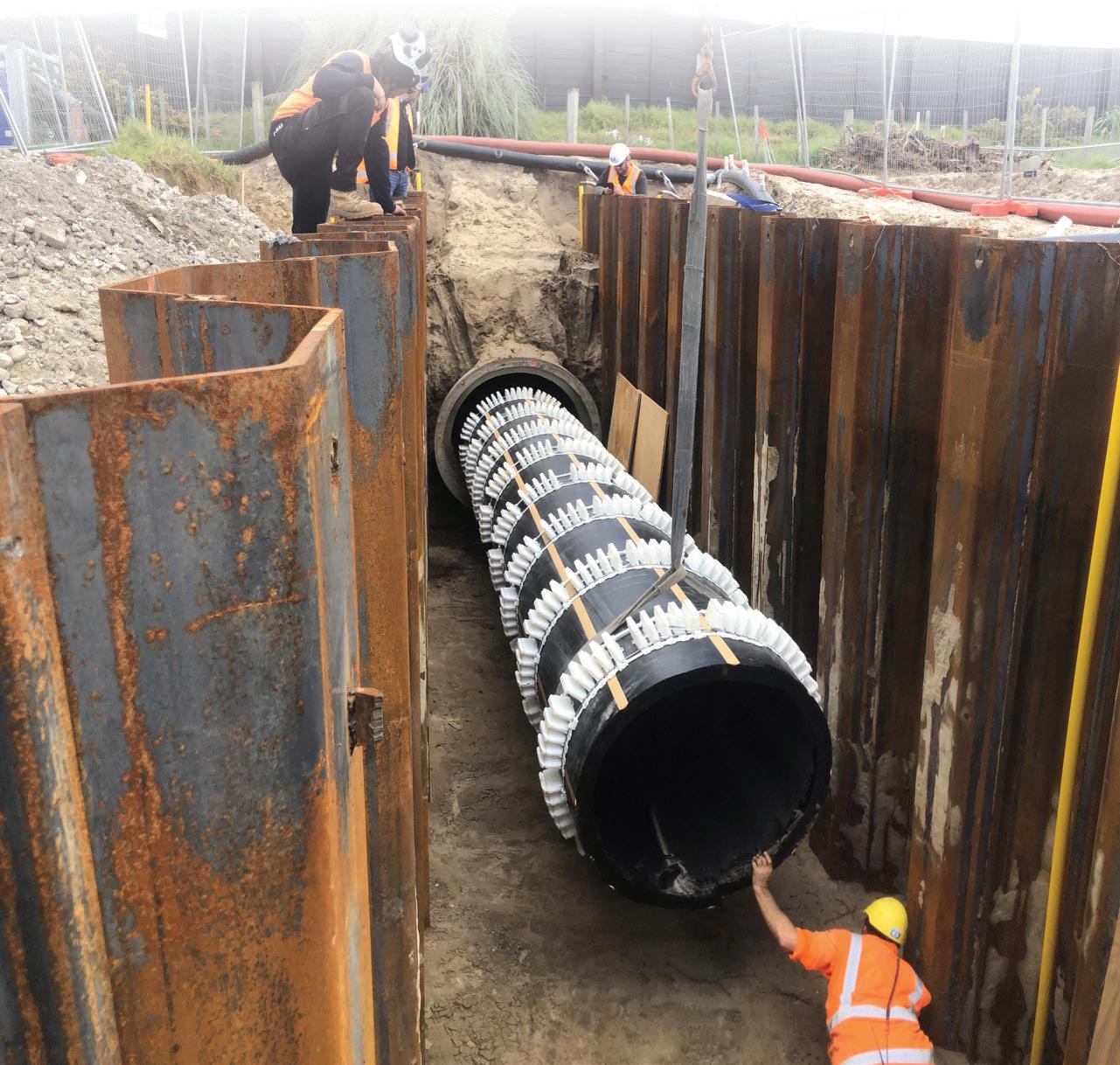

KWIK-ZIP’S HDX SERIES CASING SPACERS COMPLY WITH WSAA PRODUCT SPEC #324 – CASING SPACERS; REFER WSAA PRODUCT APPRAISAL REPORT #1523 Is your pipe spacer compliant? Call us for details on ordering P (08) 9725 4678 sales@kwikzip.com www.kwikzip.com
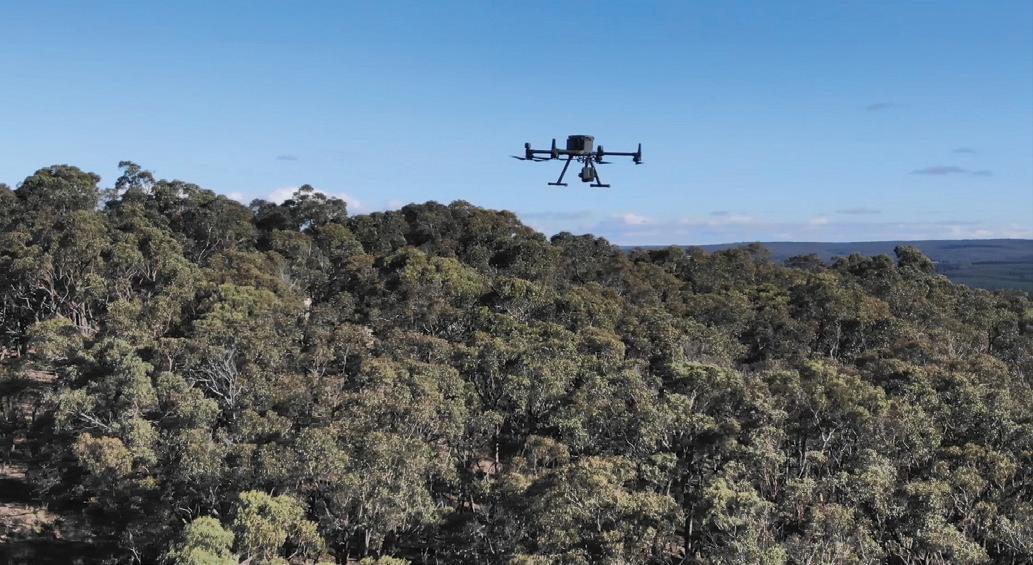
EYE IN THE SKY HELPING POWERCOR MANAGE NETWORK INSPECTIONS
by Powercor
Powercor details its largest drone trial across western Victoria as the electricity distributor investigates how the technology may be used in the future to maintain a safe and reliable network for homes and business.
Take a moment to imagine yourself among thick, ferny undergrowth, soaring treetops, deep valleys and lofty peaks.
There’s pristine beaches meeting temperate rainforests containing all manner of wildlife.
You’re in Victoria’s Great Otway National Park which, together with surrounding forests, make up a remote wilderness stretching from the iconic Great Ocean Road to prime dairy country in Western Victoria.
Tranquil streams, hiking trails and scenic lookouts punctuate this landscape.
So do several high voltage powerlines stretching from Colac to the north, winding their way through the heavily forested Otways, towards coastal towns to the south.
These are important powerlines, providing electricity to some key coastal tourist destinations such as Apollo Bay and Skenes Creek, as well as the mountain-biking mecca of Forrest.
Responsible for inspecting and maintaining these powerlines, poles and associated infrastructure is Powercor, Victoria’s largest electricity distributor.
Inspections are critical to identifying any faults, or potential faults, on the network which in turn allows Powercor’s maintenance teams to ensure electricity is delivered safely and reliably.
And until recently, these assets were inspected largely by road and, for the more remote poles, by foot patrols.
But over the past 18 months these teams have had a helping hand, or more accurately, an eye in the sky.
DECENTRALISED DRONE OPERATOR MODEL
Powercor is trialling two separate approaches to using unmanned aerial vehicles, or drones, to assist with its network inspection programs.
And it’s not just the Otways which have had drones overhead.
The largest drone trial occurred during September and October and included an inspection of 10,000 poles in areas around Bendigo, Clunes, Woodend, Winchelsea, Colac and Wemen.
Inspections also occurred throughout the Wimmera, parts of the Surf Coast and areas south of Ballarat.
For this trial, the work was conducted by individual licensed drone operators across the state in a decentralised model.
The drone operators captured high resolution images which were then used by Powercor’s own asset inspectors to assess whether any maintenance was required for each asset.
Powercor’s Head of Digital, Luke Skinner, said the benefit of this type of drone inspection program was they could
UTILITY • FEBRUARY 2022 WWW.UTILITYMAGAZINE.COM.AU 100
DRONES
cover large areas quickly and capture in greater detail information about power assets.
“This trial is about finding new ways to keep our network operating safely and reliably,” Mr Skinner said.
“We operated these drone inspections alongside our traditional inspection program to allow us to analyse results and accuracy.
“Our highly-experienced asset inspectors examine the images captured by the drones and if they detect defects, they will direct these to our maintenance teams to address.”
CONTINUOUS PROGRAM OF ASSET INSPECTION
It’s not the first trial Powercor has conducted using drones – and it’s not the only model used either.
Previous trials have been more targeted, using established drone operators with sophisticated platforms to conduct operations in areas with difficult terrain.
These trials, in places such as the Otways, areas south of Ballarat and around Charlton, Wedderburn and Bridgewater have inspected between 50 and 200 poles each.
They included thermographic imaging, which seeks out ‘hot spots’ on the network which give clues about likely faults before they even occur.
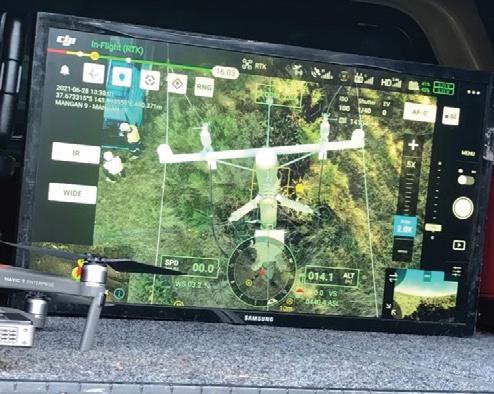
These smaller, targeted drone inspections have also assisted in detailed inspections of powerline conductors themselves, hovering close above a powerline and traversing its entire span to look for corrosion or other defects.

The specialist teams operating these trials were using the Matrice 300 RTK – a powerful industrial drone platform with an advanced flight controller system, six-directional sensing, real-time video transmission, thermal imaging and obstacledetection systems.
“These ongoing trials are building our knowledge and understanding about how this new technology may be incorporated into our annual program of work inspecting poles, powerlines and other infrastructure,” Mr Skinner said.
The work is in addition to Powercor’s ongoing continuous program of asset inspections, which are also being conducted by crews in vehicles, on foot and by helicopter.
Powercor manages its network of almost 90,000km of powerline and 588,000 poles through a rigorous inspection and maintenance program, on top of a network-wide vegetation management program clearing trees and shrubs well away from powerlines.
For more information on Powercor’s inspection programs, visit www.powercor.com.au.
DRONE FAST FACTS
Model: Matrice 300 RTK
Dimensions: 810×670×430 mm (L×W×H)
Weight: Approx. 3.6kg (without batteries) and 6.3kg (with two TB60 batteries)
Max Speed: 83km/h
Average operation speed: 3km/h
Max Ascent Speed: 6m/s
Max Descent Speed (vertical): 5m/s
Max height of operation: 5000m
Operational height above powerlines: 4m
Max Flight Time: 55 min
UTILITY • FEBRUARY 2022 WWW.UTILITYMAGAZINE.COM.AU 101
DRONES
What pipe is most appropriate for different microtunnelling projects?
Pipe selection can make or break a project so to speak; the wrong pipe can make a project more difficult to complete, increase time and costs, or at worst, fail, while the right pipe will help reduce risk, enhance accuracy, reduce cost and improve the overall success of installation. But with a number of pipe materials available, how do you know which one is right for your application? This will come down to a number of factors – some of which have a greater impact than others – including ground conditions along the route of the pipeline, method of installation, budget, application type, deadline and specifications such as diameter.
CLAY PIPES
Clay pipes are resistant to most chemicals, and ideally suited for areas where ground conditions are acidic or contaminated. As they are totally inert and rigid, they have high abrasion resistance, low friction coefficients and a high load carry capacity.
• Suited for: gravity flow sanitary sewers
• Not suited for: pressure applications
• Diameter availability: eight to 24 inches
• Design life: 200+ years
DUCTILE IRON PIPES
Ductile iron pipes have high dependability as they are ductile, strong, and impact and corrosion resistant, making them ideal for high pressure applications, as well as for pipelines that go under areas of extreme traffic loads, heavy backfill or earth movements.
• Suited for: gravity and pressure applications including potable water, slurry pumping, sewage and process chemicals applications
• Diameter availability: three to 64 inches
• Design life: Indefinite if properly designed and installed
HIGH DENSITY POLYETHYLENE (HDPE) PIPES
HDPE has good abrasion, corrosion and chemical resistance, but is limited in use where there are tight deadlines due to the need to string out the line to reduce installation time.
• Suited for: all underground utilities
• Not suited for: higher temperature or pressure applications
• Diameter availability: ¾ to 65 inches
• Design life: Minimum 100 years when properly designed, installed, inspected and operated
• Possible methods of installation: typically HDD is used as it requires a trail out trench which is detrimental to the shaft construction and overall keyhole pipeline advantages of microtunnelling. However, the AXIS laser guided boring system offers microtunnelling installations for HDPE pipes using a pullback method
CENTRIFUGALLY CAST GLASS FIBRE REINFORCED PLASTIC (CC-GRP) PIPES
CC-GRP pipes such as HOBAS have a number of cost saving benefits, including corrosion resistance, high stiffness, smooth interior surface and oversize interior diameter, and bottletight joints.
One of the key advantages is that they do not require a packing ring which is considered to be the weakest point of a jacking pipe.
They can be economically designed for both non-pressure and pressure services by varying the quantity, placement and orientation of the glass-fibre reinforcements, making them versatile and ideal for almost all large diameter corrosive applications.
• Suited for: potable water, force main or gravity sewers, and all applications where there is a corrosive carrier or external environment
• Diameter availability: 18 to 158 inches
• Design life: 100+ years
POLYVINYL CHLORIDE (PVC) LOCKED PIPES
PVC is well known for its performance, but is typically limited to installation in areas with consistent, self-supporting ground or within a casing pipe as they are generally not suited to being installed via jacking.
There can be extra cost associated with these pipes as they have collars which require the use of centralisers to eliminate wear, and most contractors will recommend grouting the annulus to prevent pipe deflection from point loading.
• Suited for: potable water, reclaimed water, sewer force main, gravity sanitary sewer, and storm sewer pipe and fittings
• Not suited for: higher temperature or pressure applications
• Diameter availability: pressure pipe is available from four to 60 inches while gravity sewer pipe is available from three to 60 inches
• Design life: 100+ years when designed, installed and operated correctly
• Possible methods of installation: typically better suited for slip lining and HDD, but there are now limited options available that will allow jacking and pullback without collars which can increase the accuracy of installation and reduce risks
STEEL PIPES
Steel pipes have good strength, durability and elasticity, making them ideal for applications where high resistance to internal and external pressure is required. These characteristics also mean steel pipes can be installed using a number of methods including HDD, jack and bore, and pipe ramming.
• Suited for: water and wastewater, gas and oil, water well casing, pile driving and caisson sleeves
• Not suited for: chemical or corrosive service without internal or external protective coatings
• Diameter availability: pressure pipe is available from four to 60 inches while gravity sewer pipe is available from three to 60 inches
• Design life: 100+ years when designed, installed and operated correctly
ABOUT STUART HARRISON
Global microtunnelling pioneer Stuart Harrison is the Managing Director of Edge Underground, where he specialises in on-grade microtunnelling installations with millimetre accuracy.
Stuart is also the inventor of the AXIS Guided Boring system, and he is constantly working to improve the effectiveness of this and other trenchless systems used in the installation of gravity sewers.
To discuss your next microtunnelling installation, contact Stuart on 1300 JACKED or at stuart@edgeunderground.co
102 UTILITY • FEBRUARY 2022 WWW.UTILITYMAGAZINE.COM.AU
BRISBANE 16-18 MARCH

Brisbane Convention & Exhibition Centre
Exhibition + Sponsorship Opportunities are still available!
For further information visit: www.EN2022.com.au
PRINCIPAL SPONSOR
Early specialsBird extended
MAY 2022
NOVEMBER 2022
MAJOR FEATURES RENEWABLES
DISASTER MANAGEMENT RETAIL, BILLING & CRM SPECIAL FOCUS
& SUBSTATIONS PIPELINE INTEGRITY & LEAK DETECTION DAMS LAND ACCESS
FEBRUARY 2023
UTILITY • FEBRUARY 2022 WWW.UTILITYMAGAZINE.COM.AU SECTION 104 EDITORIAL SCHEDULE Advertisers’ index Access Detection 9 Aerometrex 79 AMS Instrumentation & Calibration 23 Armorgalv 29 Bintech Systems 12 Boerger Pumps Asia 11 Burkert Fluid Control Systems 59 Daly's Constructions (Australia) 90 Edge Underground 5, 102 Energy Networks 2022 103 Enviroline Group 18 Fluke Australia IFC, 48 FMT-Field Machine Tools 25 Georg Fischer Piping Systems 63 Harcor 24 InEight 10 Interflow 55 Iota Services 34 Itron 13 Kwik-Zip 99 Lanco Group 14 Logsys Power Services 15 Maxibor Australia 31 Mc Robert Contracting Services 39 Metasphere Australia 83 mIoT 7, 19 NHP Electrical Engineering Products 93 Pezzimenti Trenchless 20 Piping Specialty Supply Service 87 Polymaster 85 Proco Products Inc 21 Projex Group 22 Pulsar Process Measurement 16 RIDGID Australia OBC SalesForce 38, 49 Steel Mains 17 Taggle Systems 40 True Water Australia 53 VEGA Australia 27 Veolia Water Technologies (Australia) 8 Vermeer Australia 41 we-do-IT 77 WIOA IBC EVENT DISTRIBUTION (TBC) AUGUST 2022 MAJOR FEATURES WATER OPERATIONS AND TREATMENT STORMWATER ASSET MANAGEMENT SMART GRIDS SPECIAL FOCUS GAS PIPELINES TRENCHLESS TECHNOLOGY IoT AND SCADA IRRIGATION WASTE MANAGEMENT EQUIPMENT & MACHINERY PUMPS, VALVES & FILTERS PIPE & CONDUIT SALES DEADLINE 24 JUNE 2022 MAJOR FEATURES BIG DATA CYBER SECURITY SOLAR SYDNEY WATER SPECIAL FOCUS MAPPING, GIS & SURVEYING UTILITY LOCATION SEWER REHABILITATION
DISTRIBUTED
CUSTOMER EXPERIENCE EQUIPMENT & MACHINERY DRONES SWITCHGEAR
EMBEDDED NETWORKS
GENERATION
SALES DEADLINE 9 DECEMBER 2022 EVENT DISTRIBUTION
(TBC)
DEMAND
EQUIPMENT & MACHINERY SMART METERS MICROTUNNELLING SALES DEADLINE 1 APRIL 2022
LOCATE22 EVENT DISTRIBUTION EVENT
MAJOR FEATURES WATER MANAGEMENT
MANAGEMENT ENERGY NETWORKS SUSTAINABILITY SPECIAL FOCUS INSPECTION, CCTV & CONDITION ASSESSMENT MOBILITY VEGETATION MANAGEMENT ENERGY STORAGE FUTURE FUELS
OZWATER
DISTRIBUTION (TBC)
SAFETY EQUIPMENT &
HORIZONTAL
SALES DEADLINE 16 SEPTEMBER
CORROSION
TRANSFORMERS
MACHINERY
DIRECTIONAL DRILLING (HDD)
2022
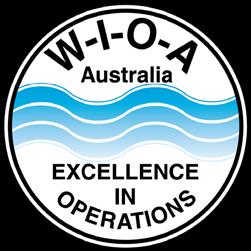
Water Industry Operations Conference & Exhibitions 2022
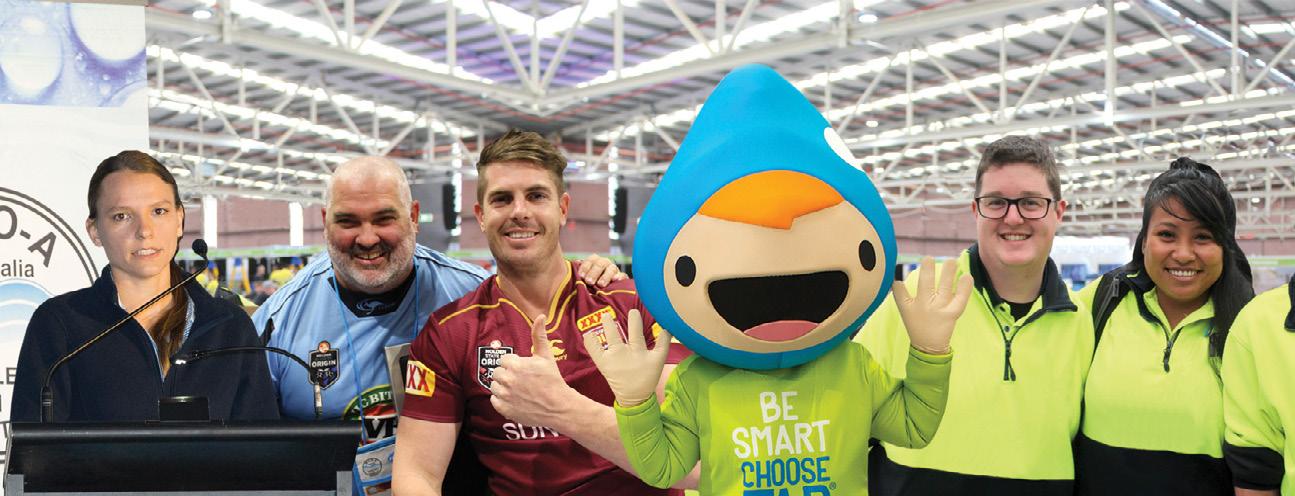
Personnel involved in the operation and maintenance water related infrastructure should attend these conferences. A great forum for all involved in water operations to:
• Listen and learn from the experience of others through the latest information
• View and discuss technical equipment, products and services with suppliers
• Update knowledge and skills through interaction with other water industry employees

QLD 3+4 August VIC 23+24 February SA 20+21 Sept NSW 6+7 April SAVE THE DATES www.wioaconferences.org.au info@wioa.org.au 03 5821 6744 BE COVIDSAFE REGISTER TODAY























































































































































































































 Wastewater Stormwater Culverts Water
Wastewater Stormwater Culverts Water








 by Annabelle Powell, Journalist, Utility magazine
by Annabelle Powell, Journalist, Utility magazine































































 by the Energy Charter
by the Energy Charter













